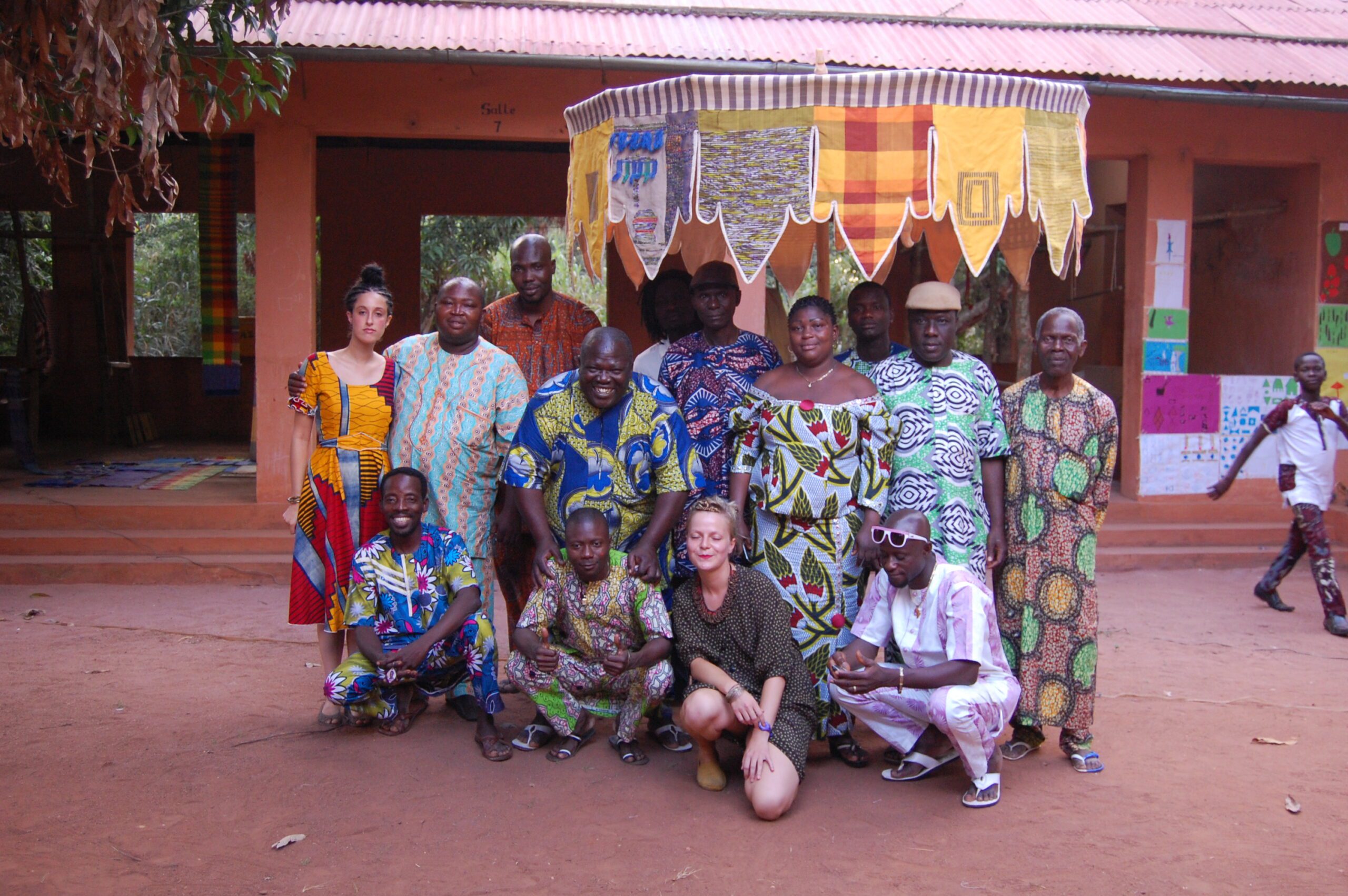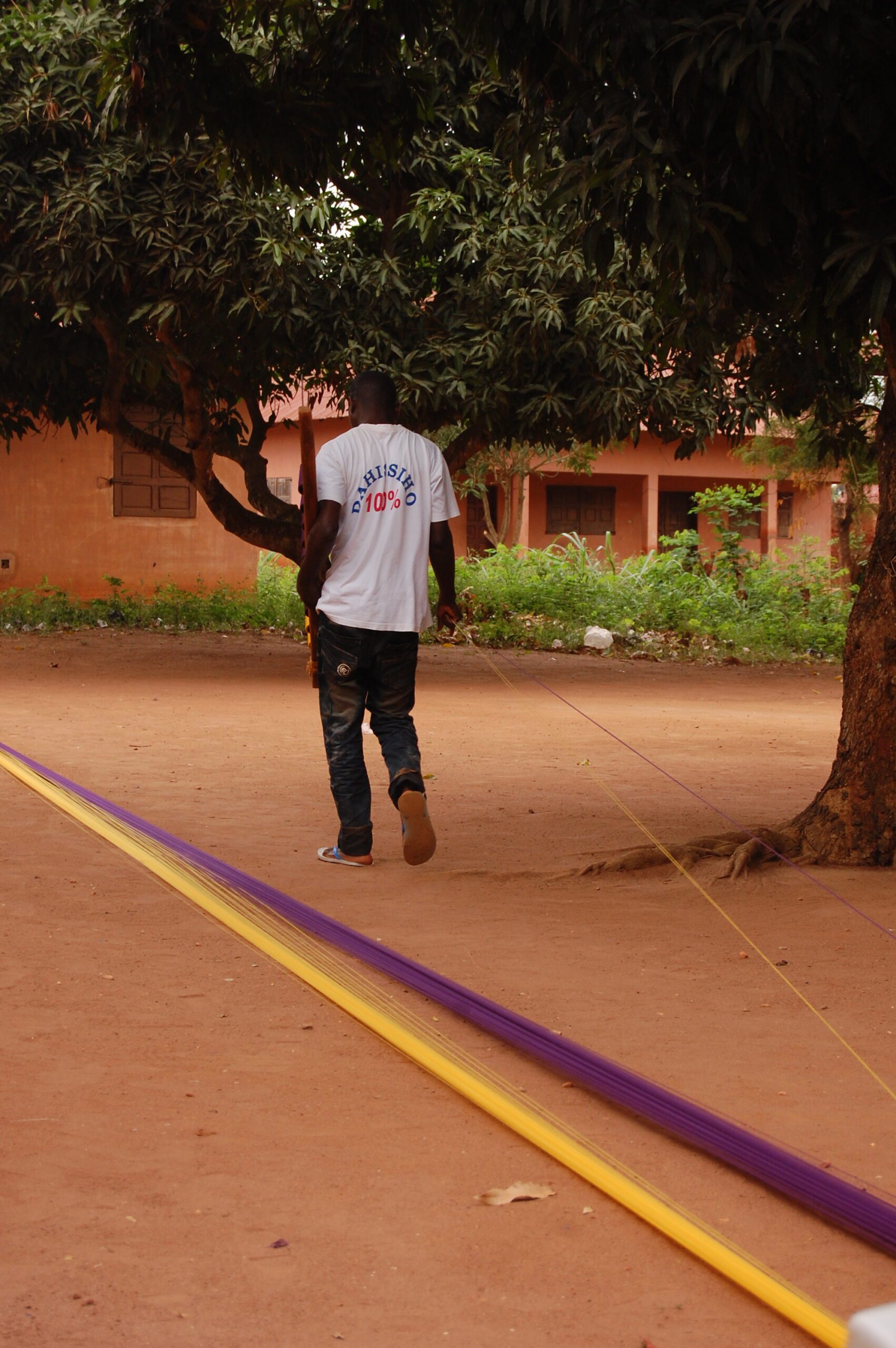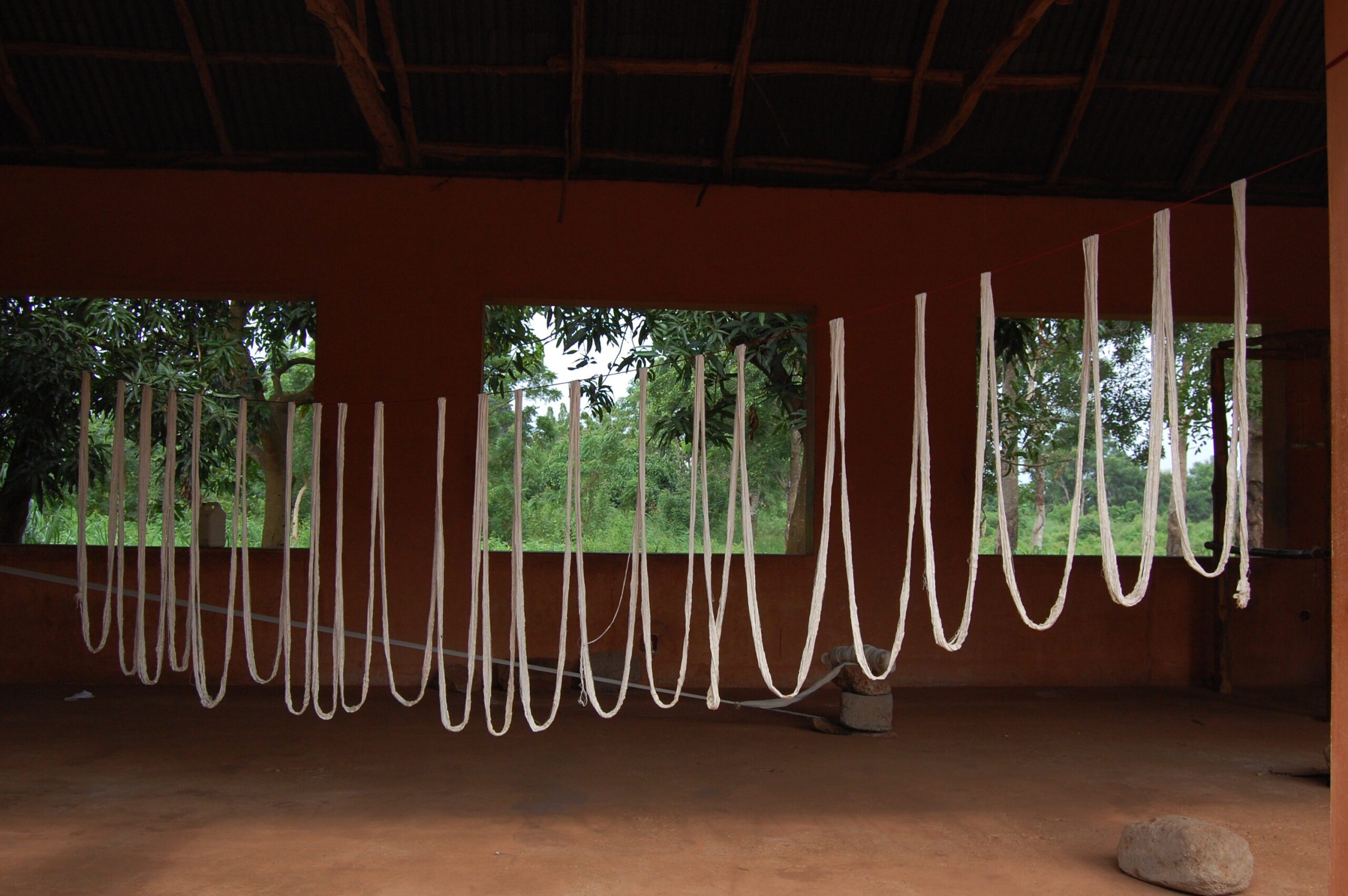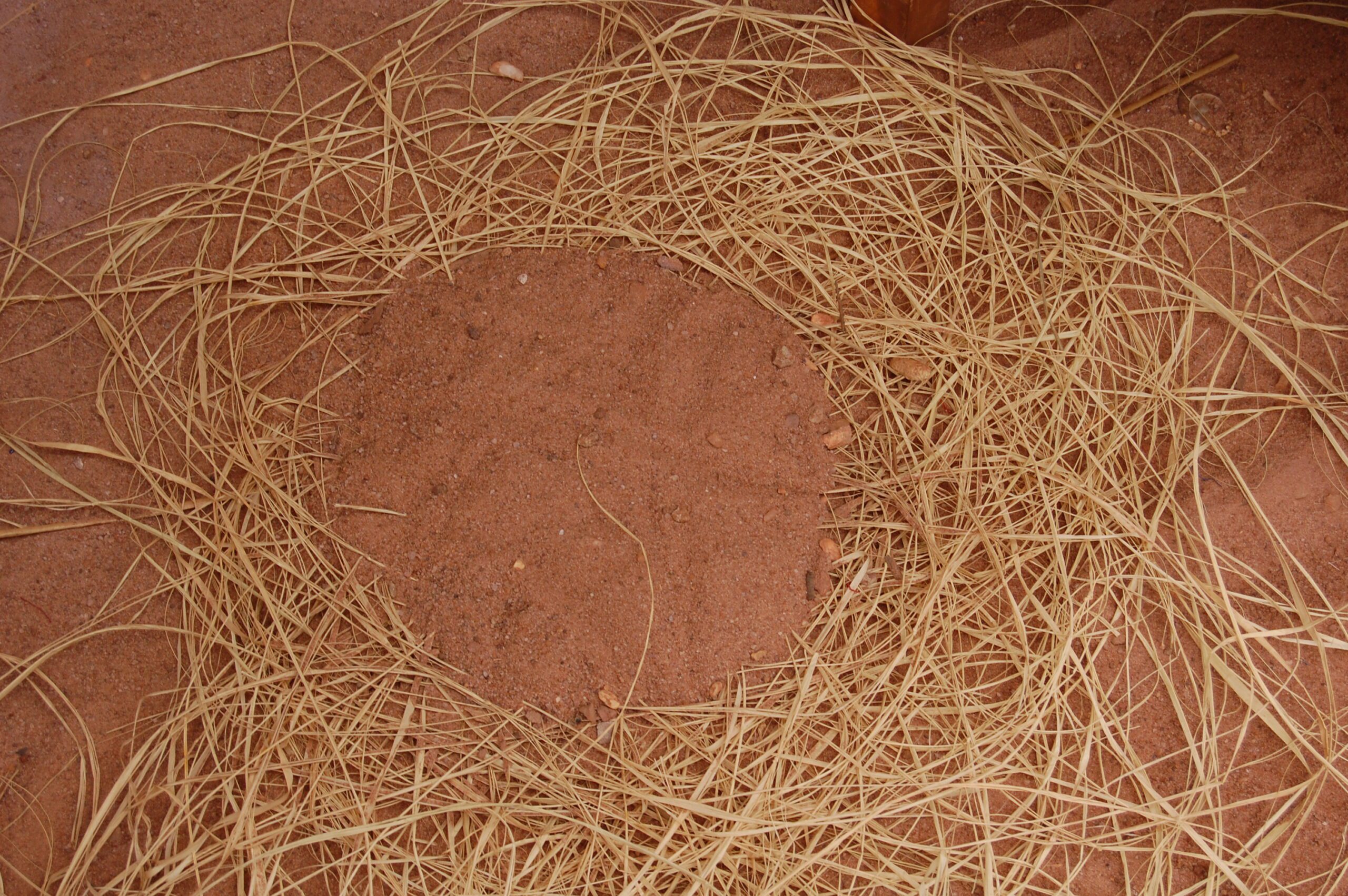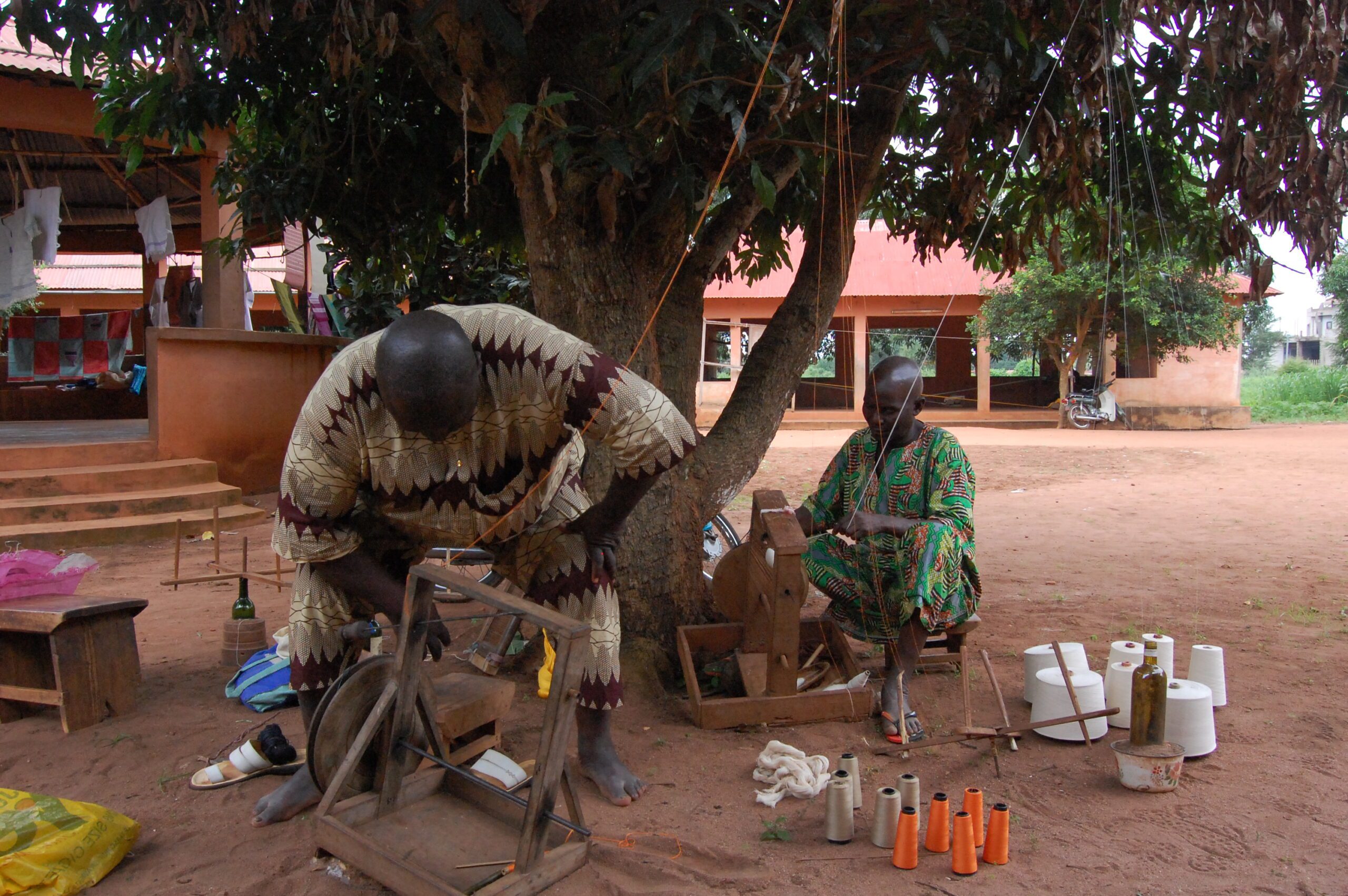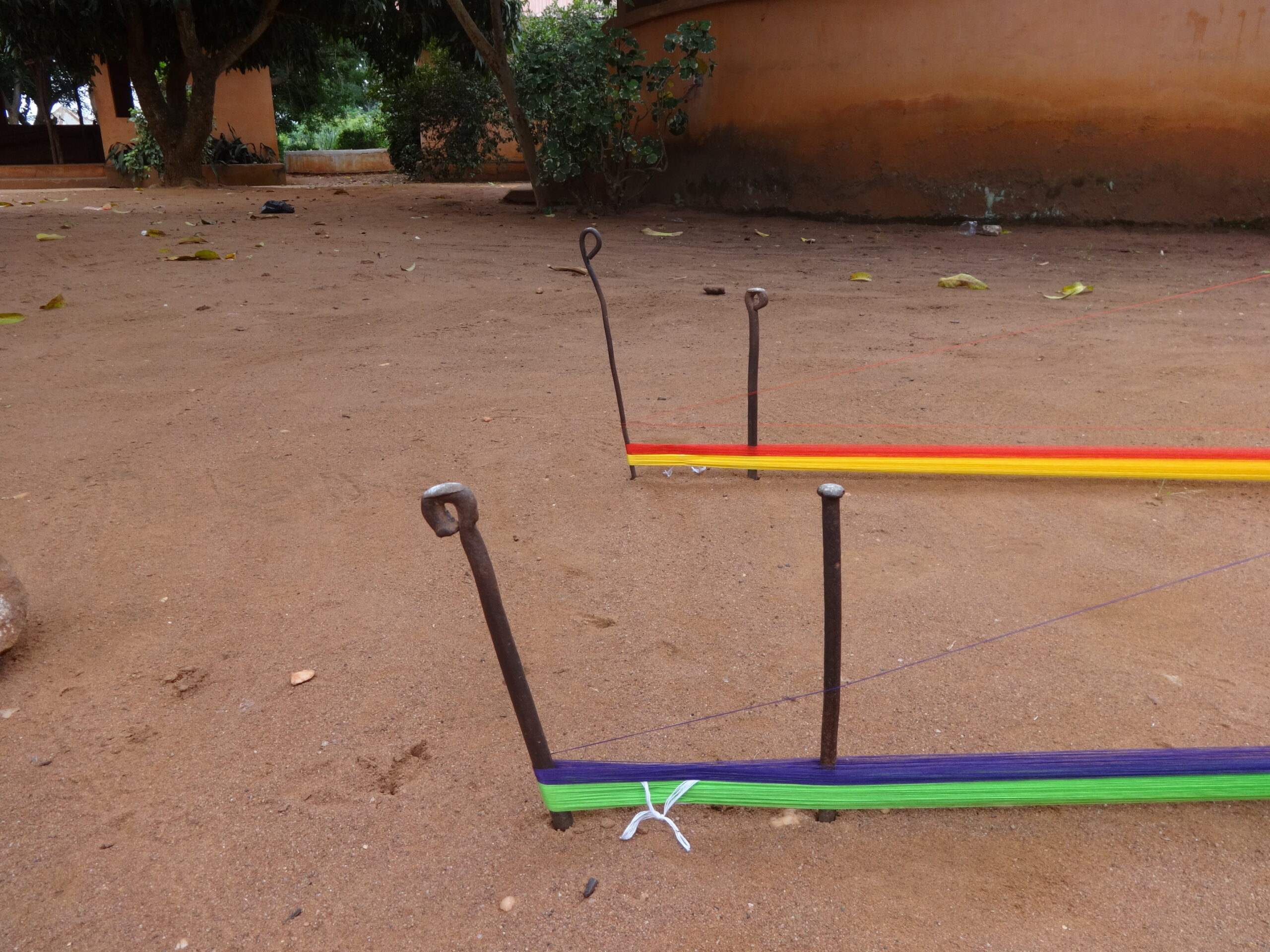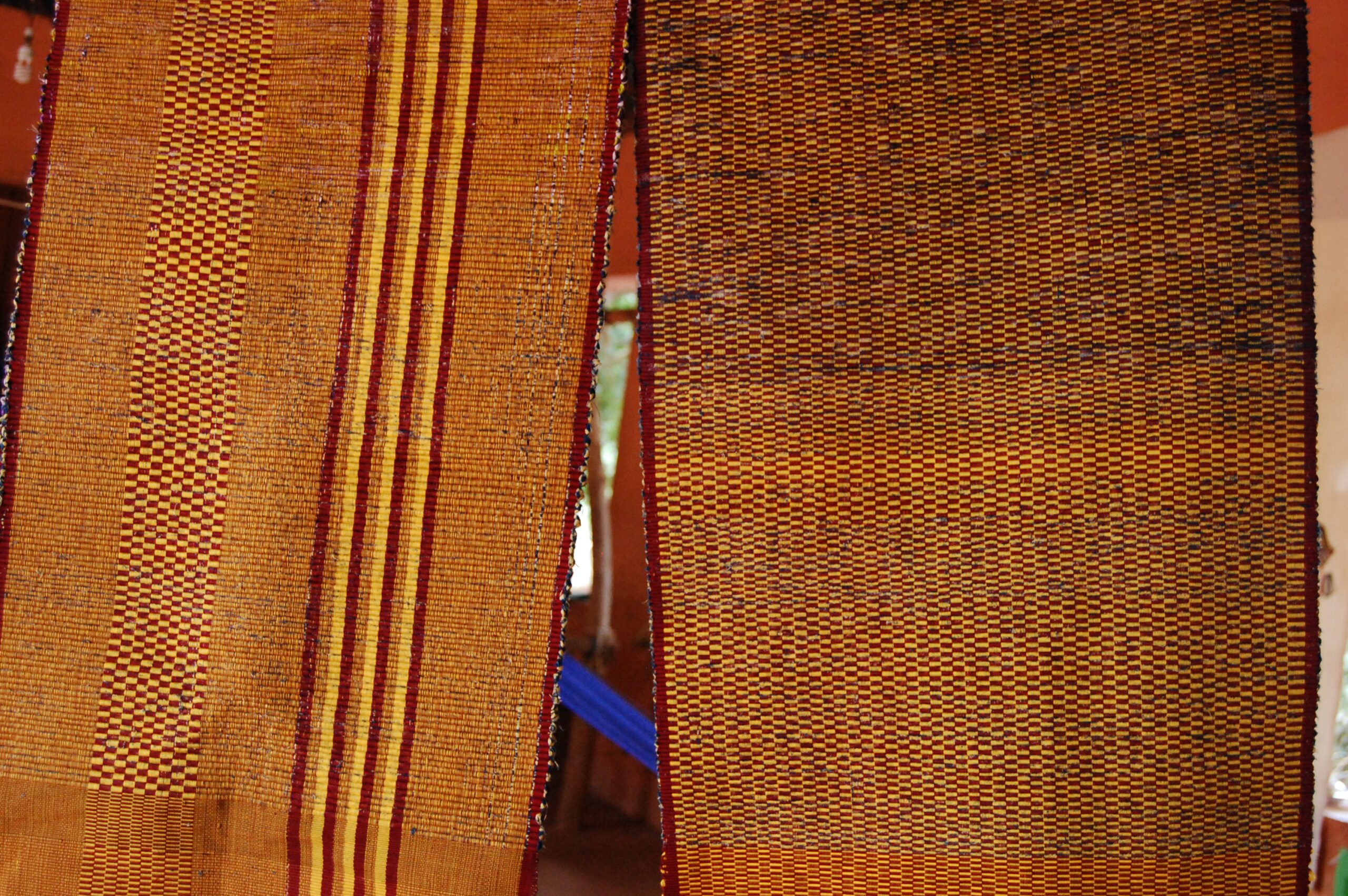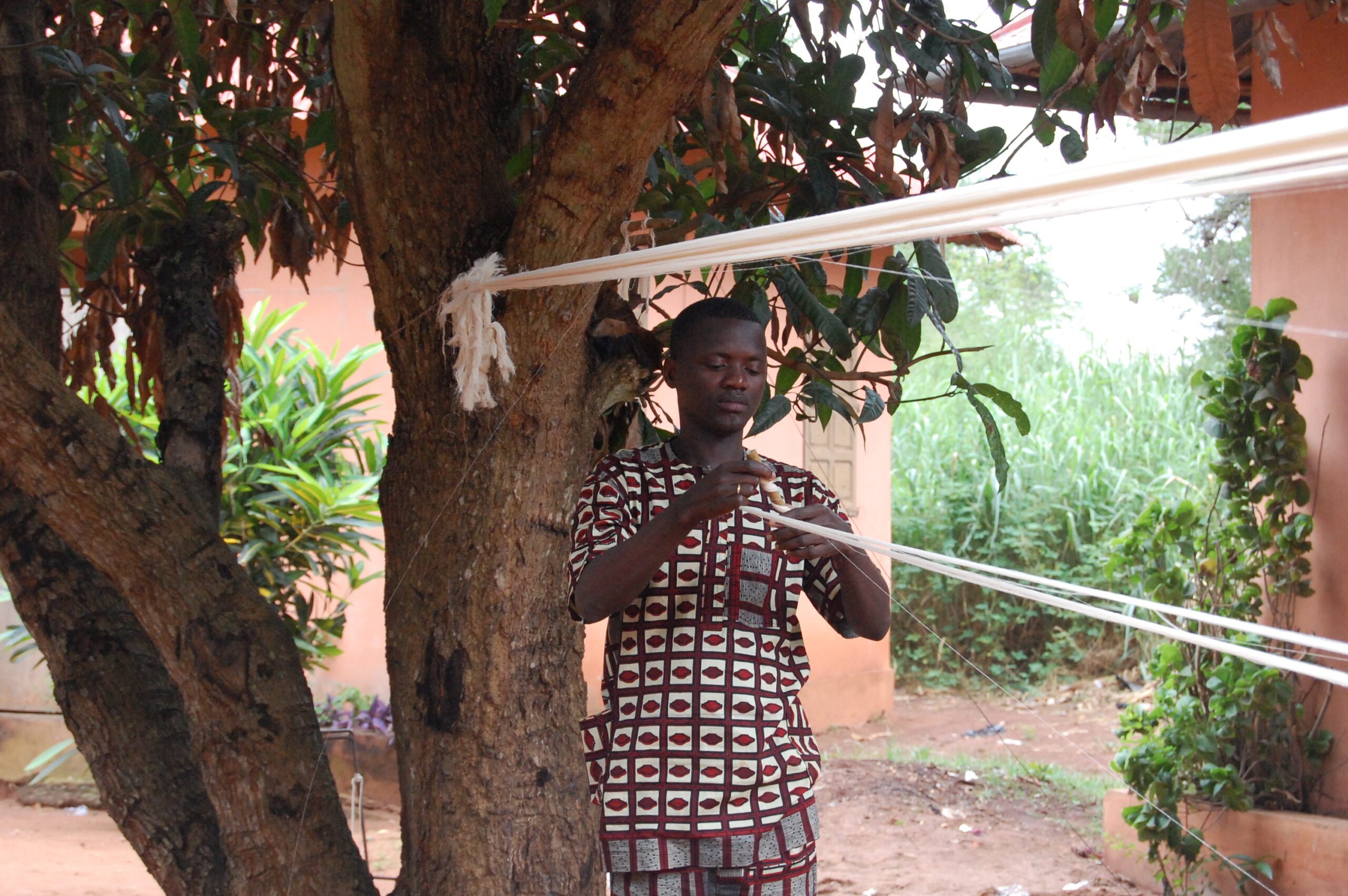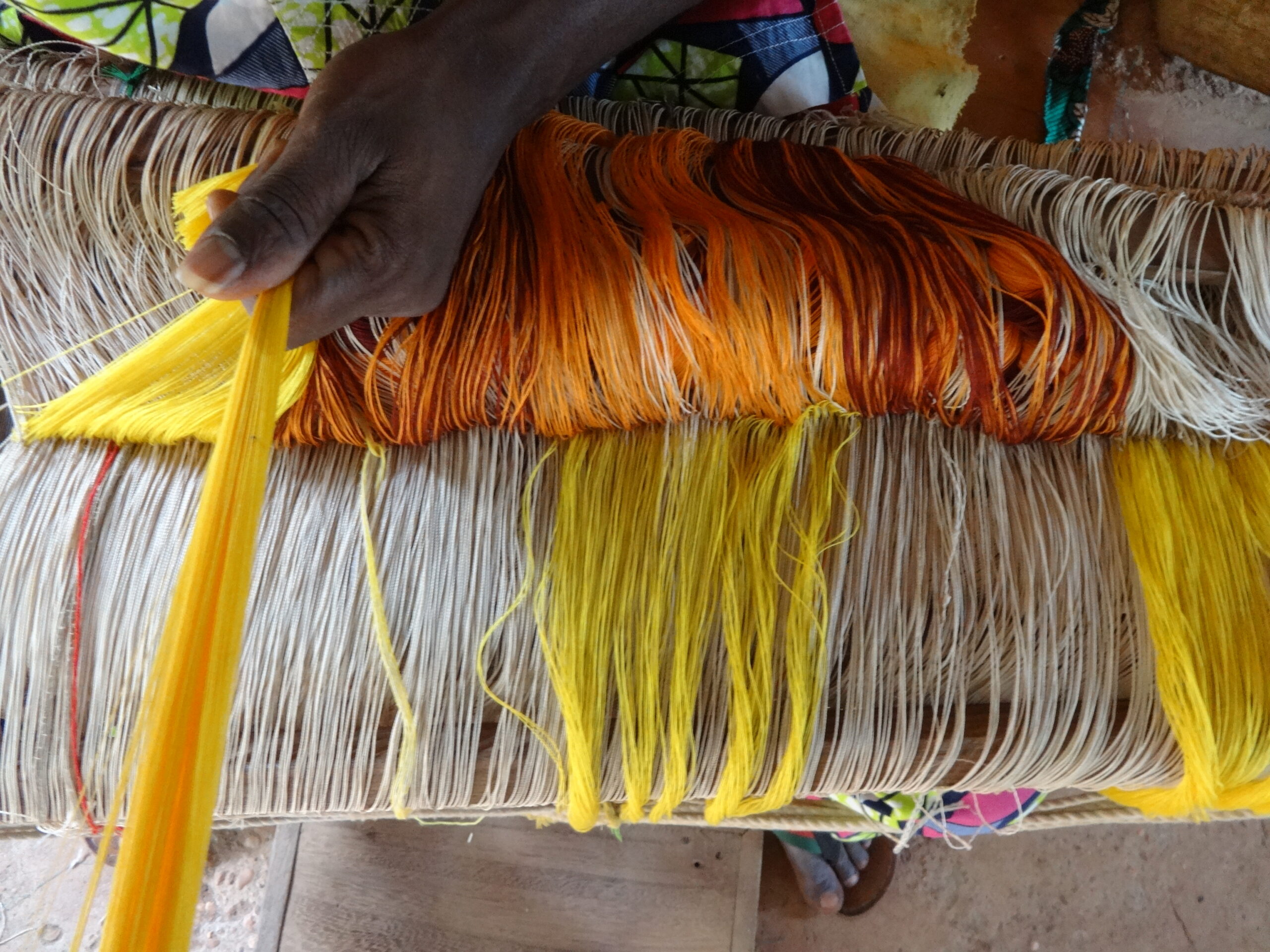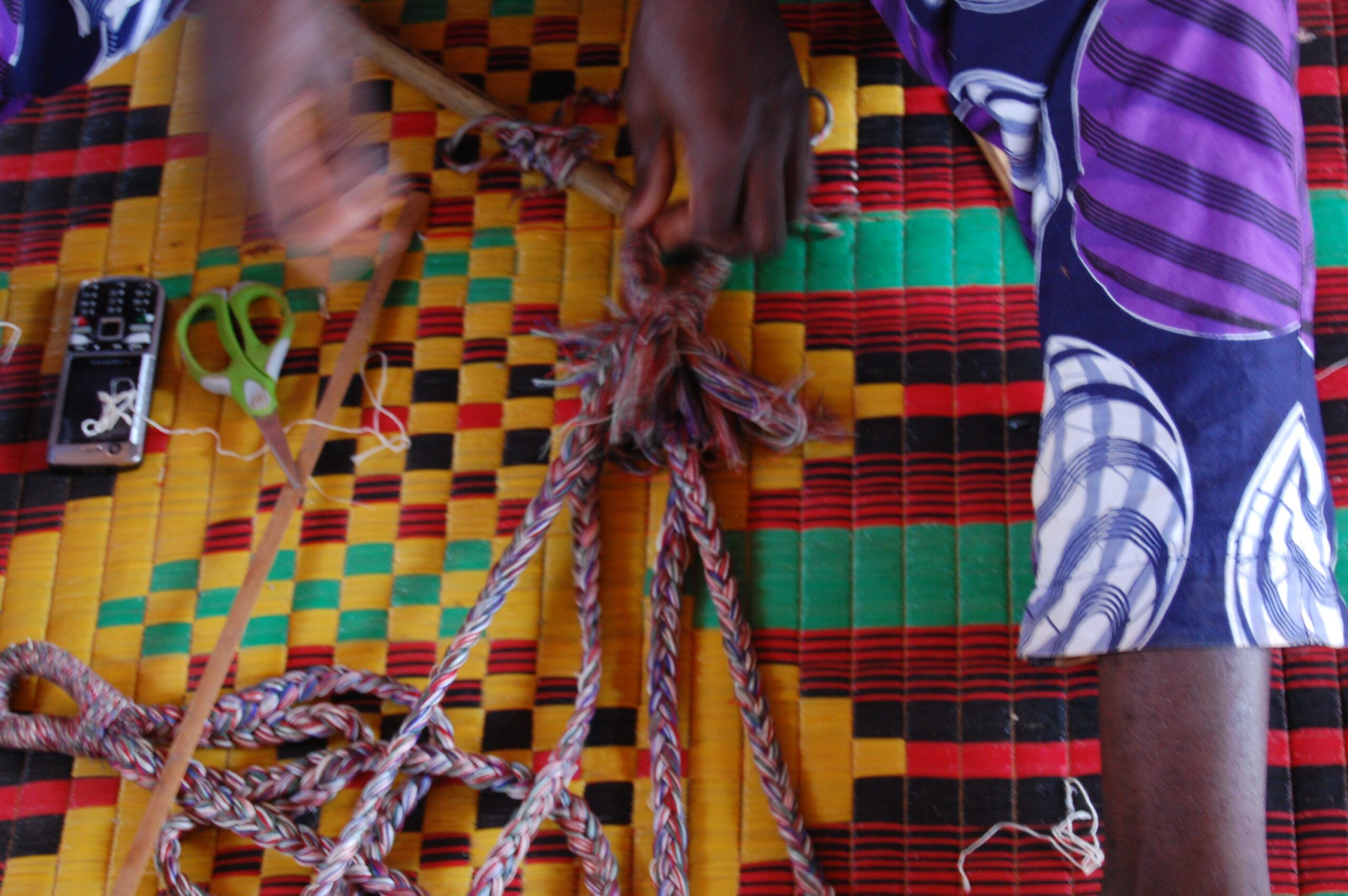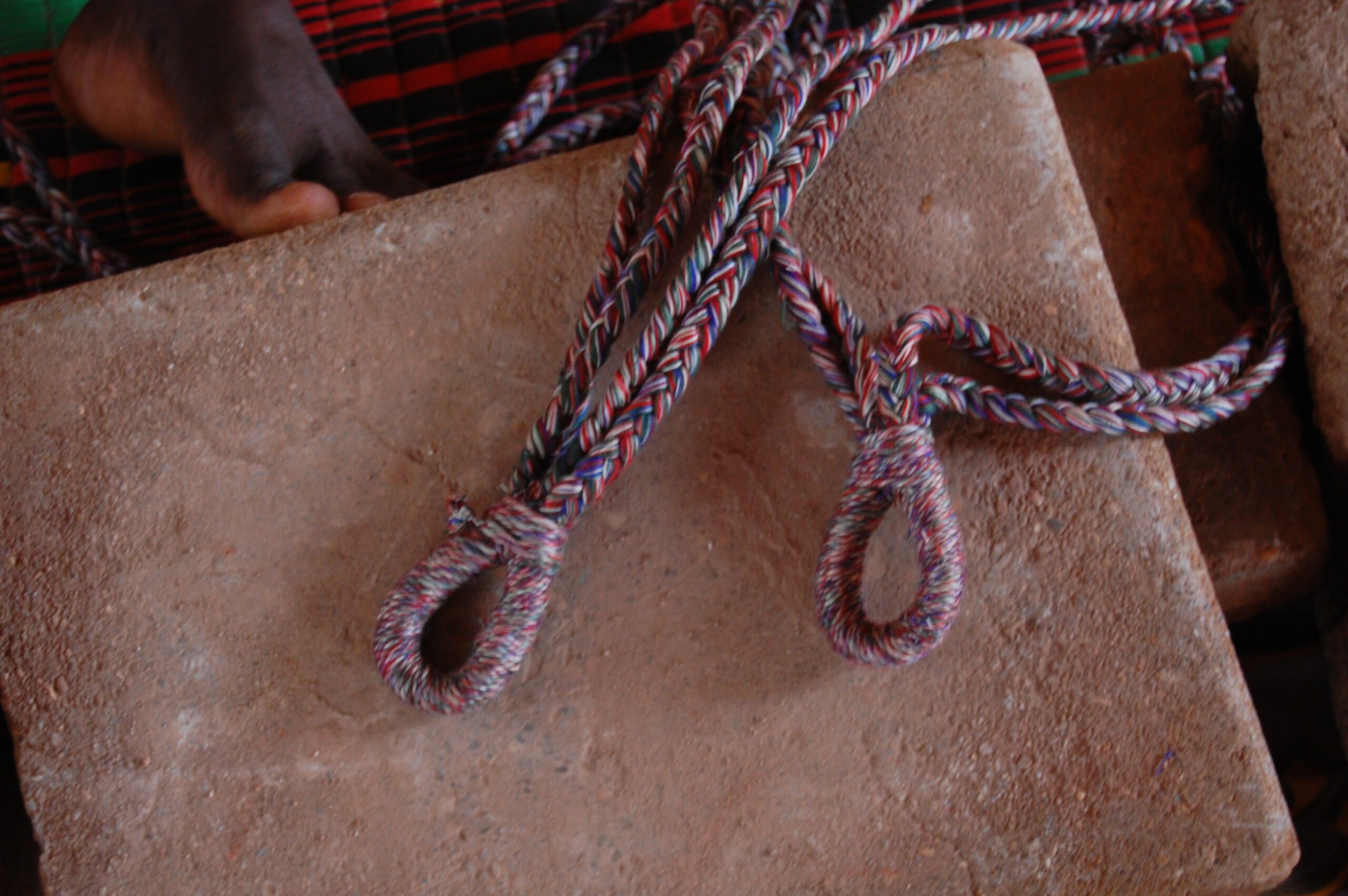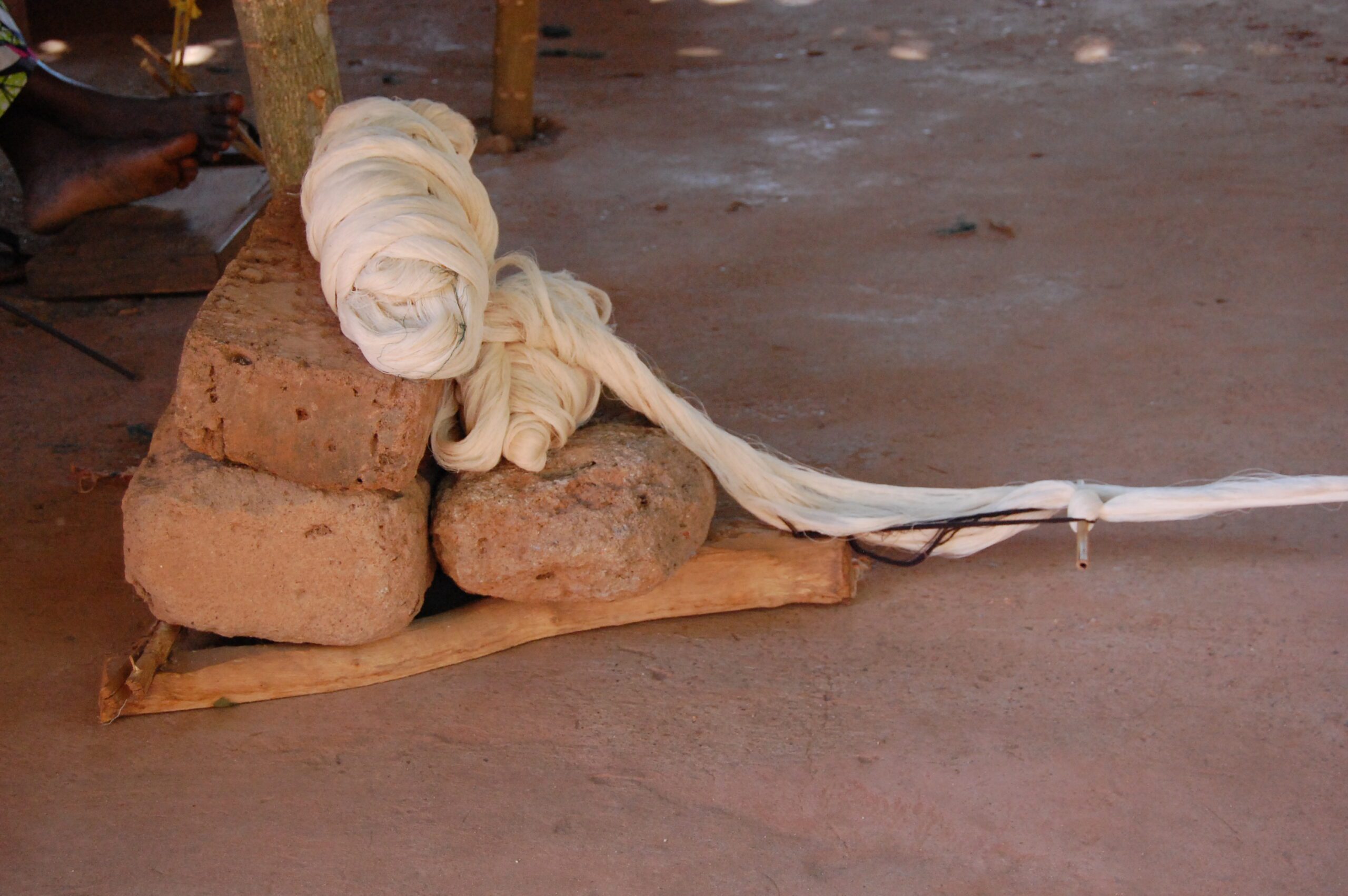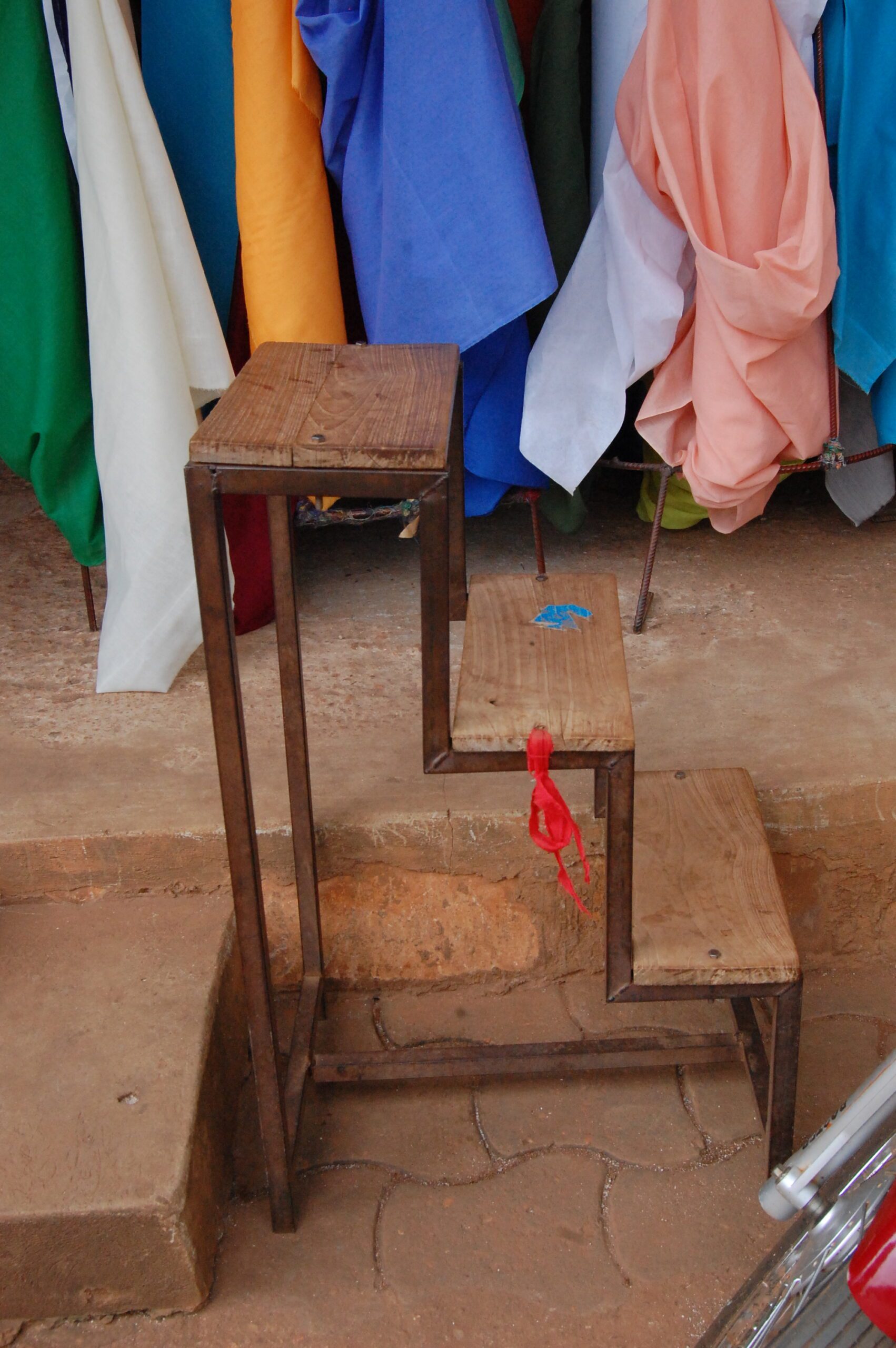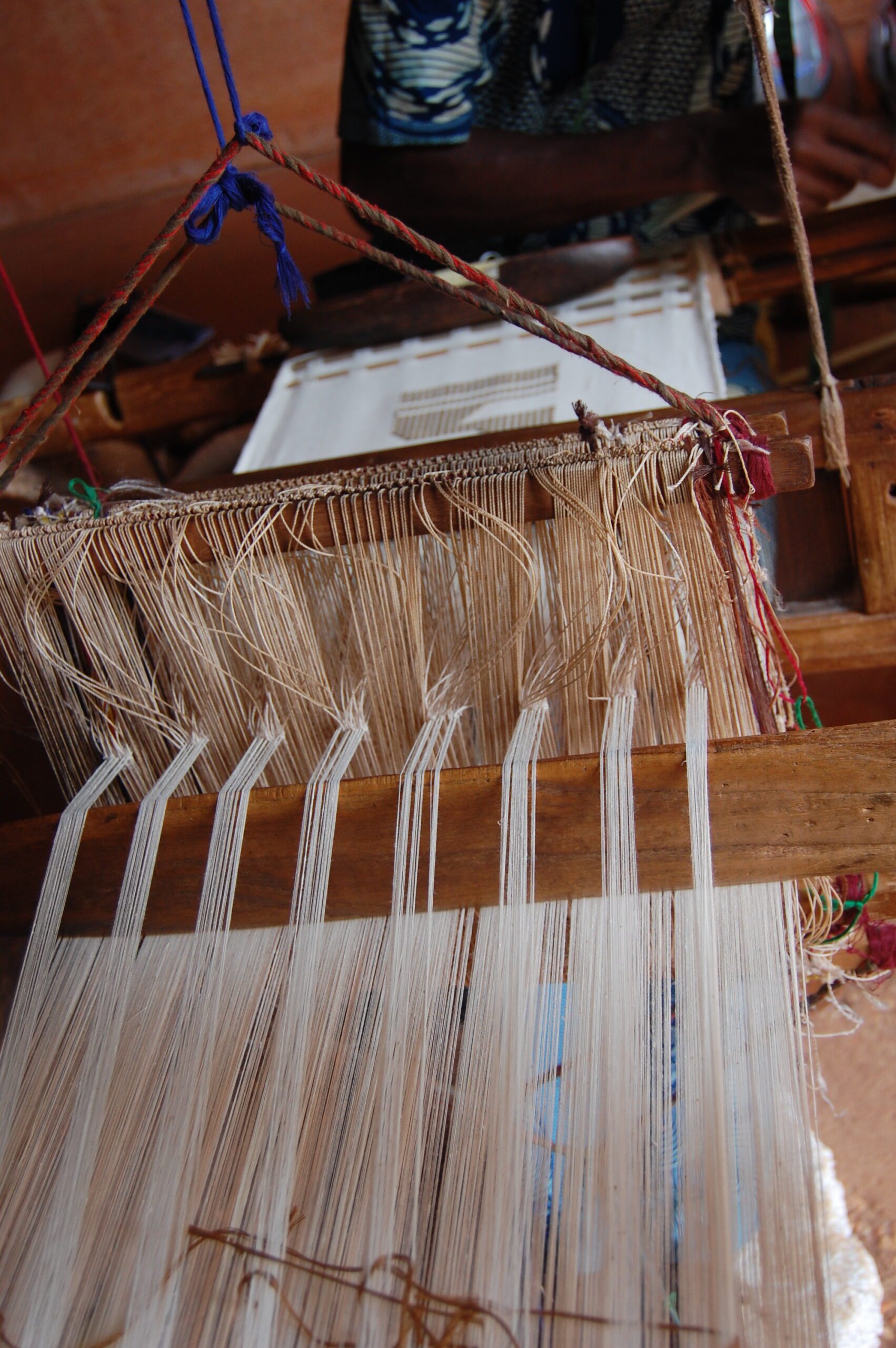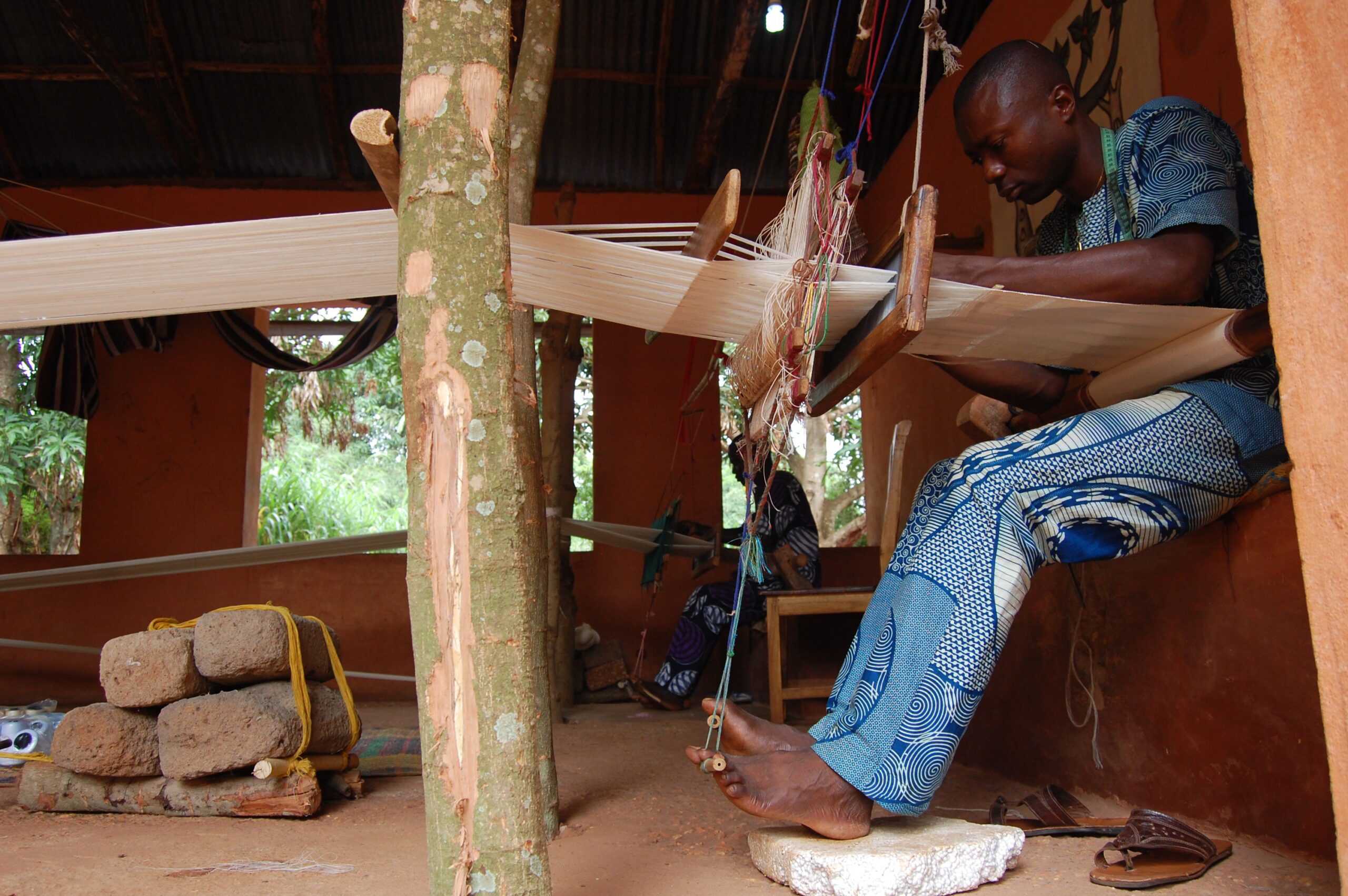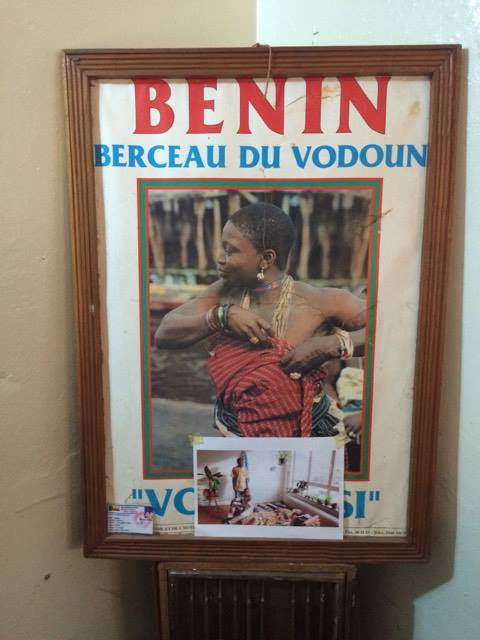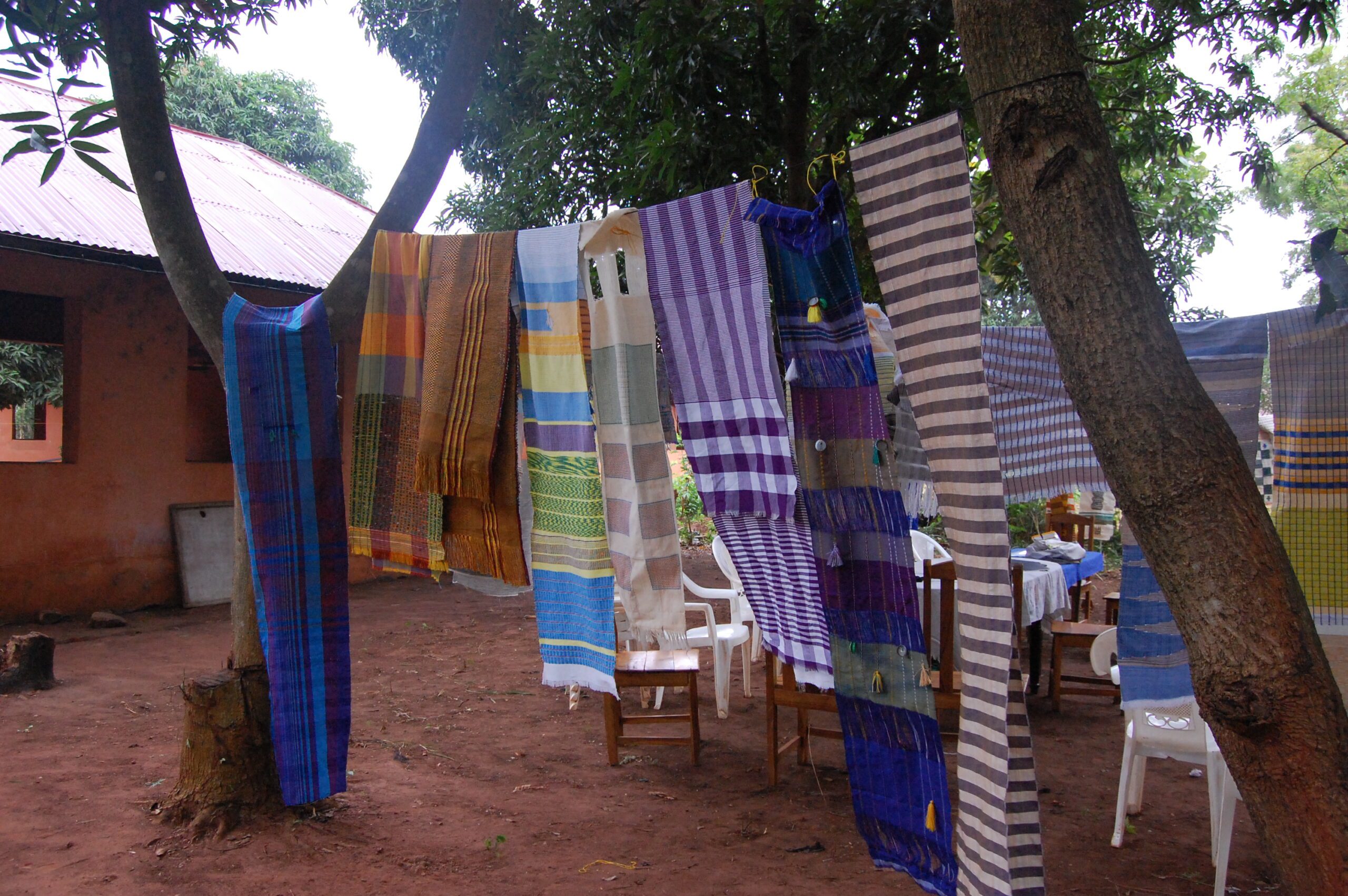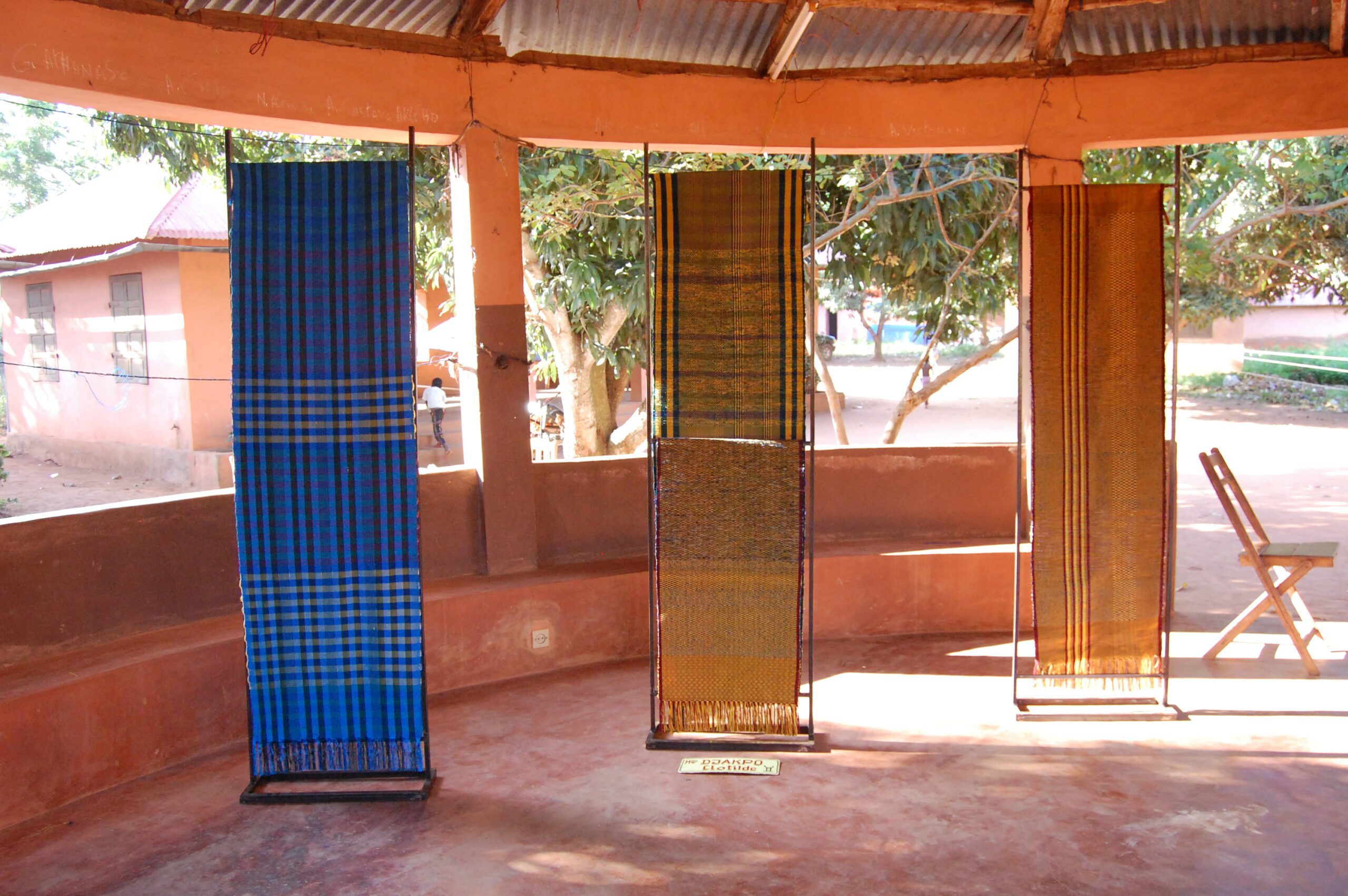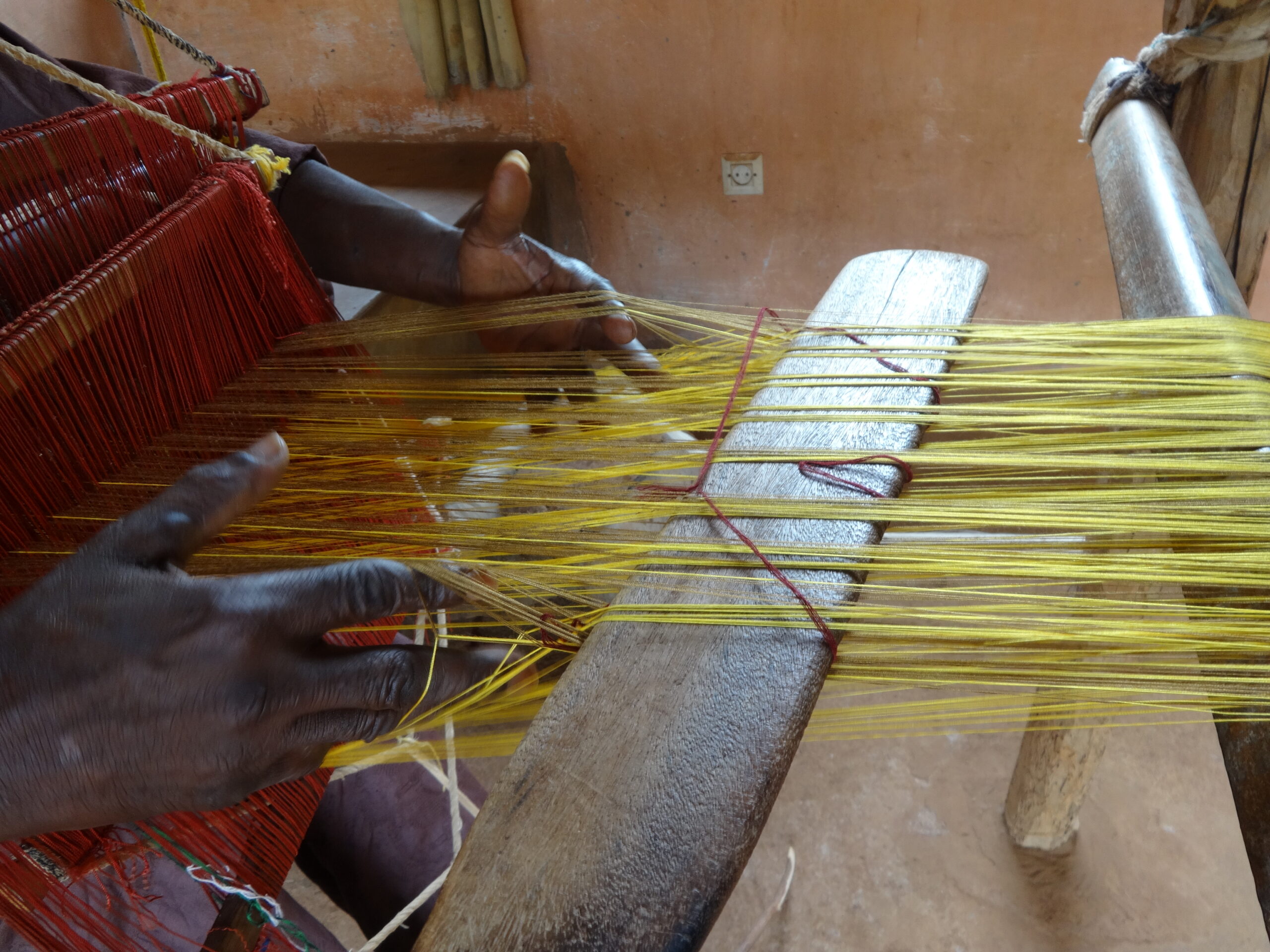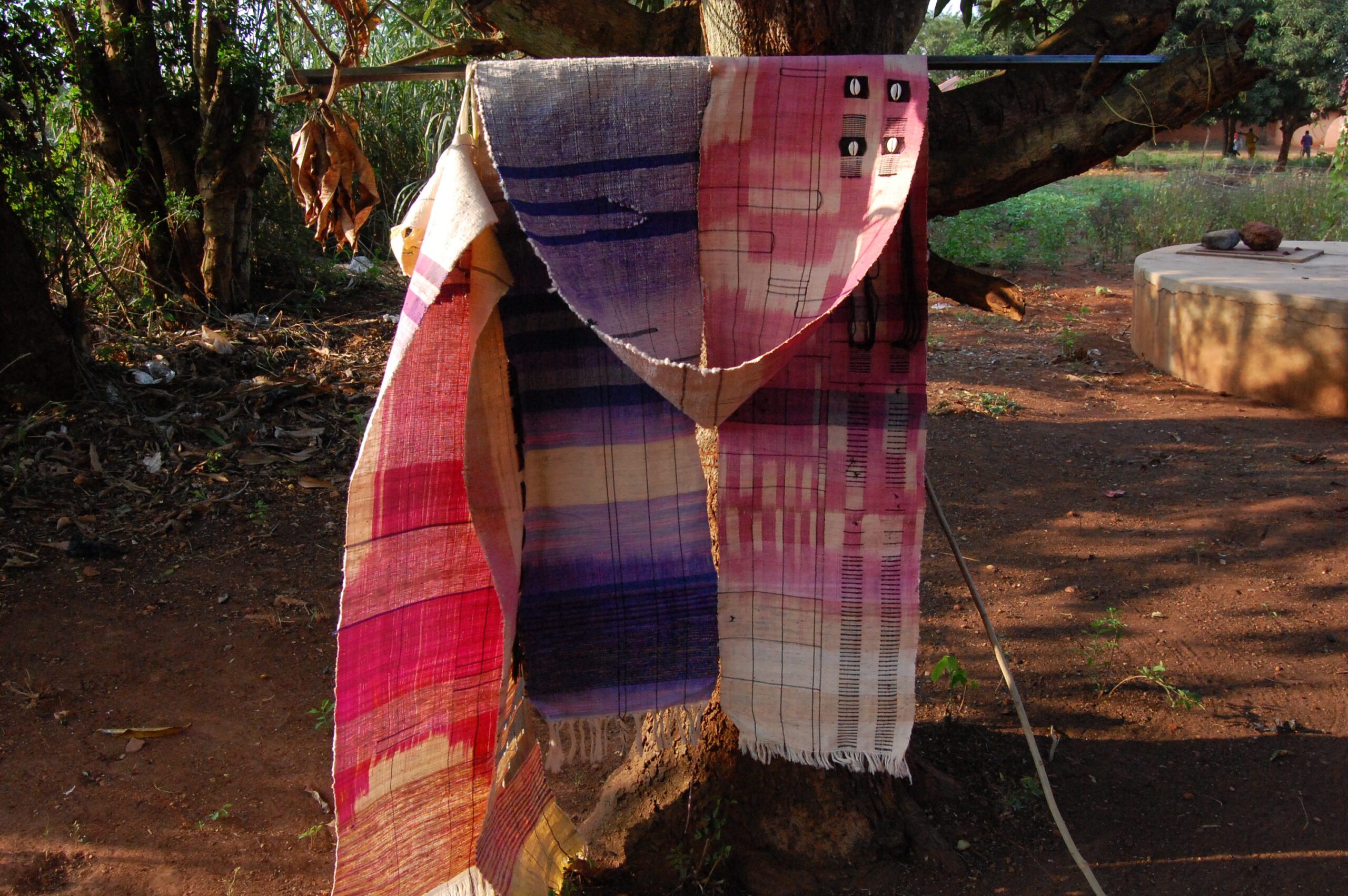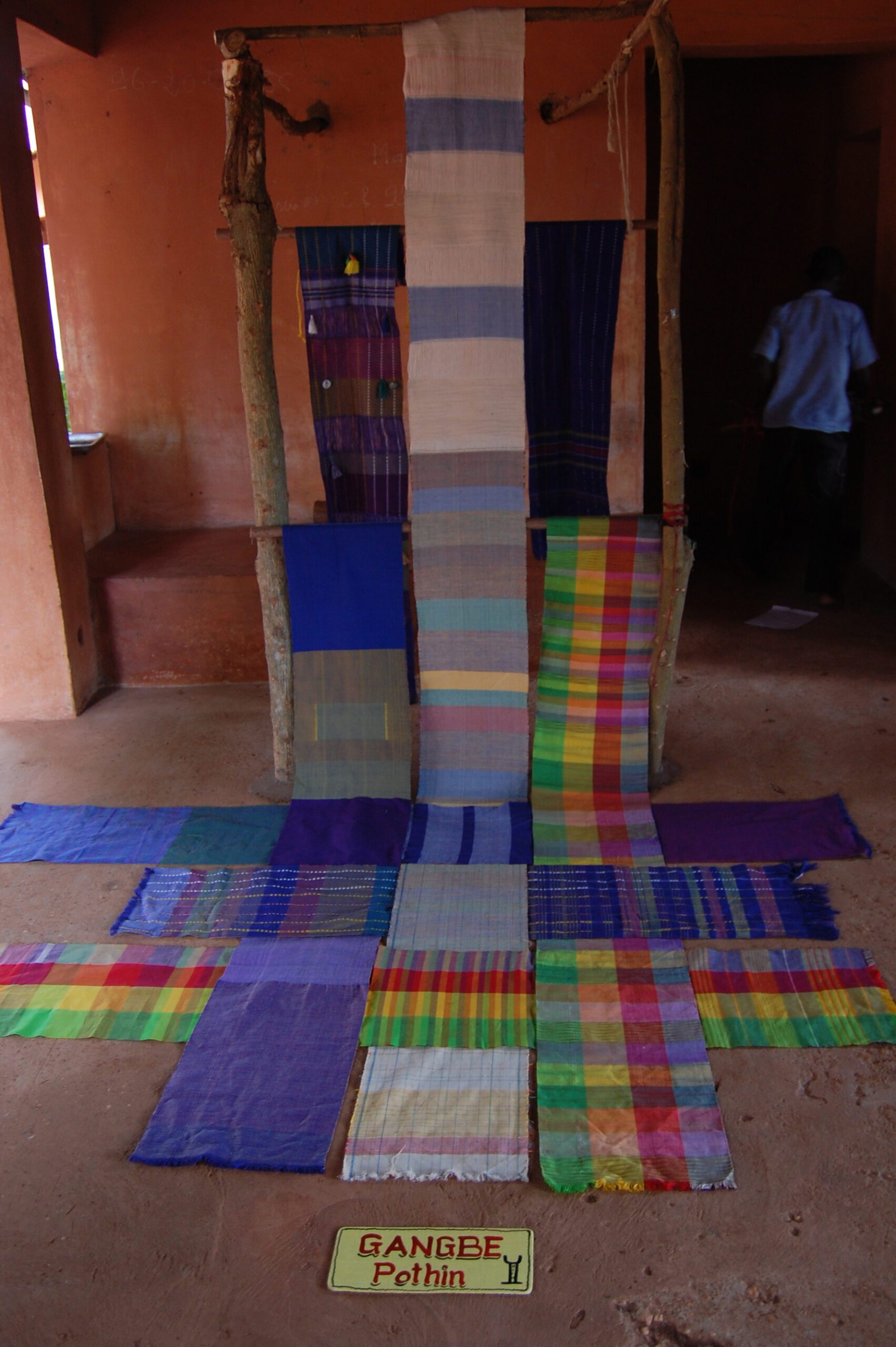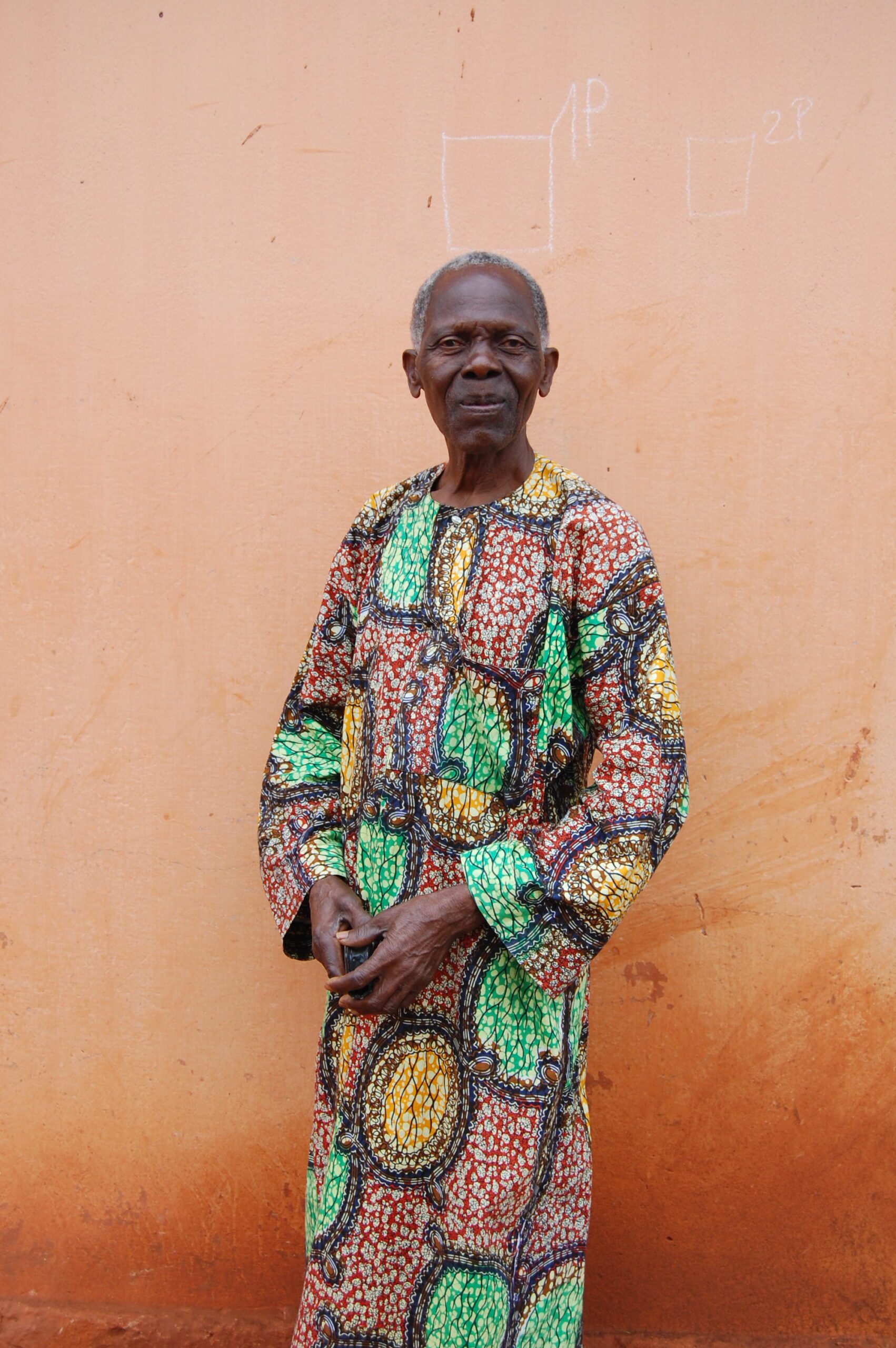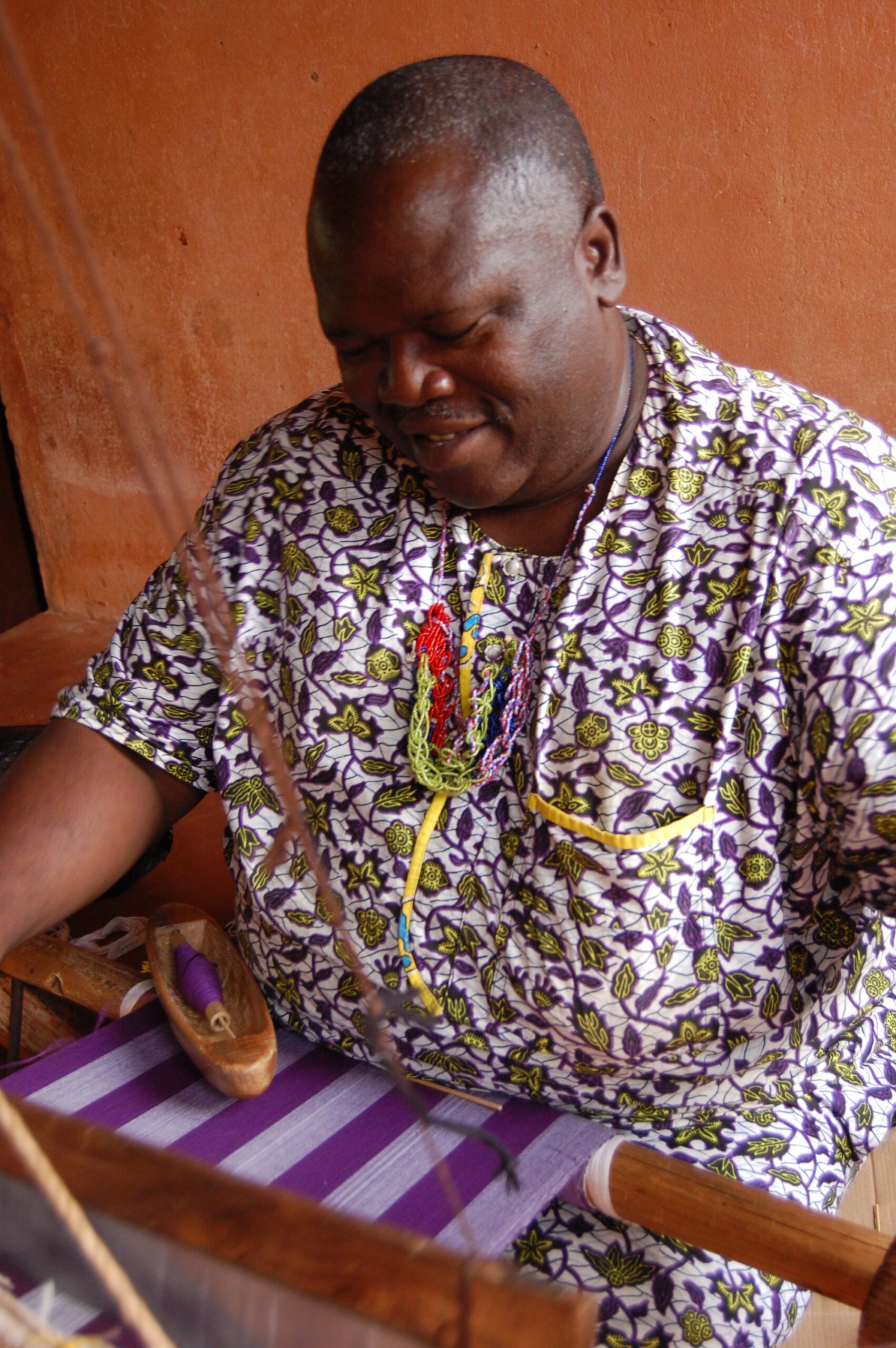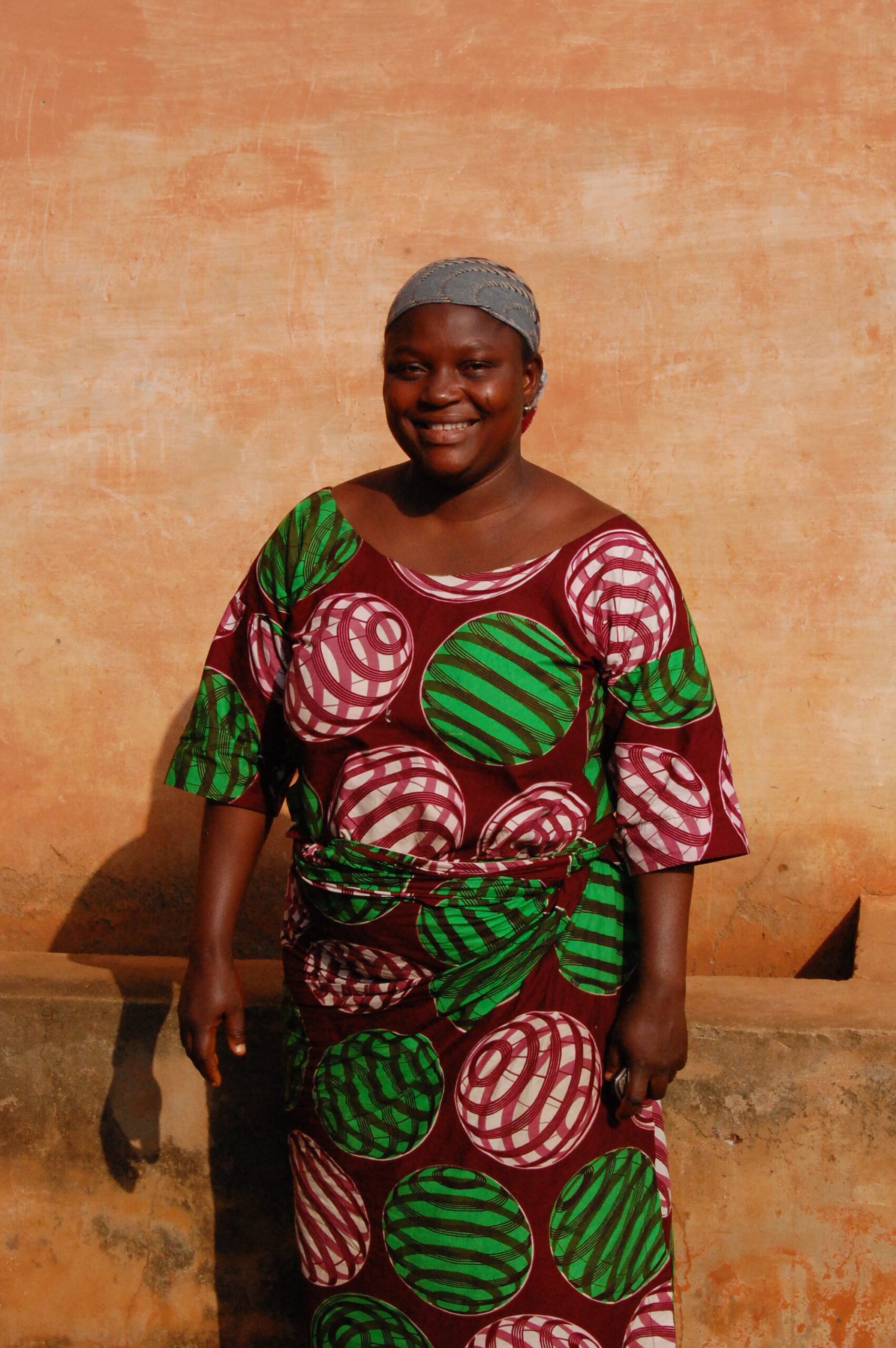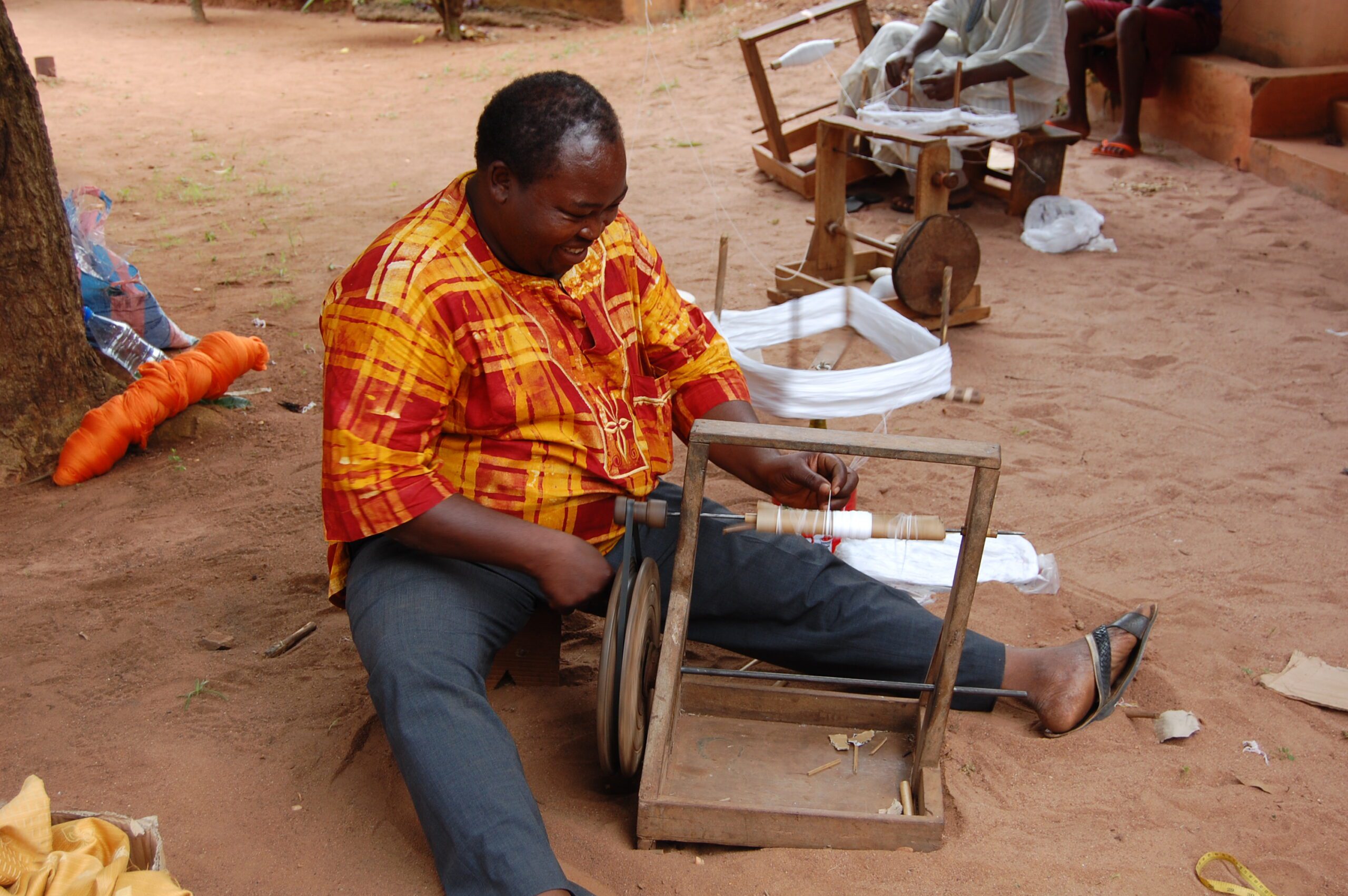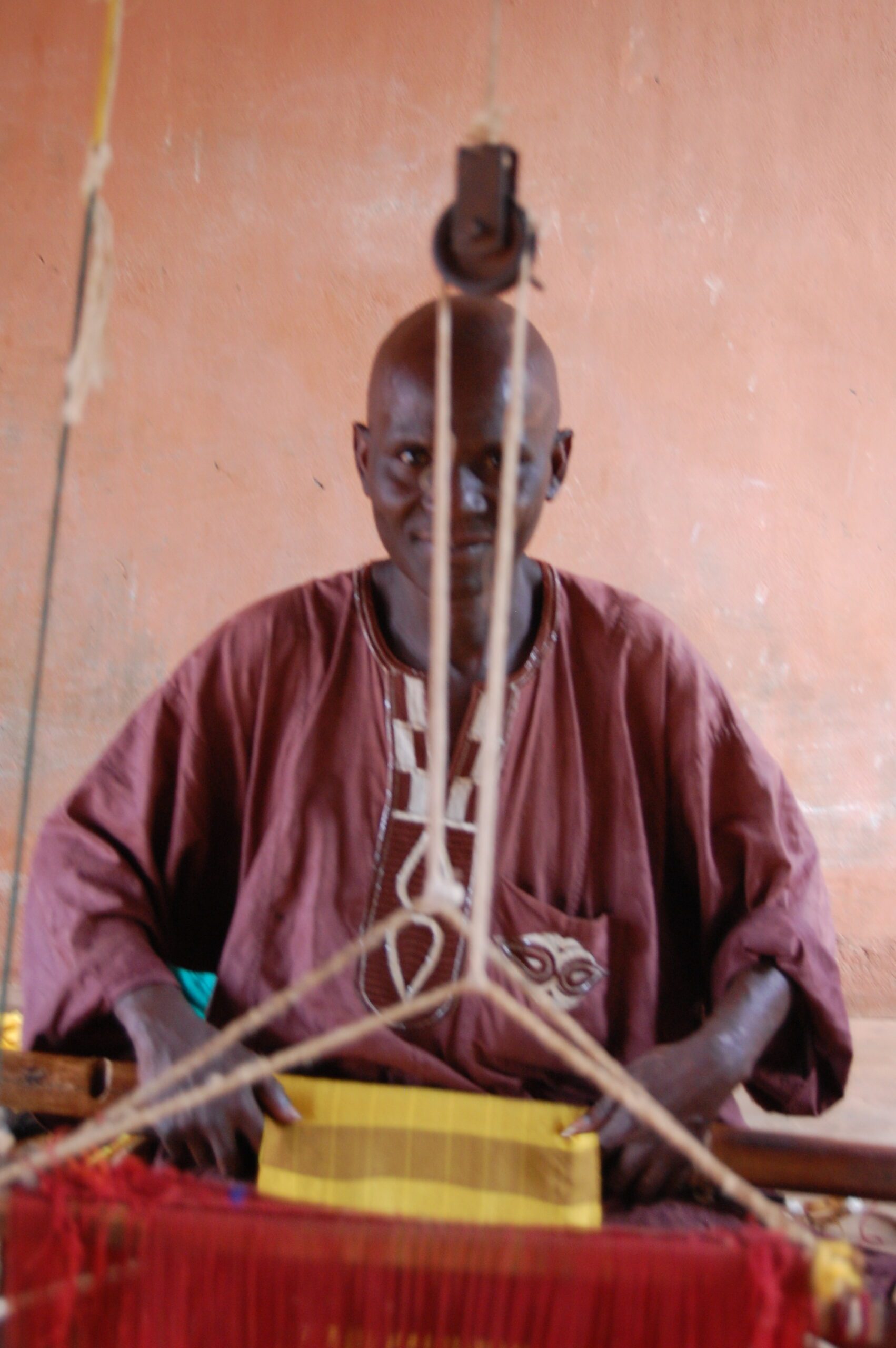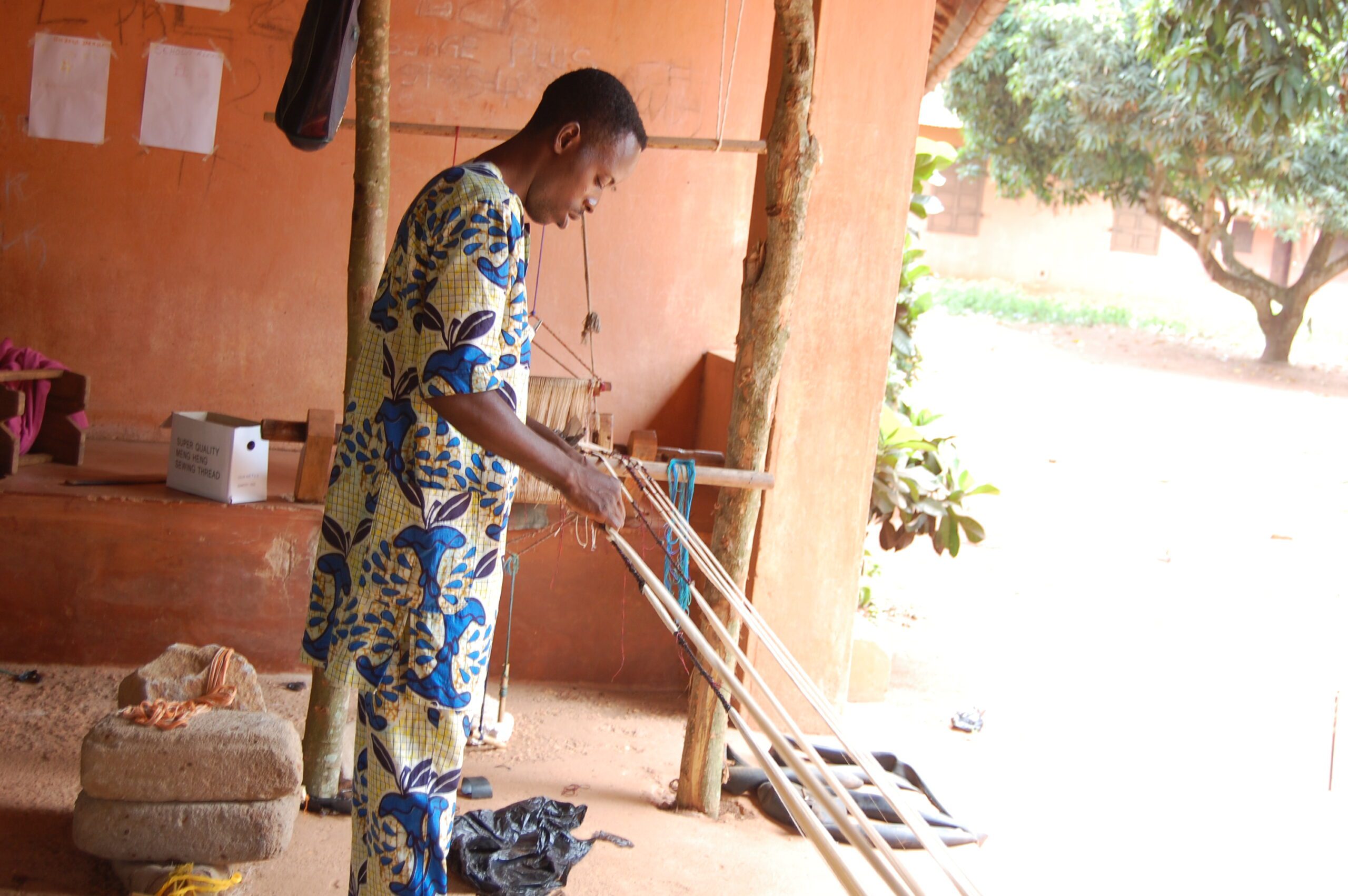A Boi
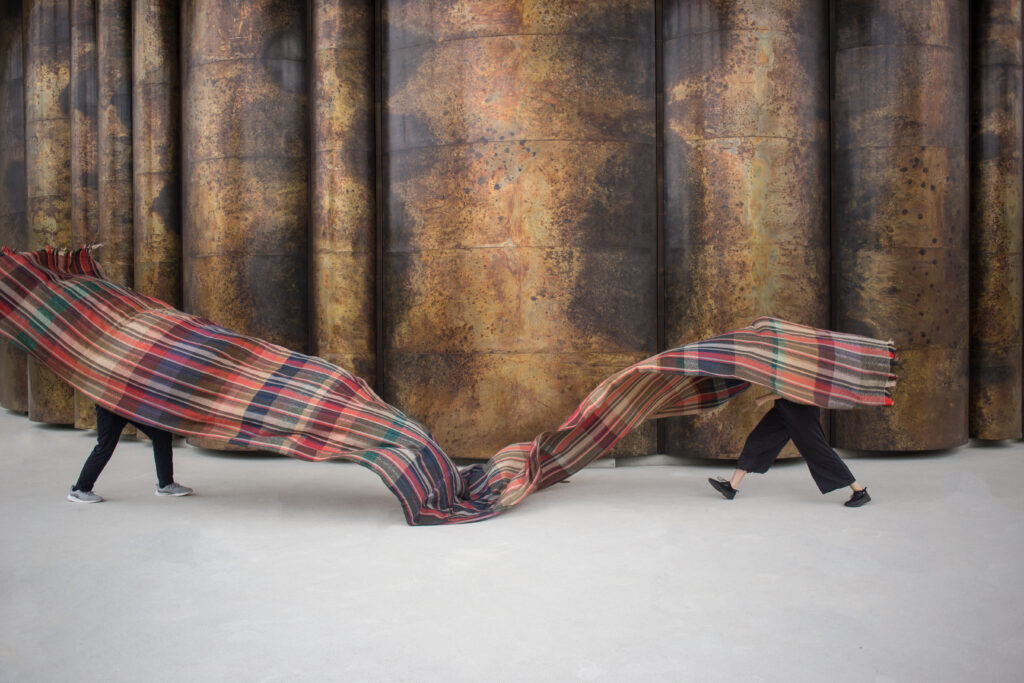
A: I.pron. clí. Prefijo de tercera persona. Third person conjugation
Boi: s. Manta (vestido prehispánico). Plaid (pre-Hispanic “dress”)
A boi: his or her A boi it means her or his plaid in Muisca language.
This was the language spoken by the people in the region around
Bogotá before and after colonial times, now not anymore. Back then,
textiles were very precious craft. The Indigenous used it as barter; they
had the same value as gold. The storytelling tradition of this region
recounts that it was Bochica, the main god of the Muisca people, who
taught them to spin and weave plaids.
I started this textile collaboration with William some years ago, he
is an extremely talented handicraft artisan from a small town near
Bogotá in the altiplano Cundiboyasense of Colombia: Cucunubá,
Cundinamarca. There he has a studio. This town owns a long-lasting
tradition of textile making. Together with William we sit down by the
loom and experiment with the traditional elements that constitute
the textile iconography of this place since pre-colonial times. We
basically weave together, for days. We meet to exchange know-how
and share different perspectives on how craft and contemporary
design may intersect. We look together at the traditional iconography
and weaving structures of his region, and we twist and reinterpret
these graphic symbols to create a new perception of them and how
we interpret them.
For me it’s extremely important to have a clear, close and fair working
relationship with William, with a lot of respect for each other’s
knowledge and opinions. We both settle our conditions in a nonhierarchic
and horizontal way. A boi is an ongoing series of timeless
textile pieces, that recall and rethink the past, bringing new questions
to the present. Every piece is unique and has a special rhythm and
mix of colour. The material used in the textiles, consist of a very
high-quality alpaca that comes from Peru. The alpaca has beautiful
properties like adaptation to body temperature and very kind touch.
Pictures by © Alexandra Colmenares Cossio

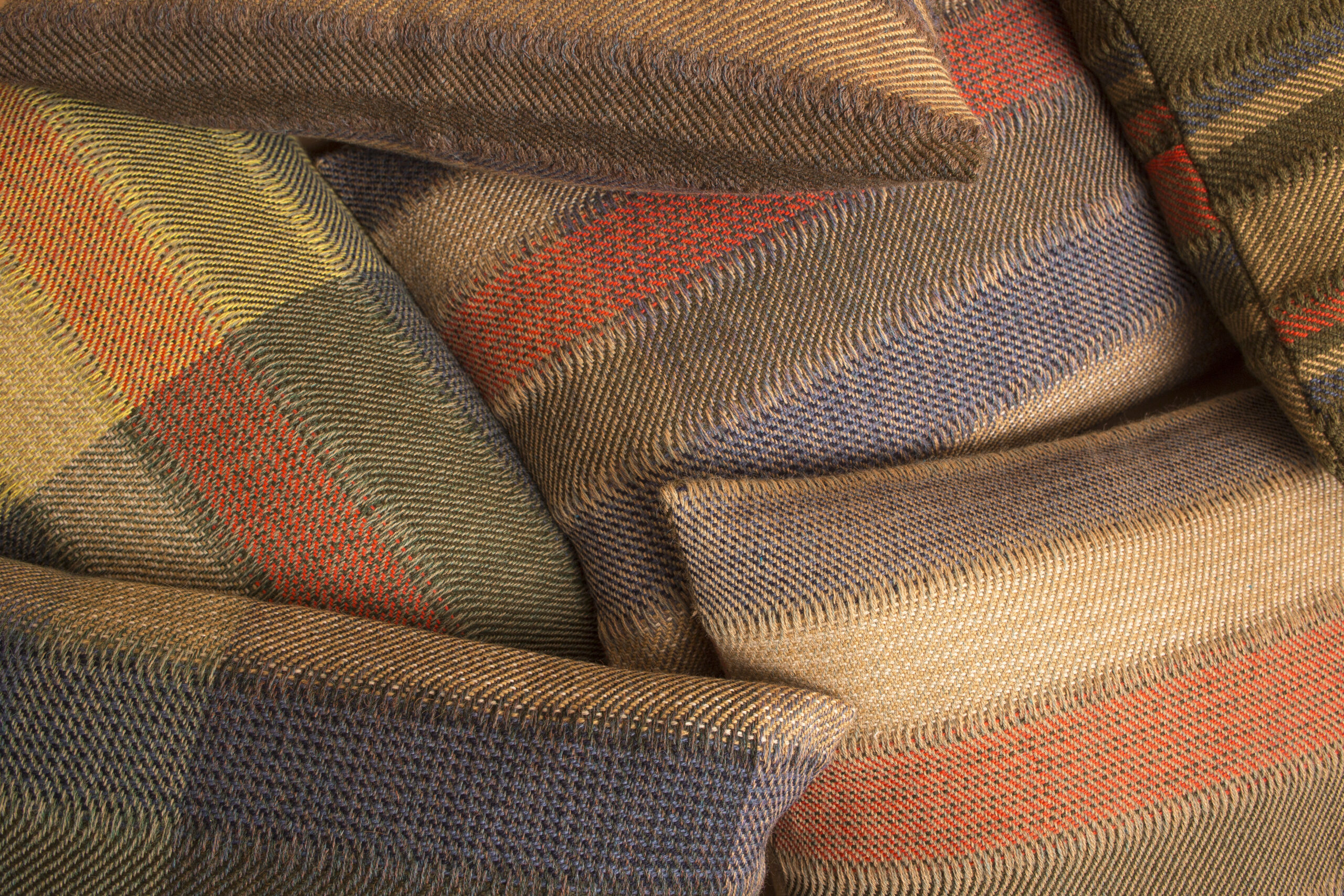



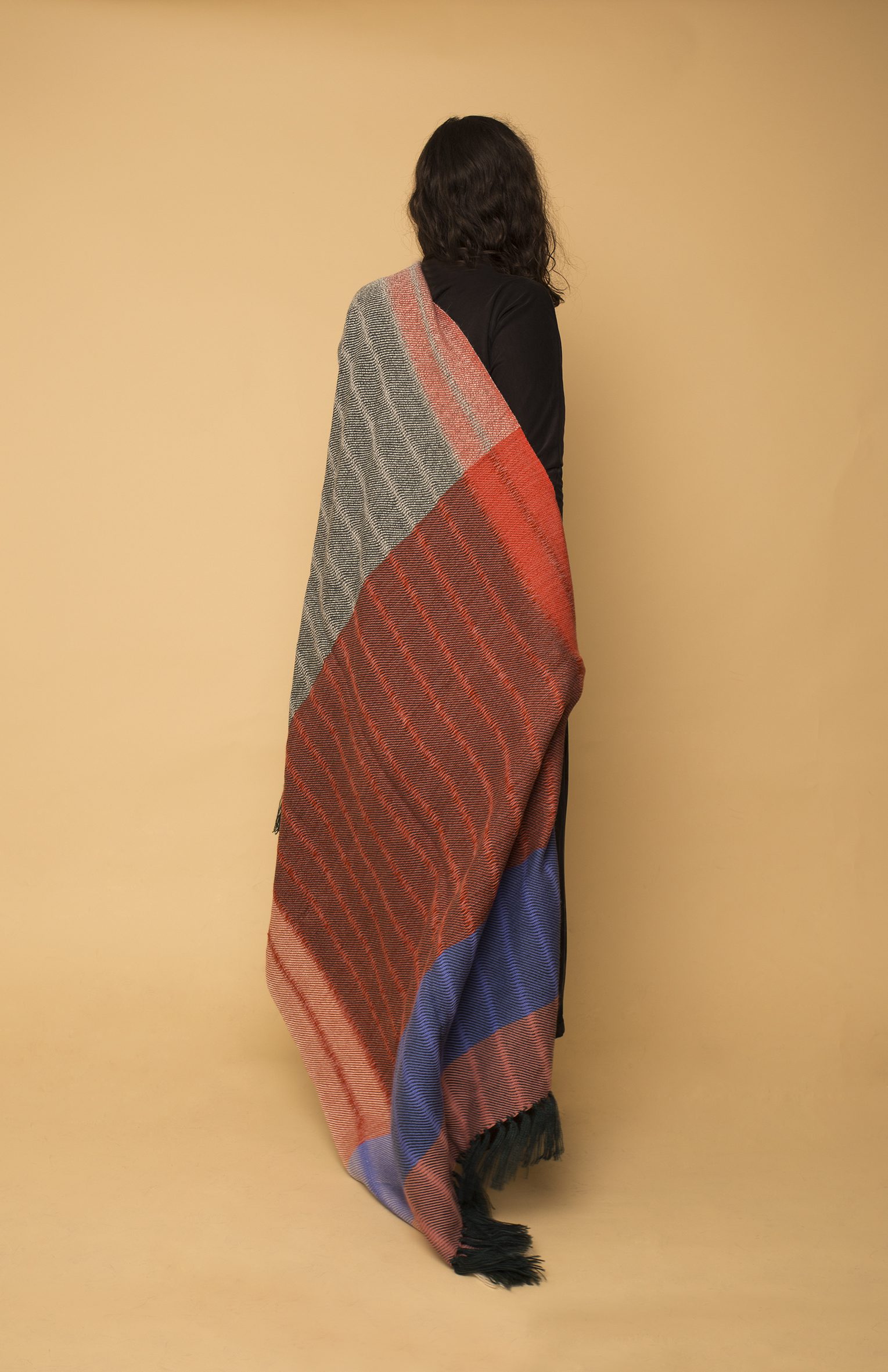
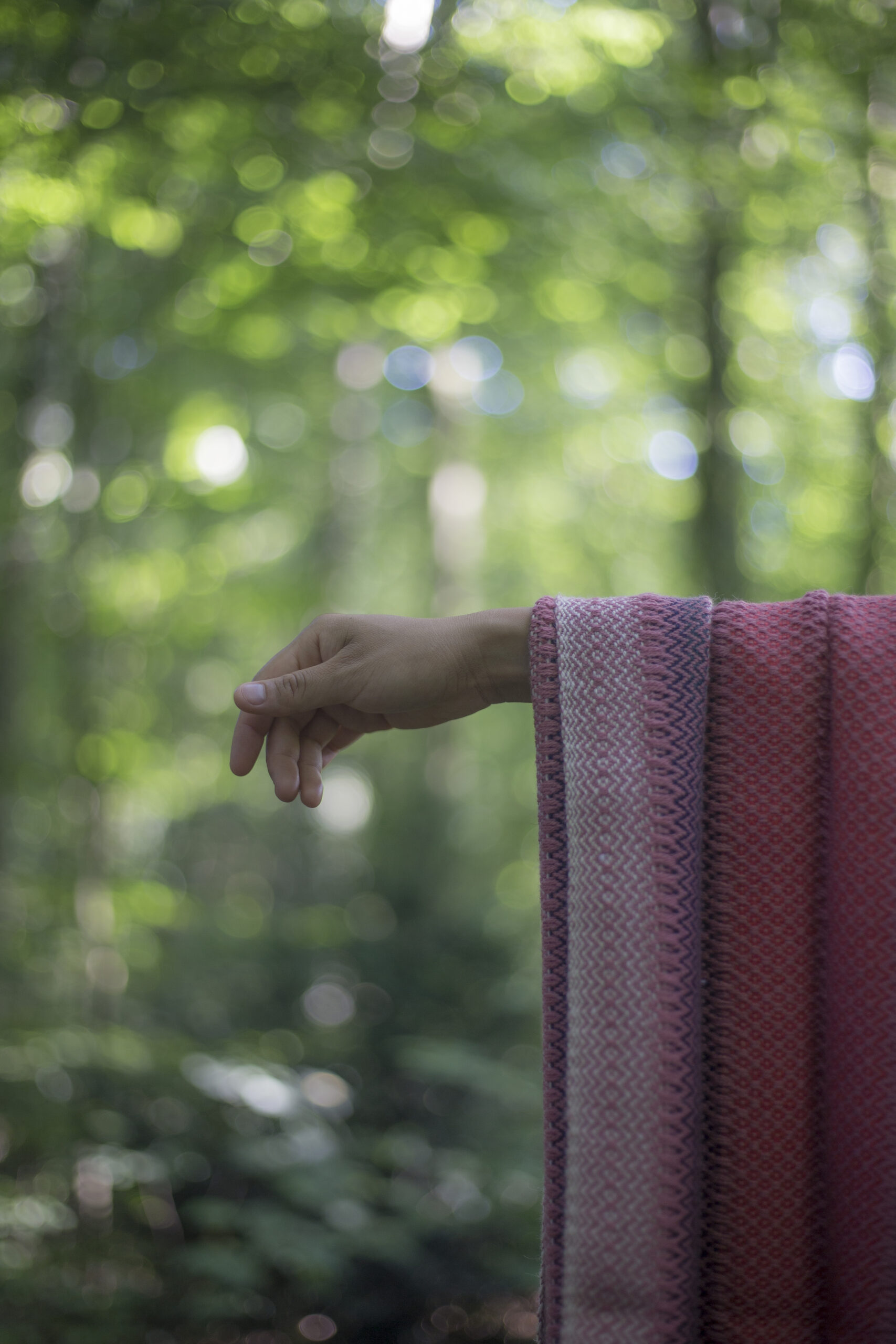
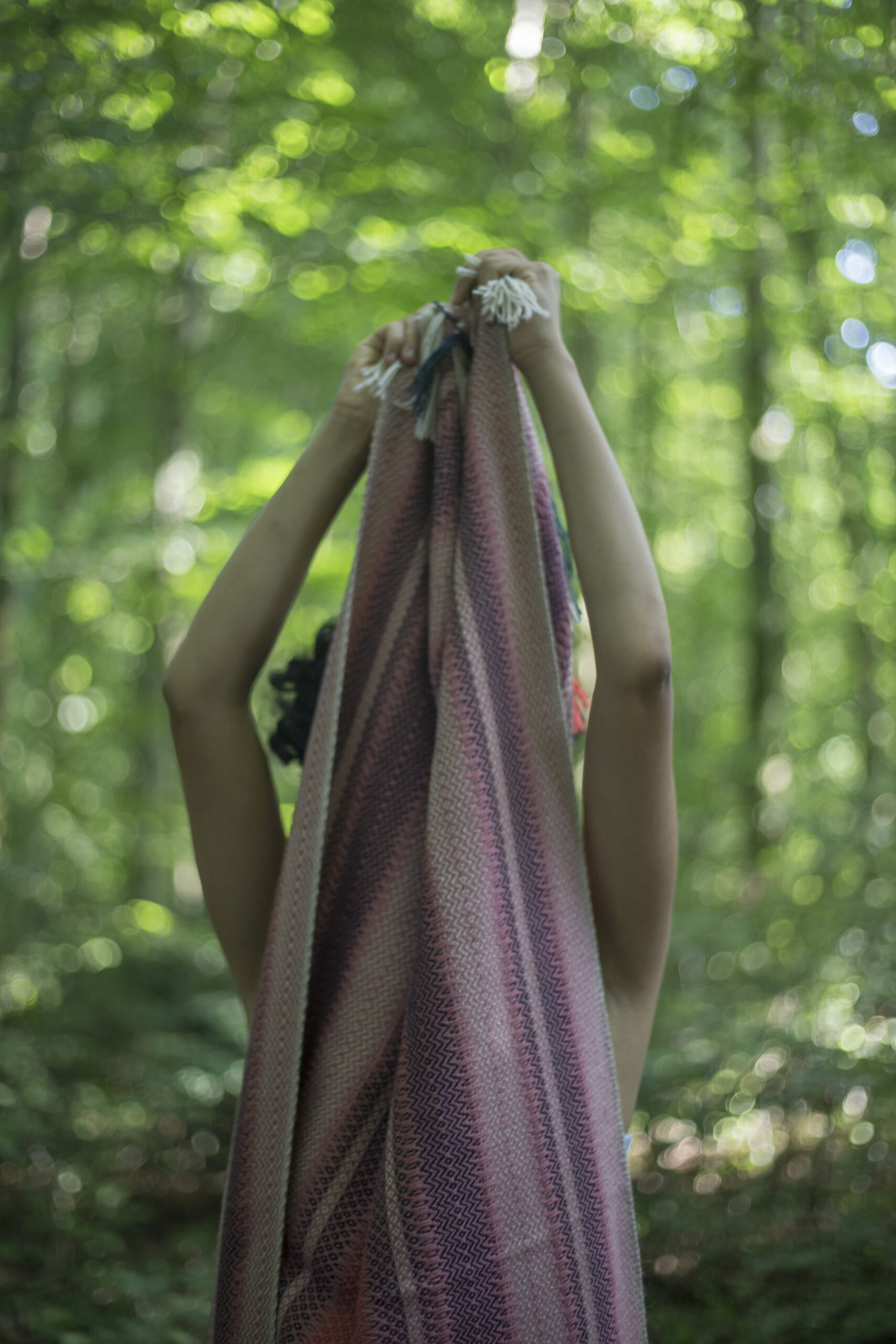
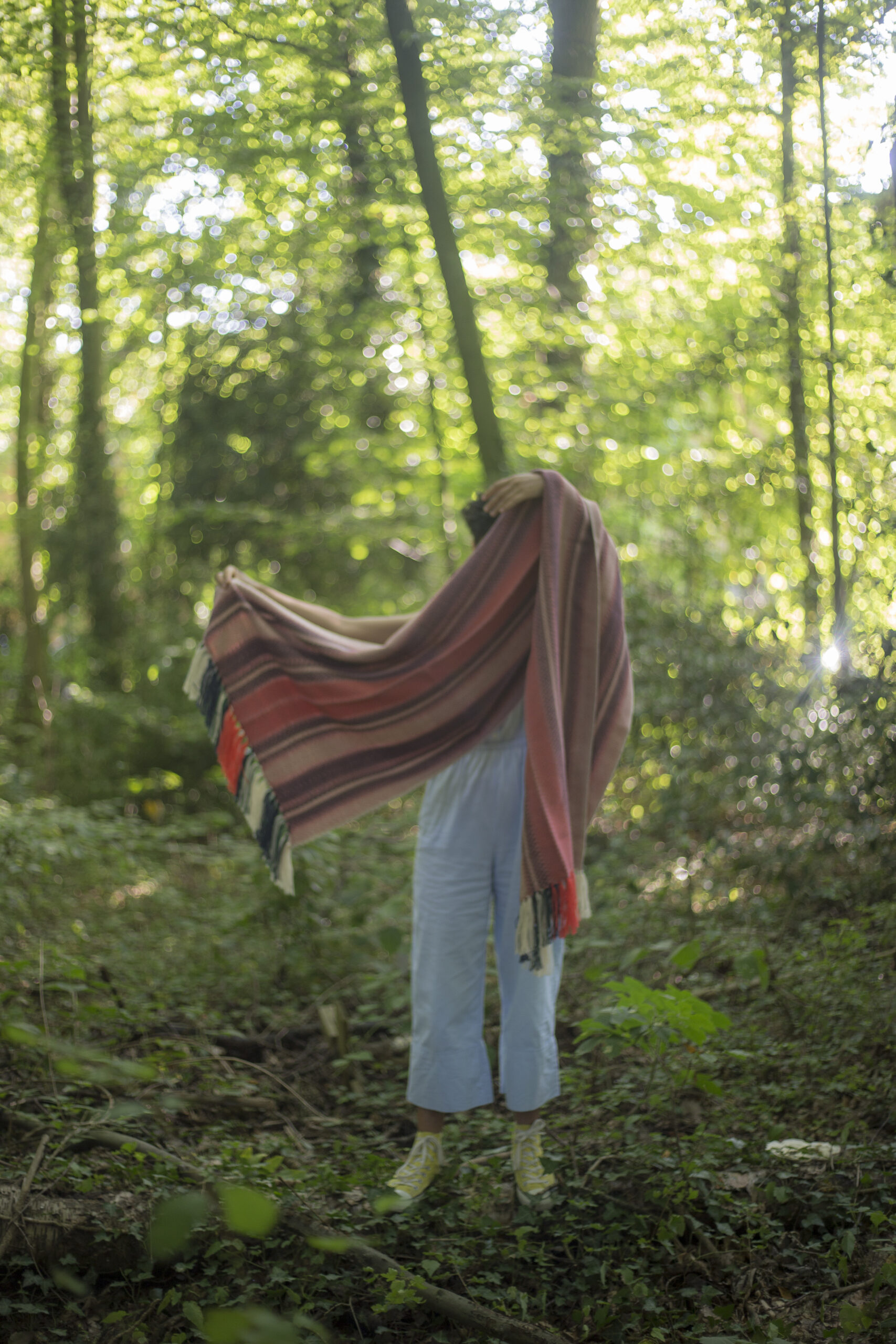

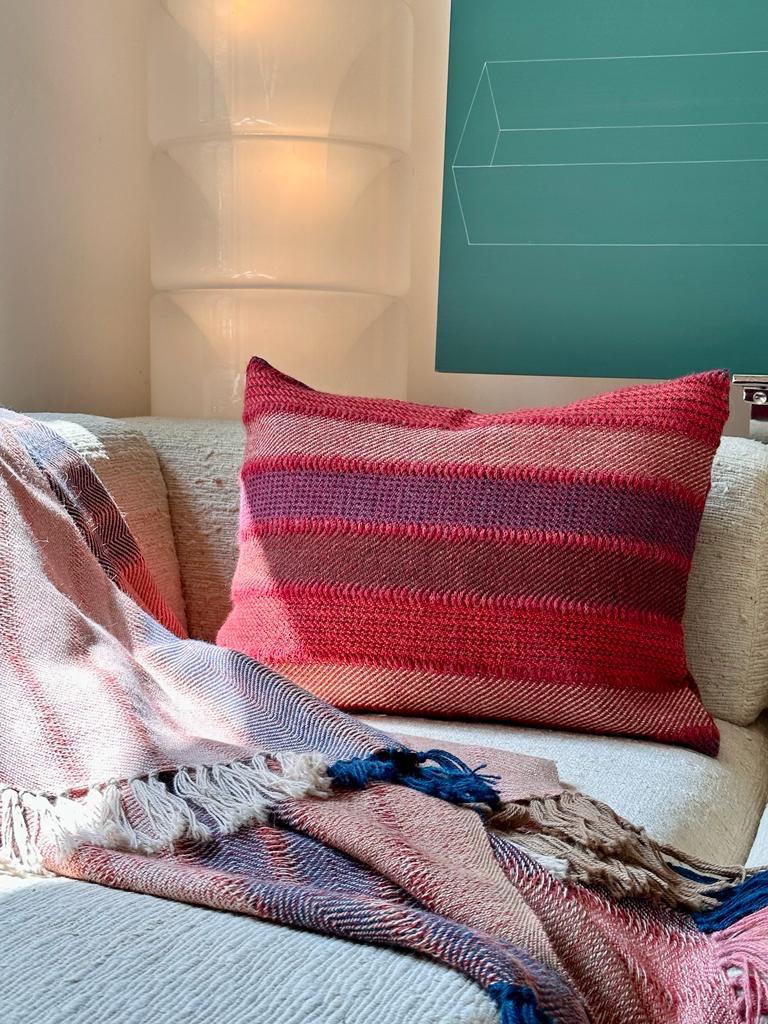





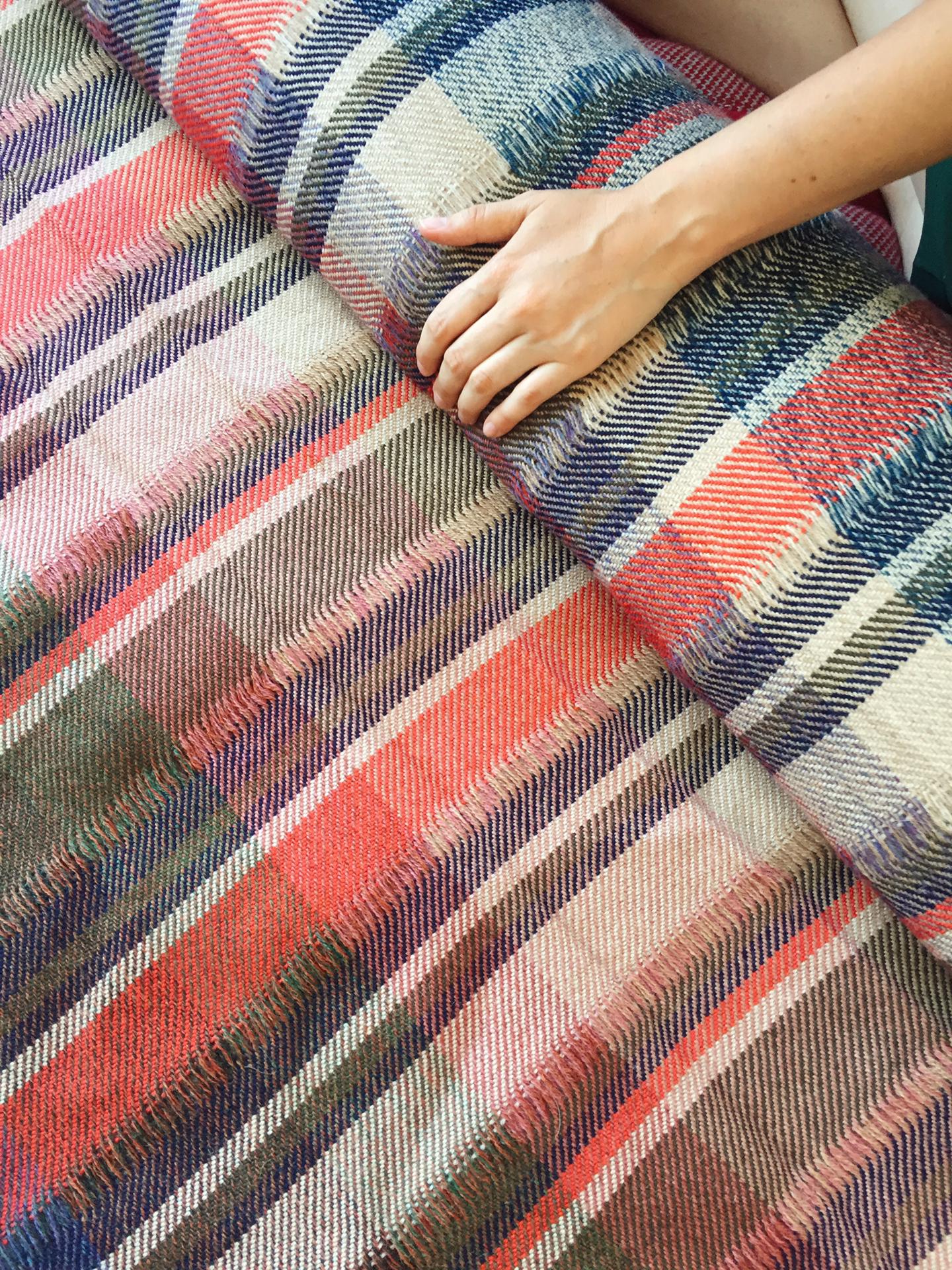


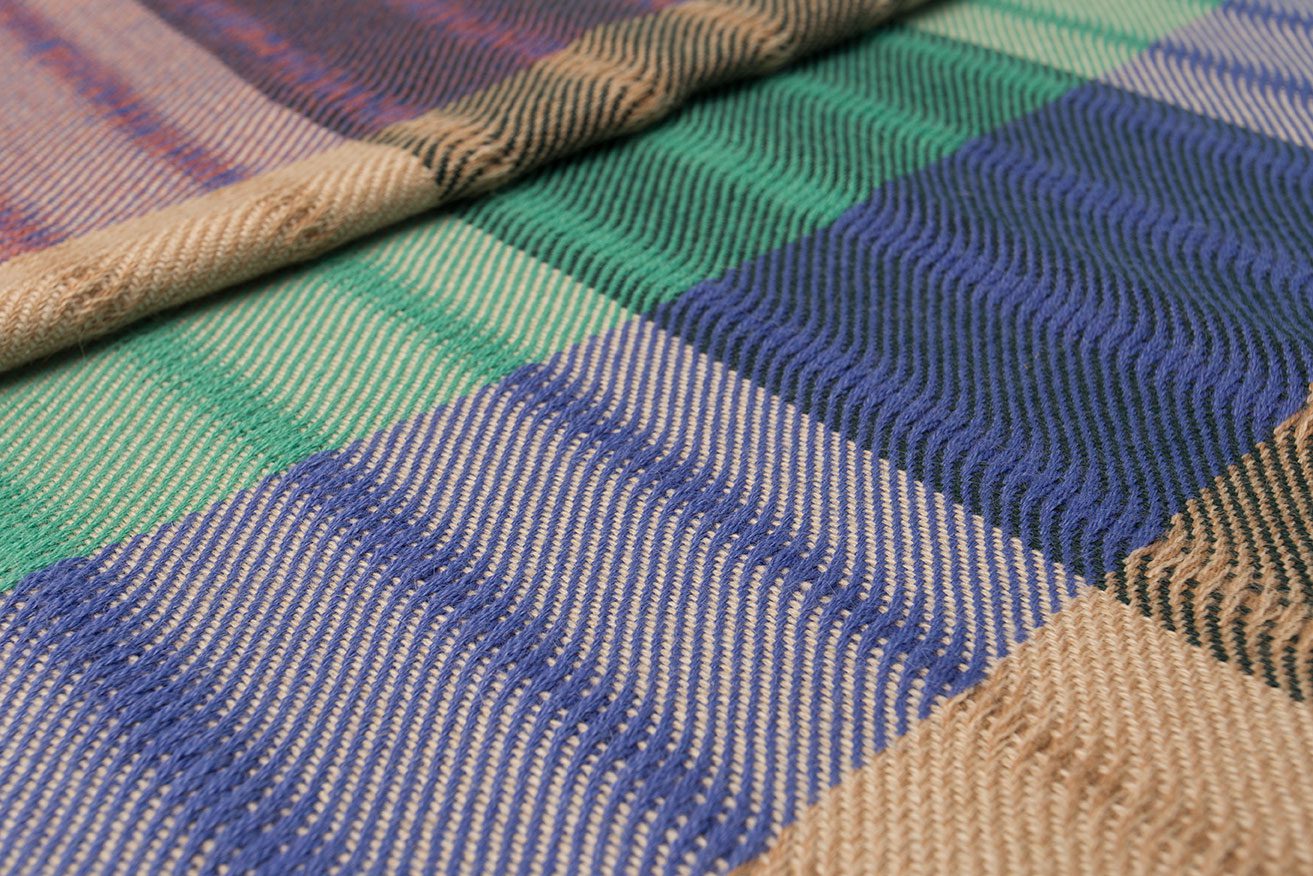
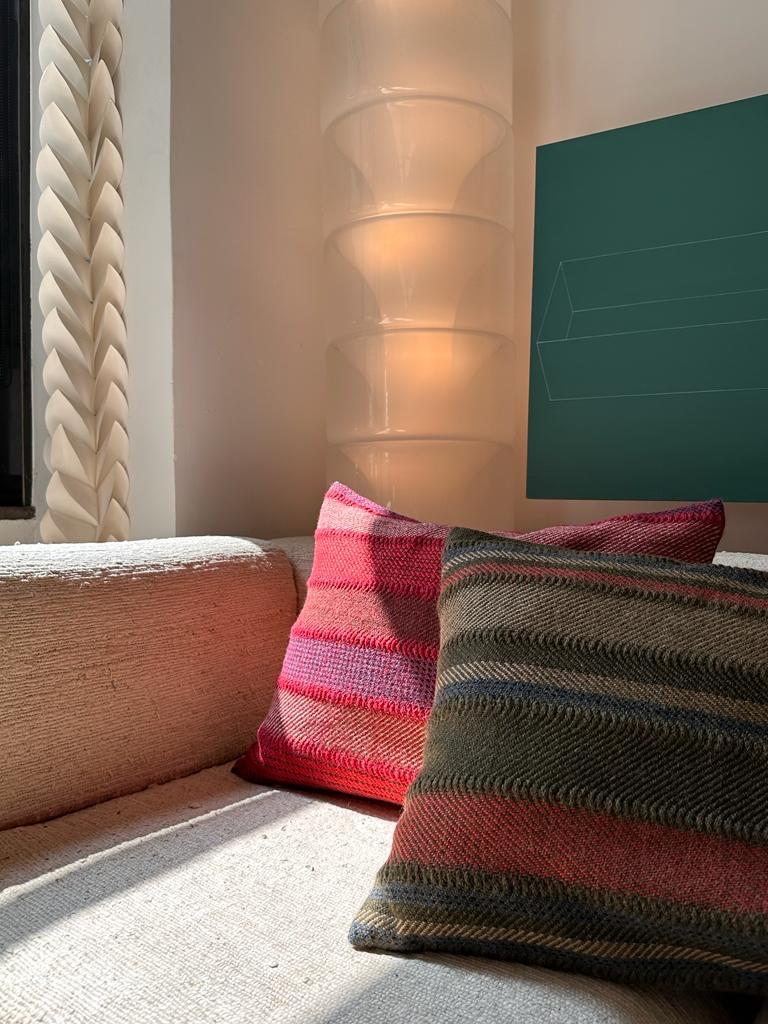

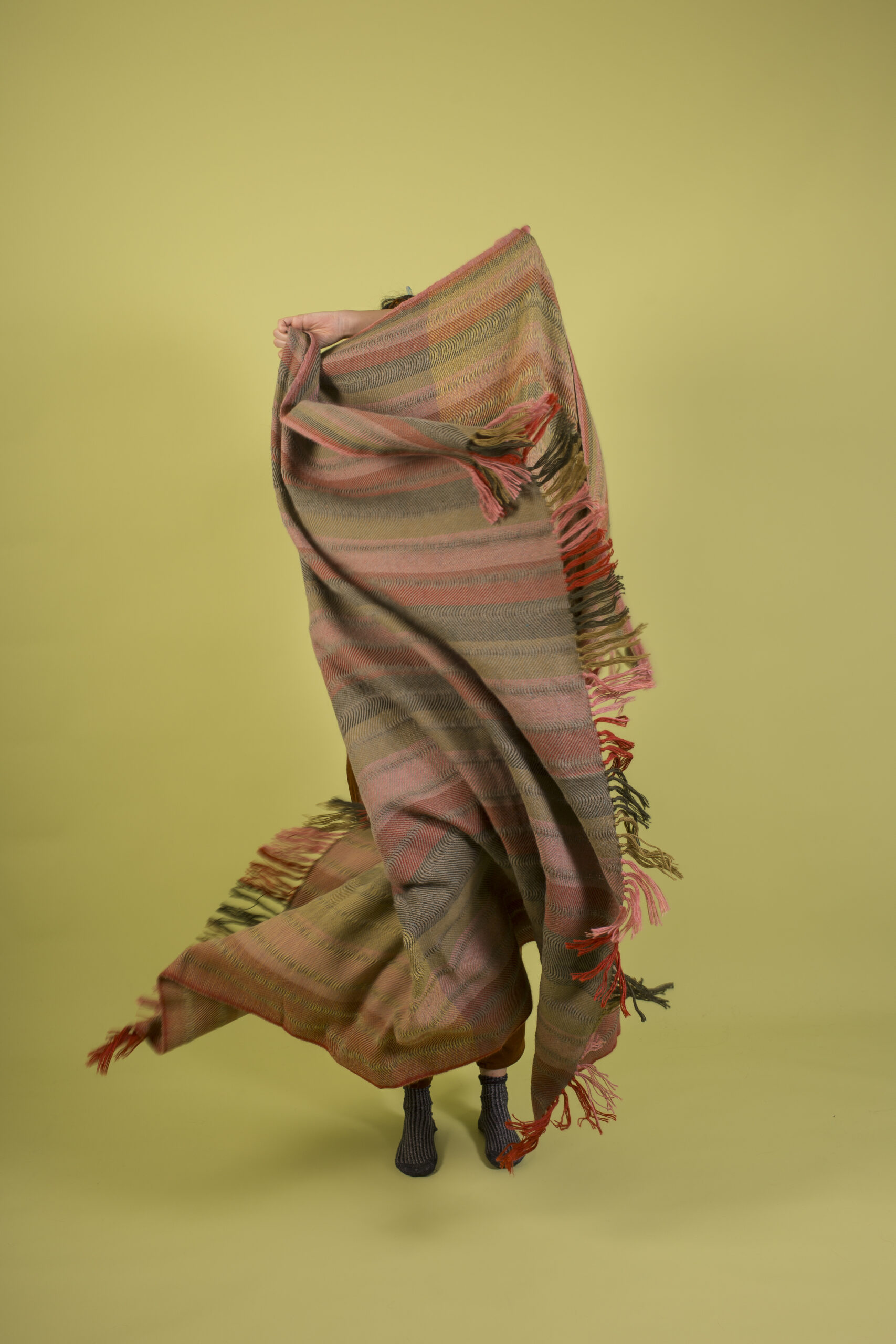

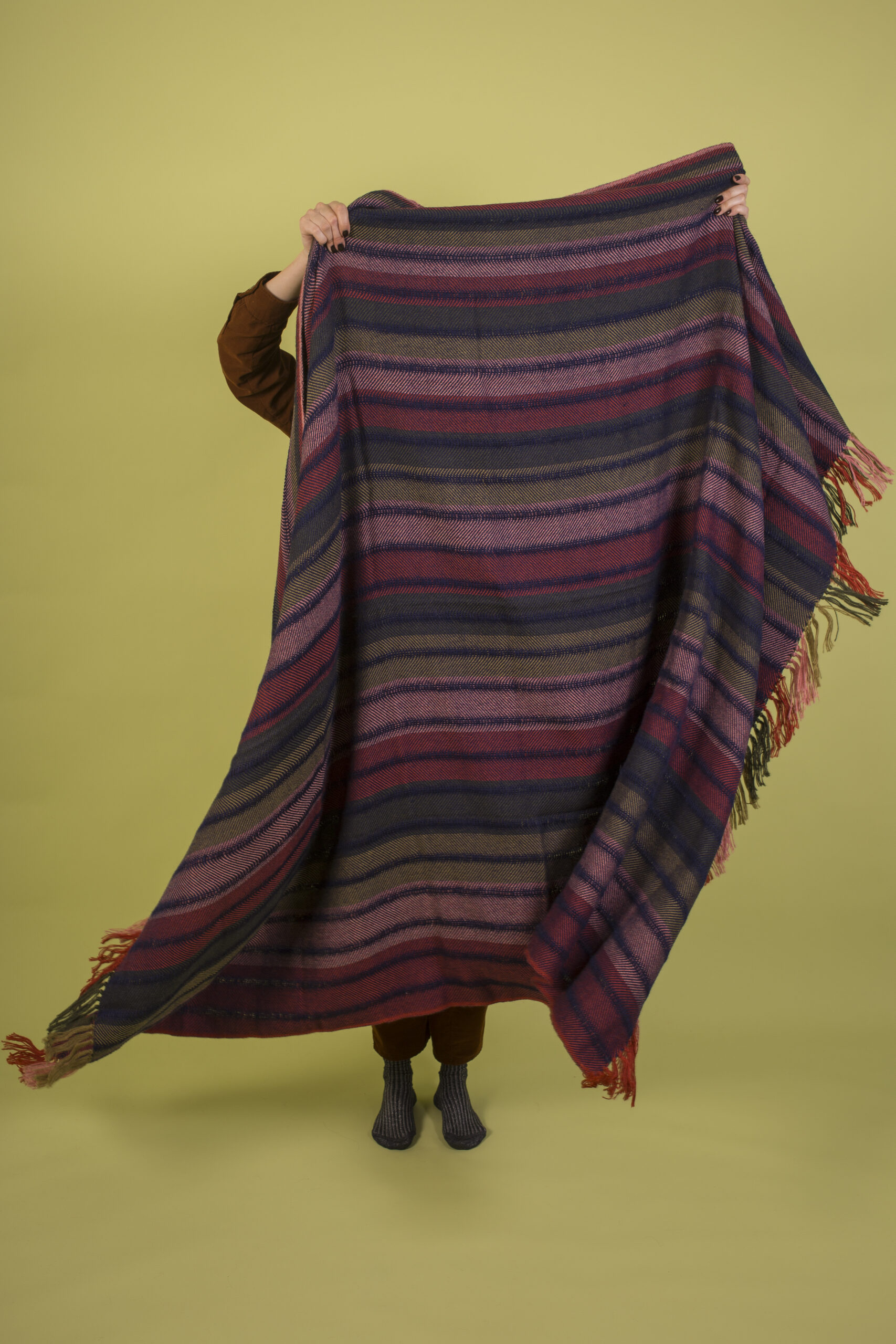
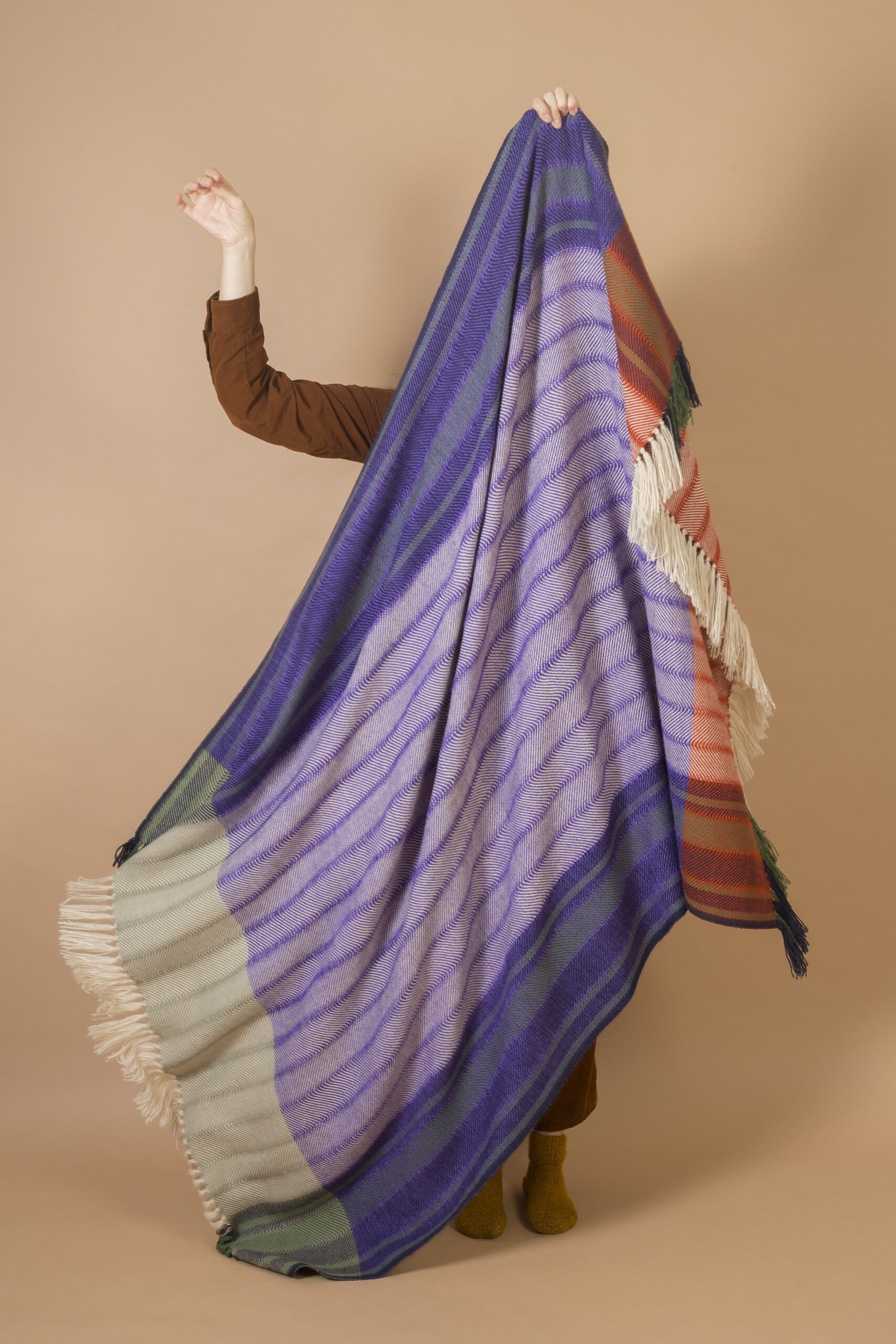
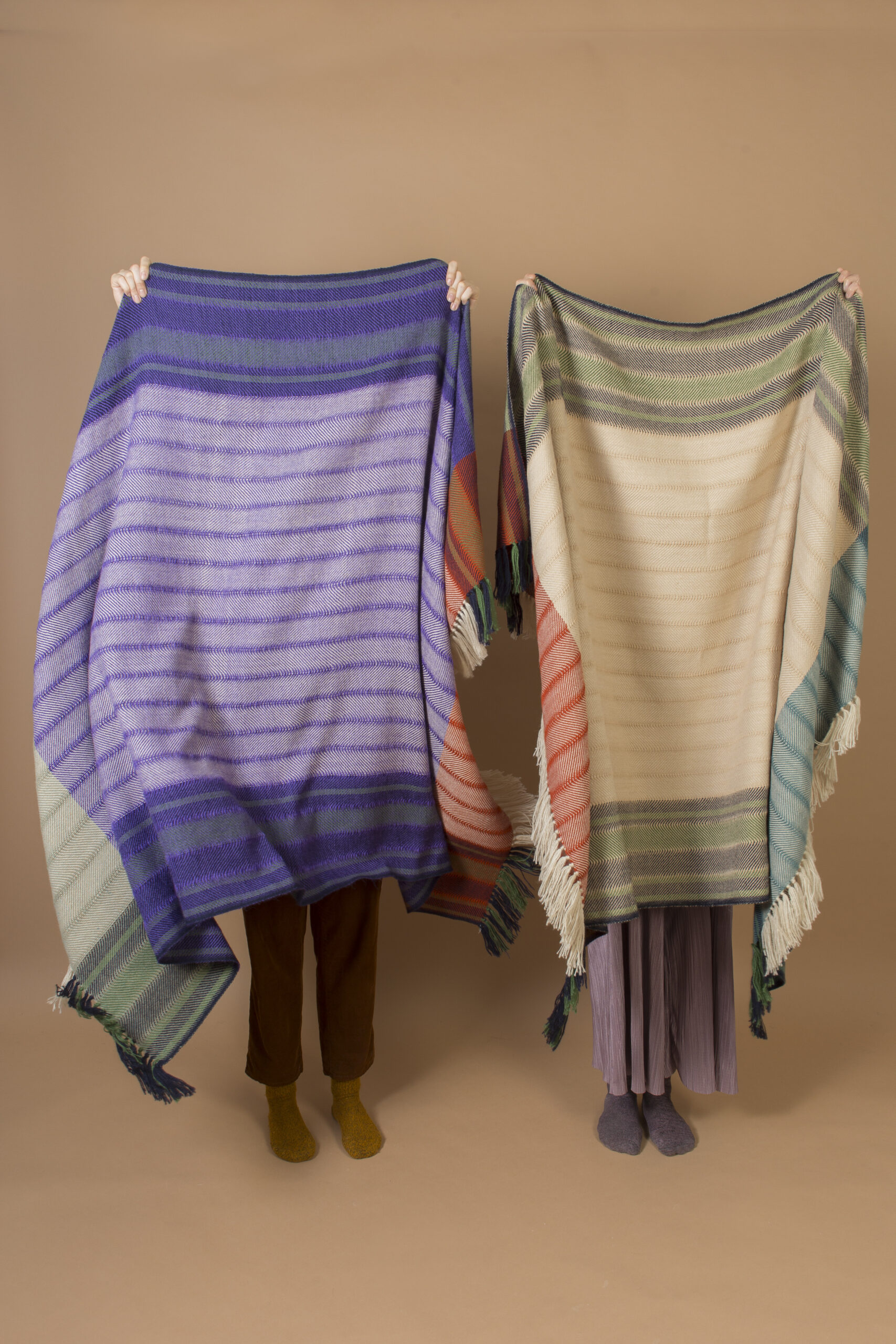
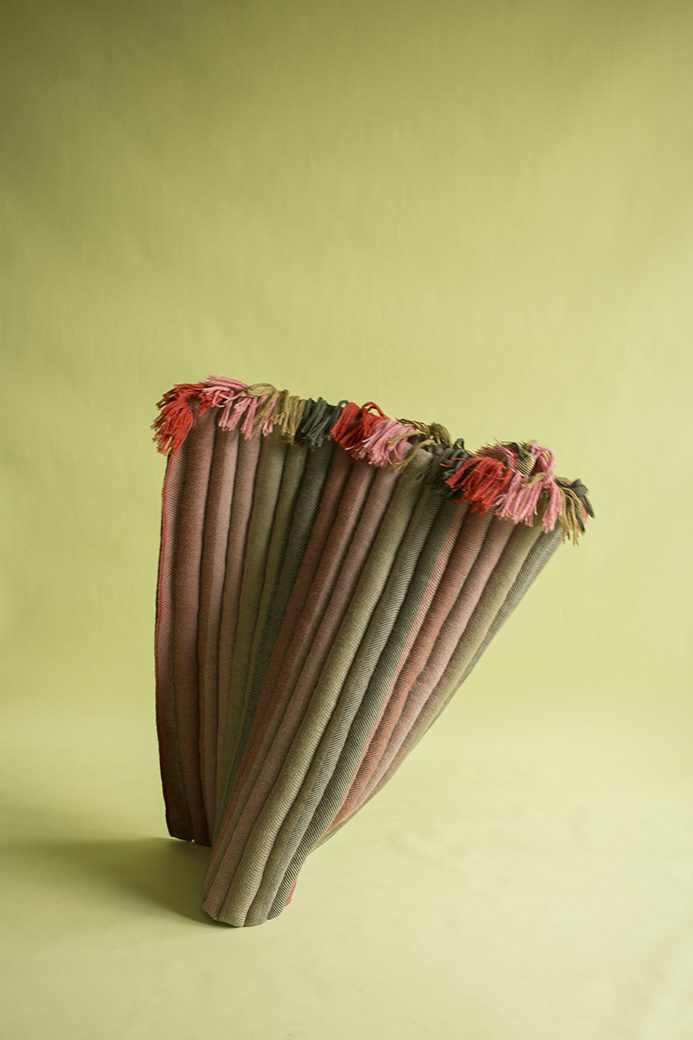

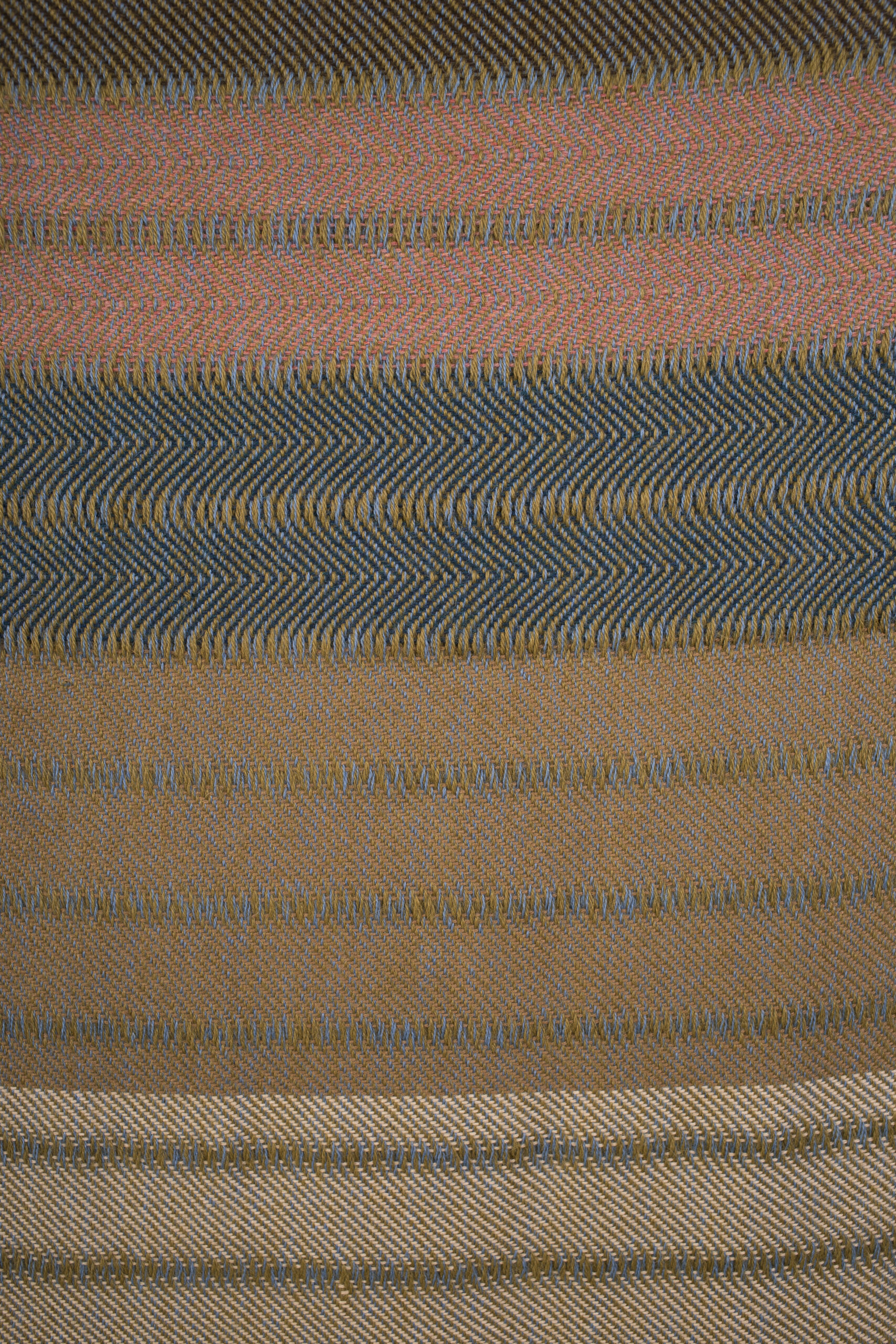
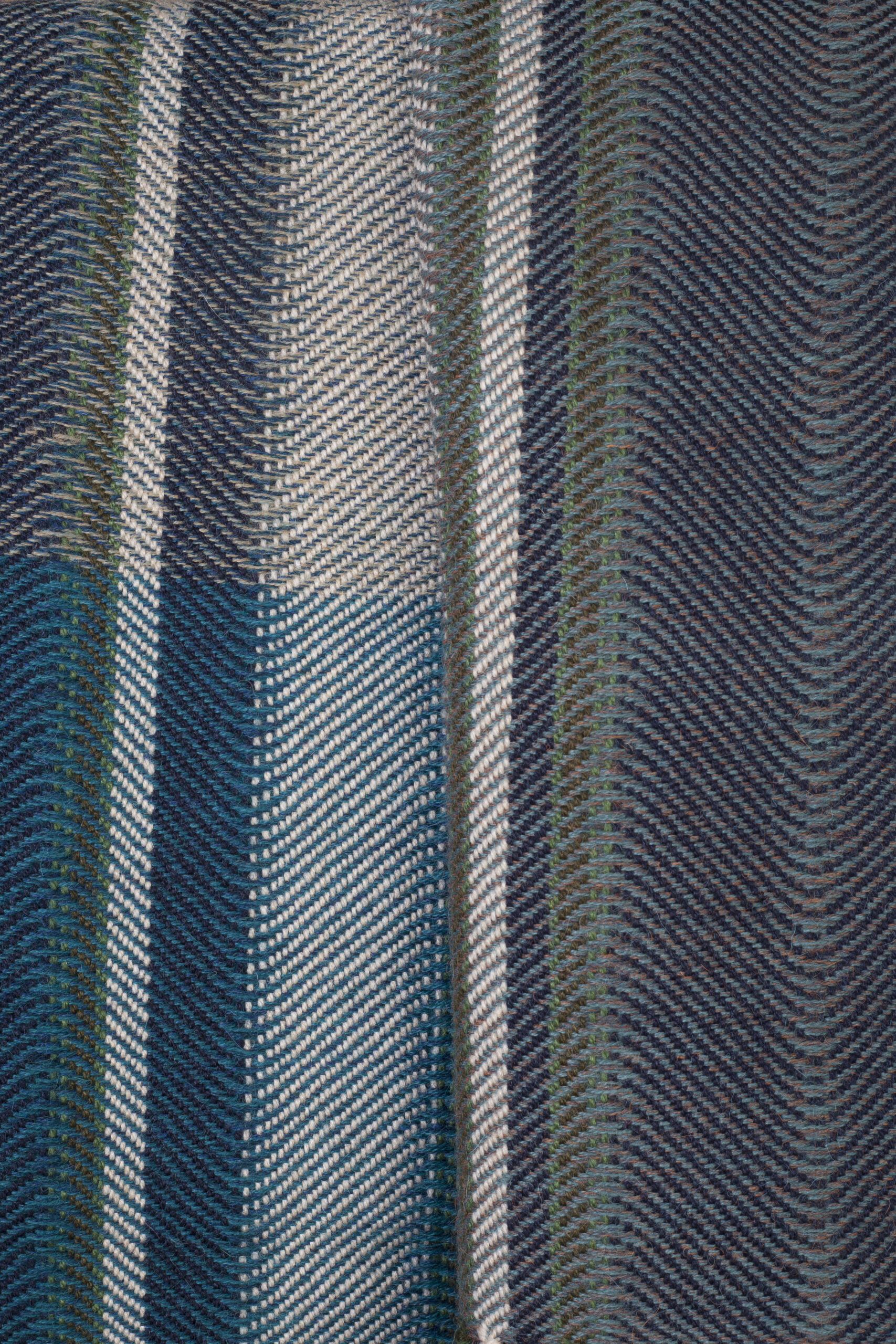
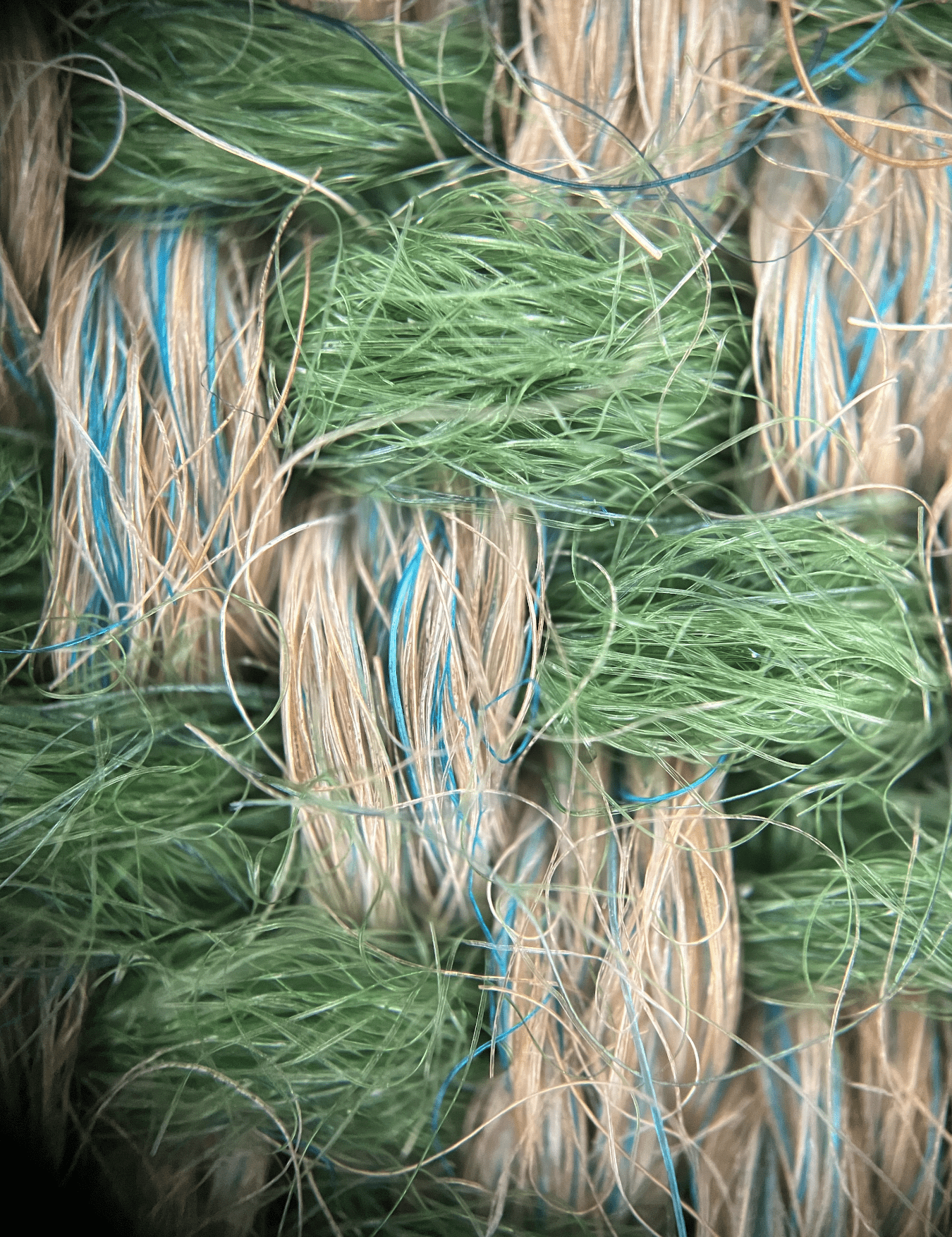

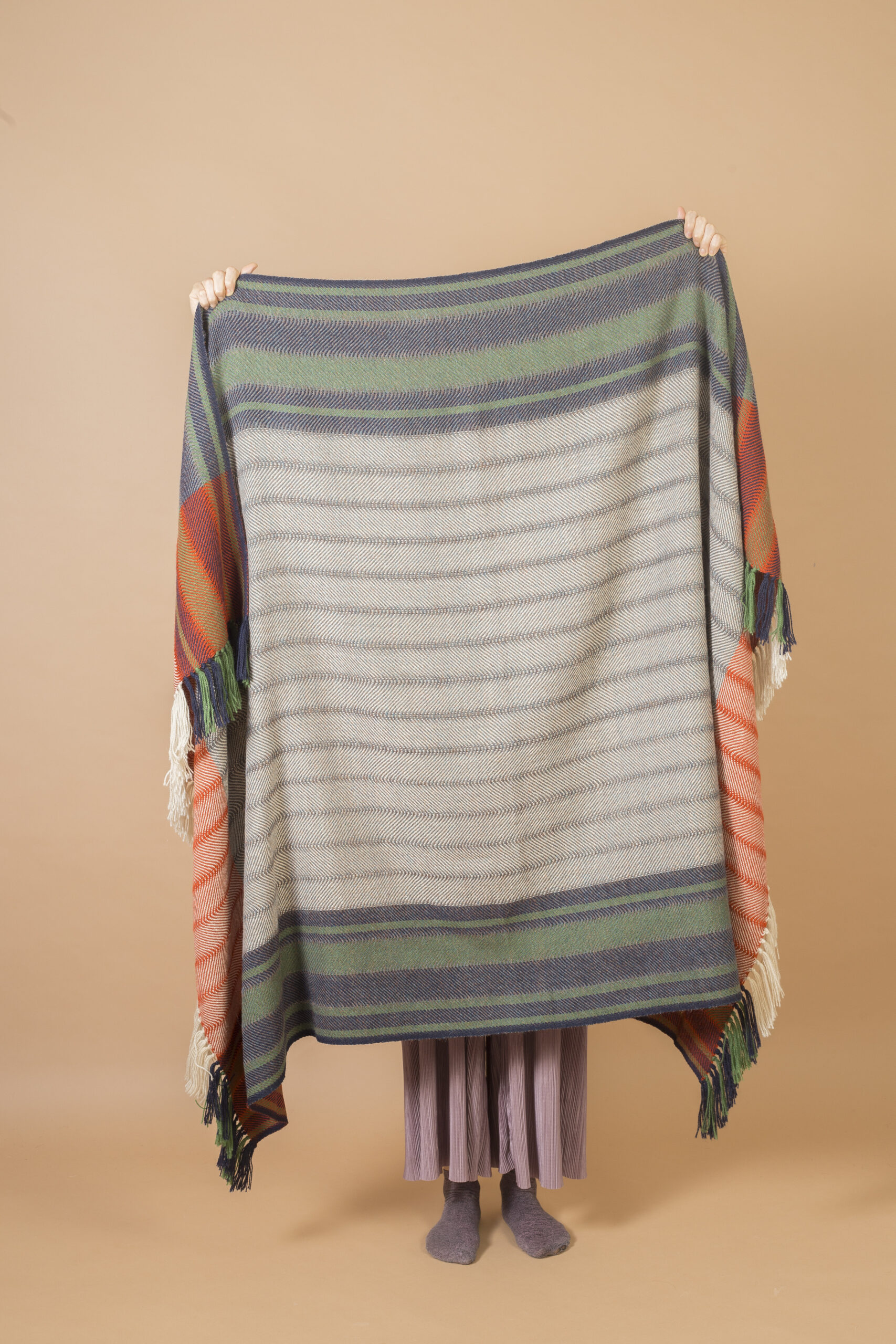

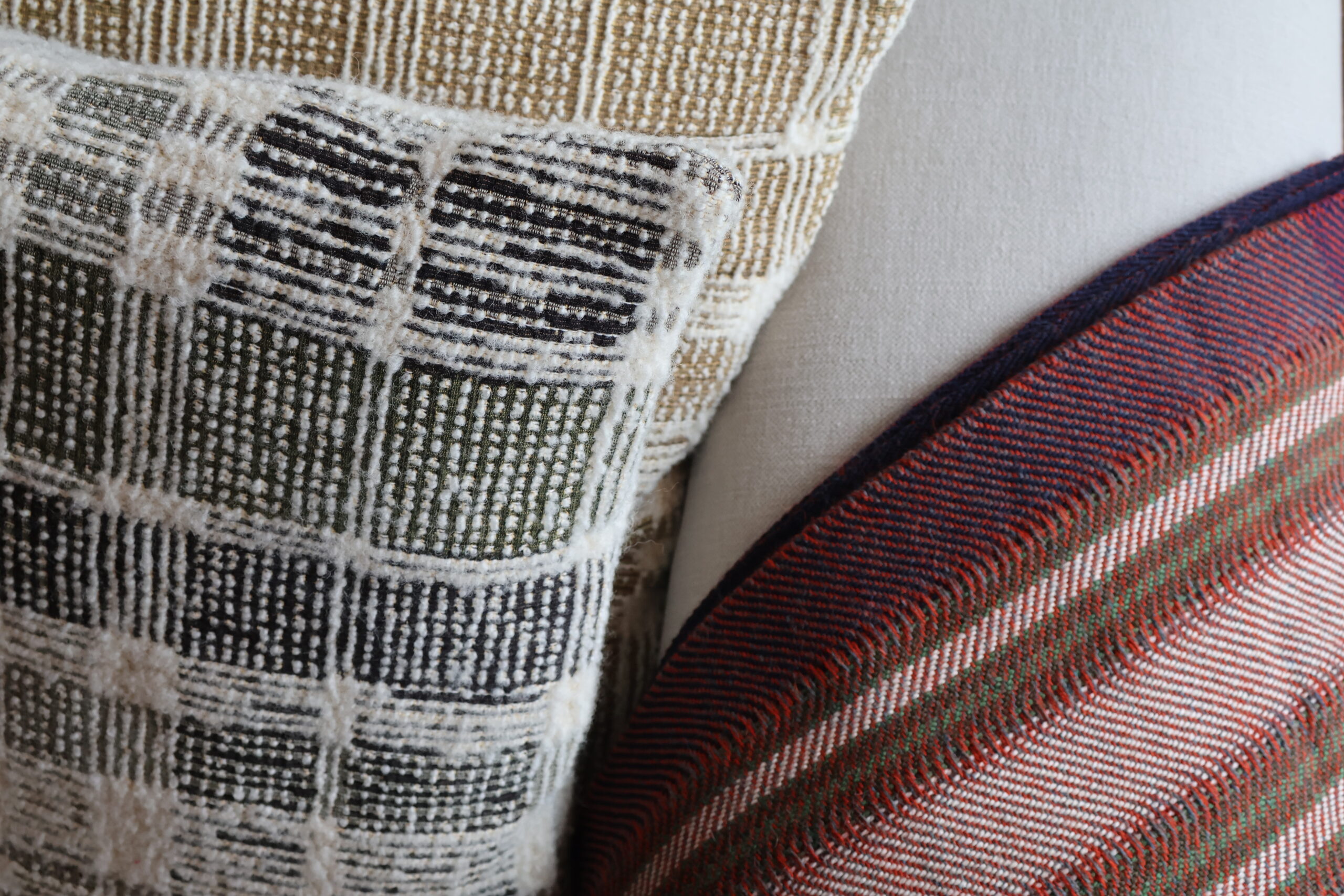
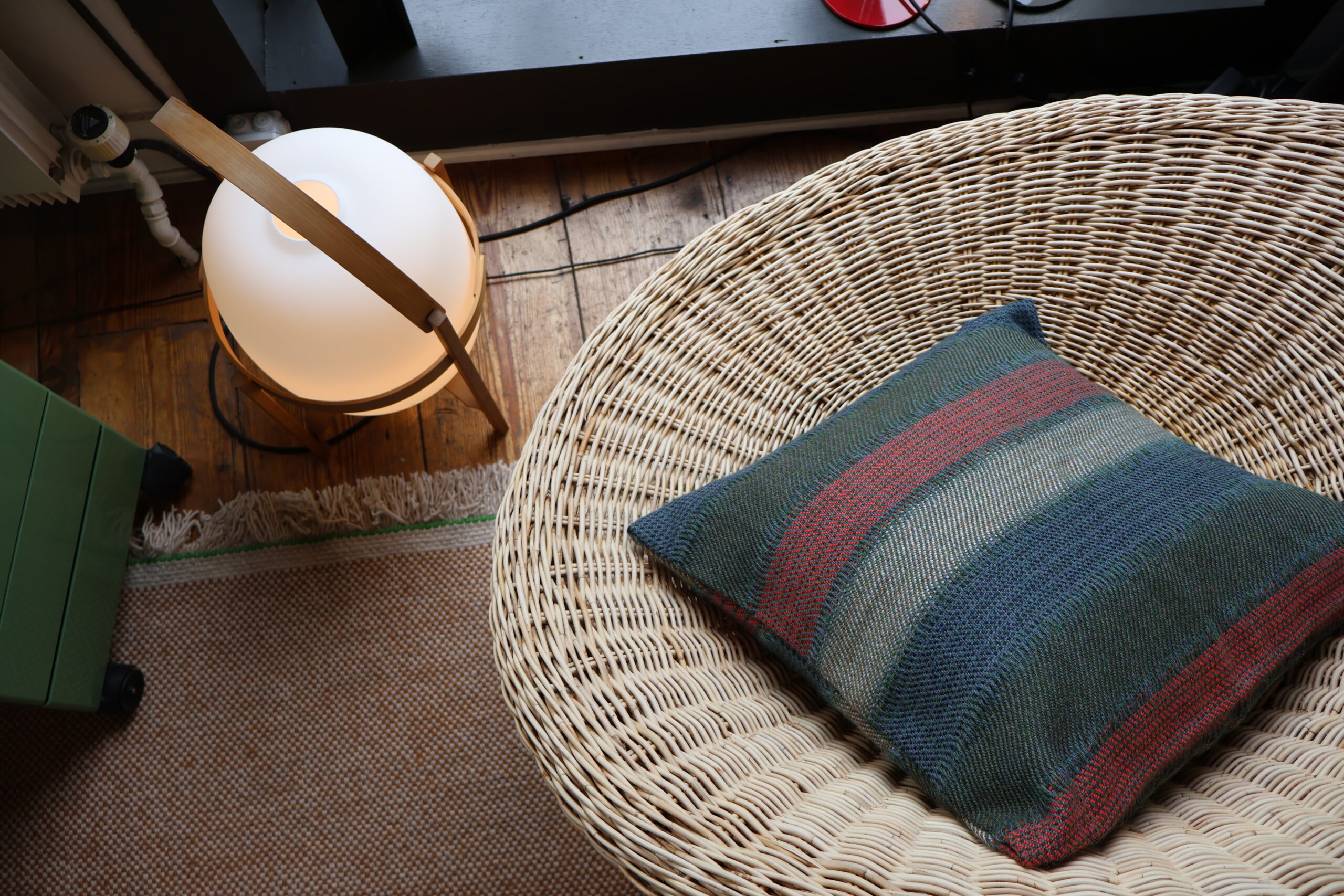
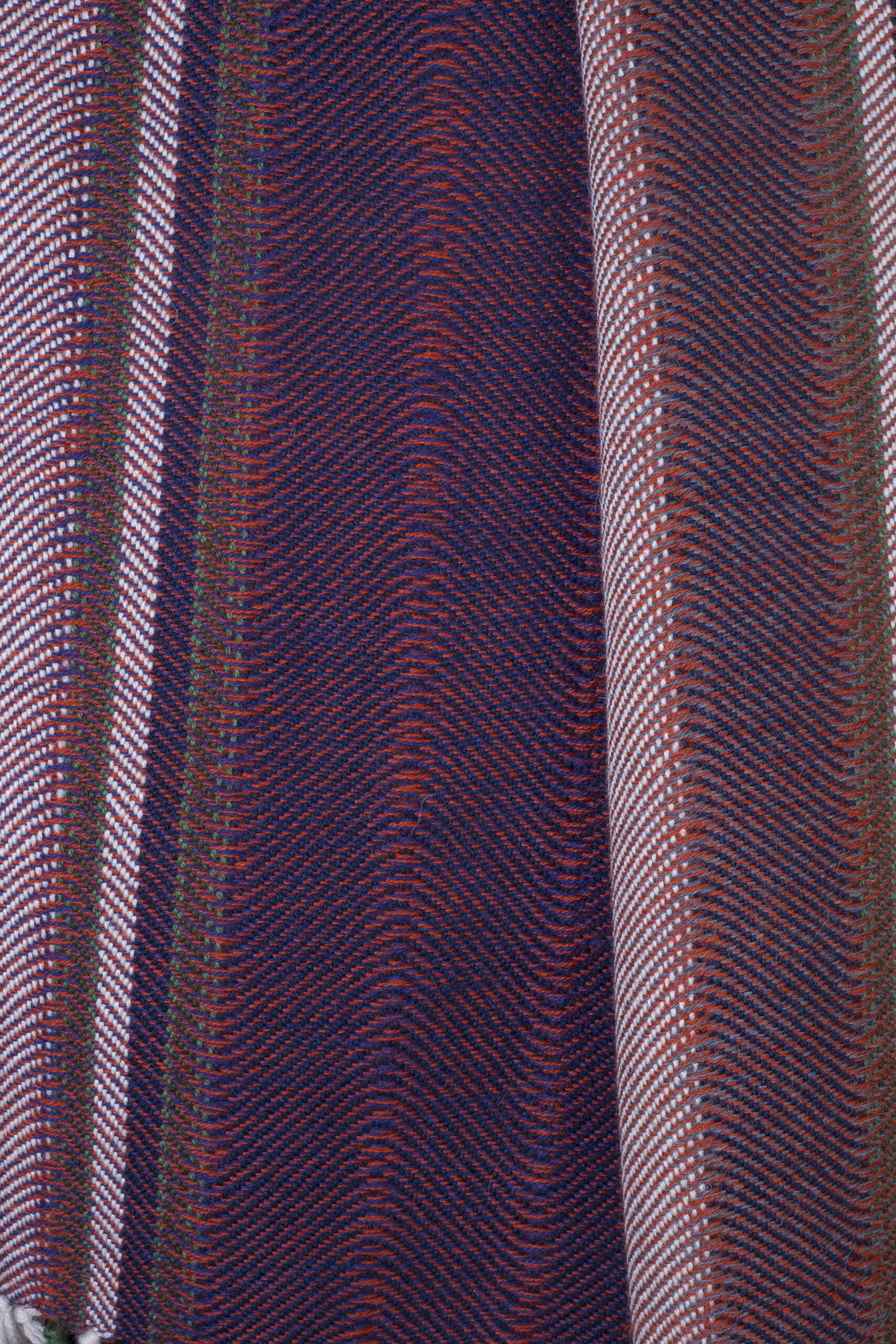
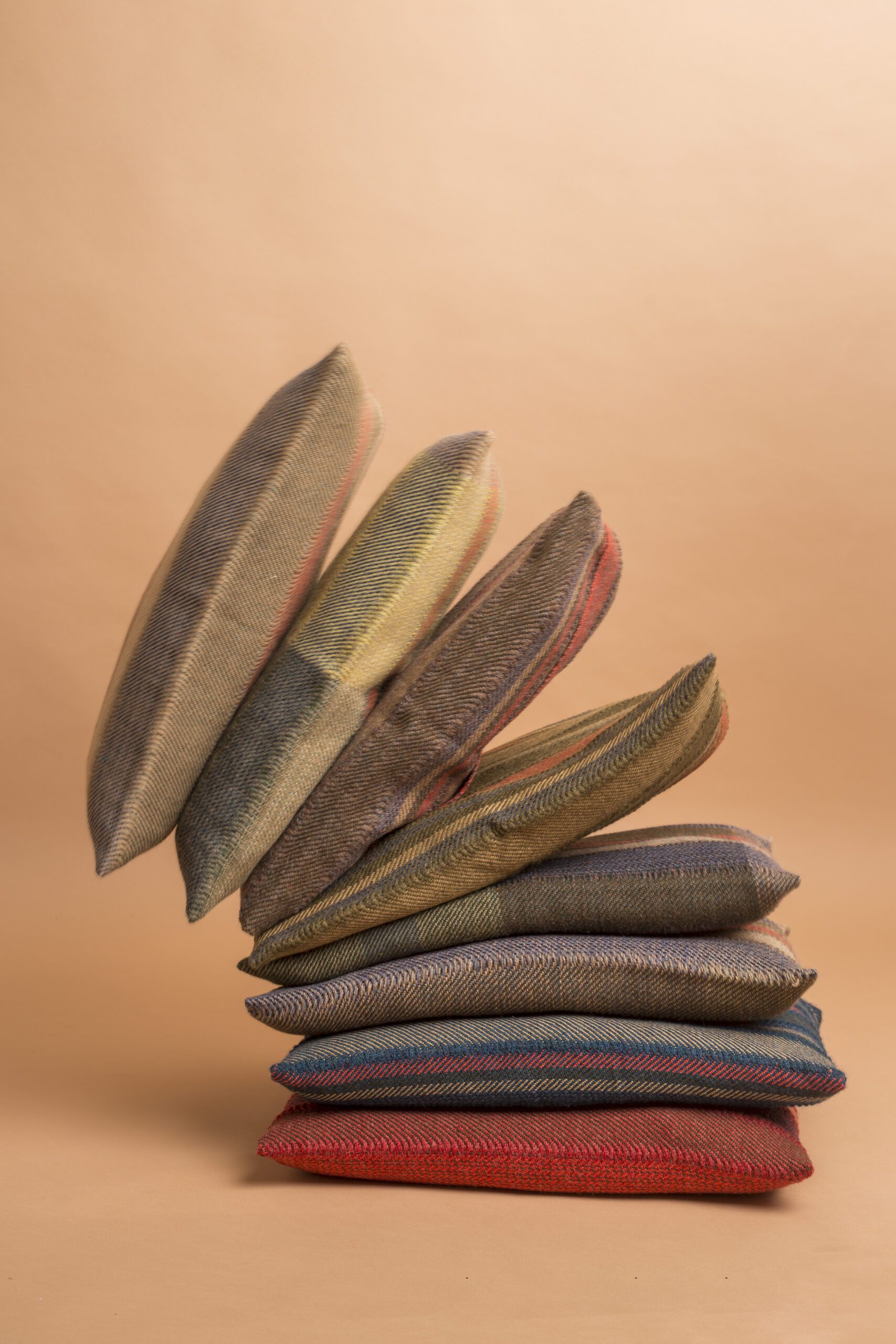
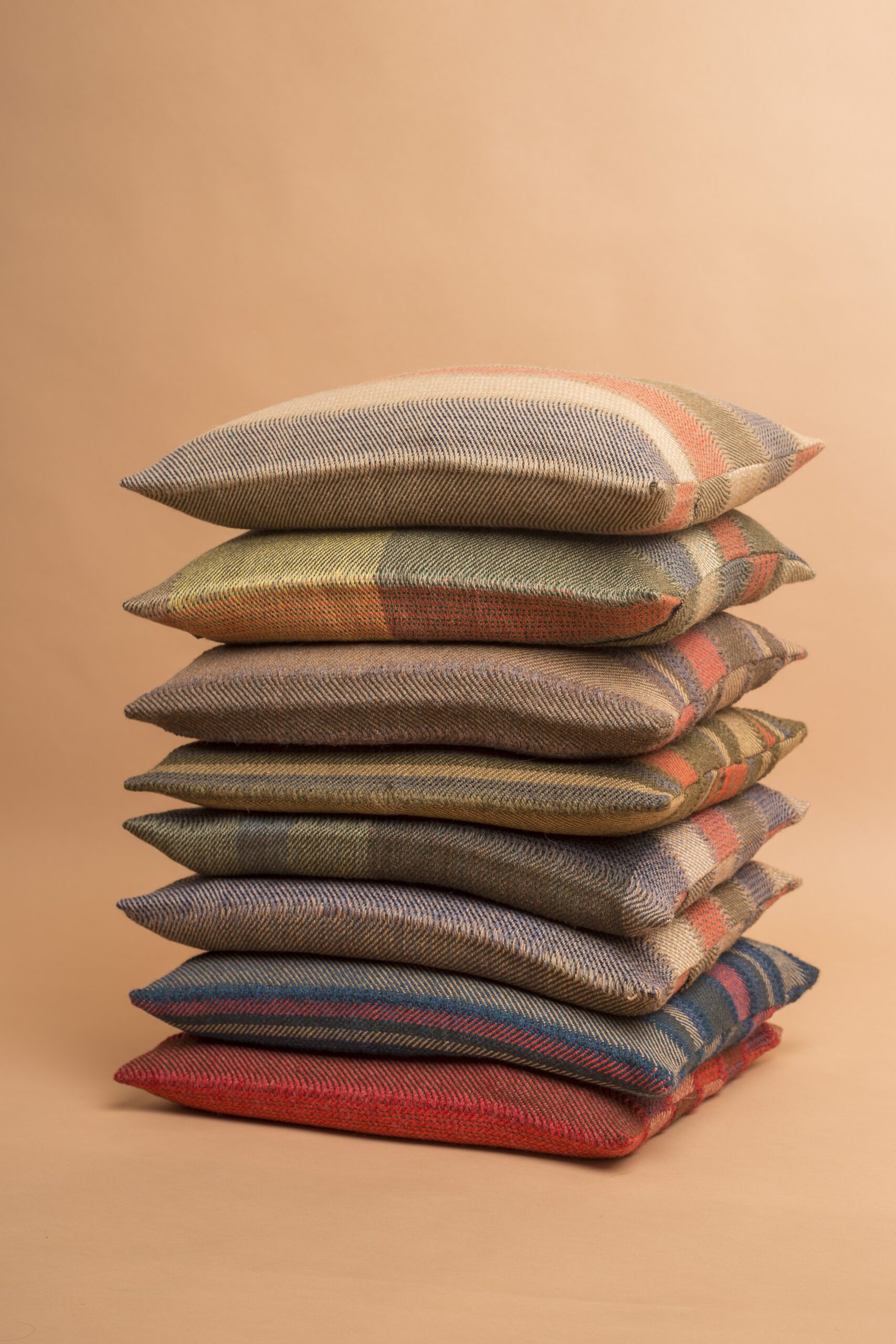
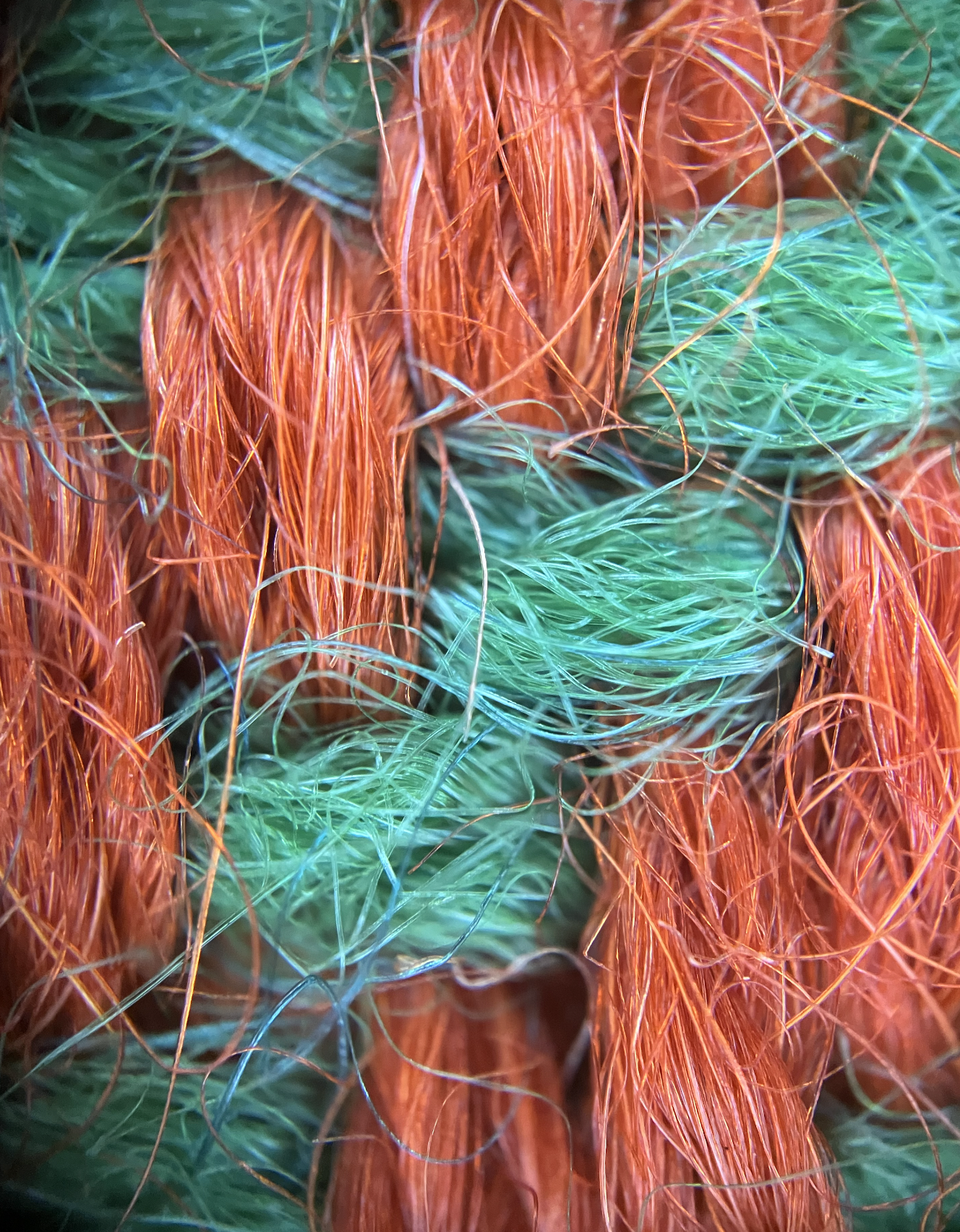
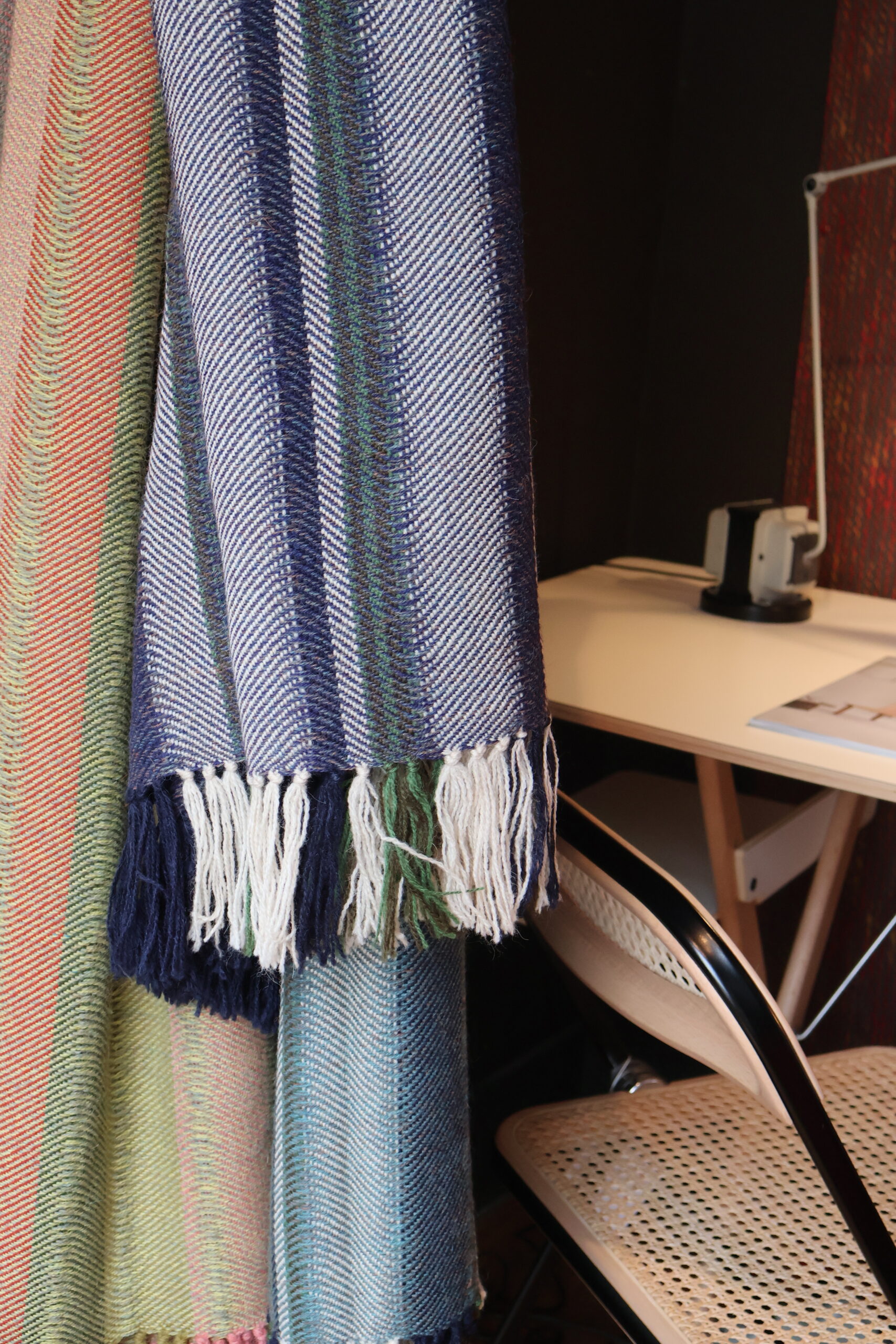
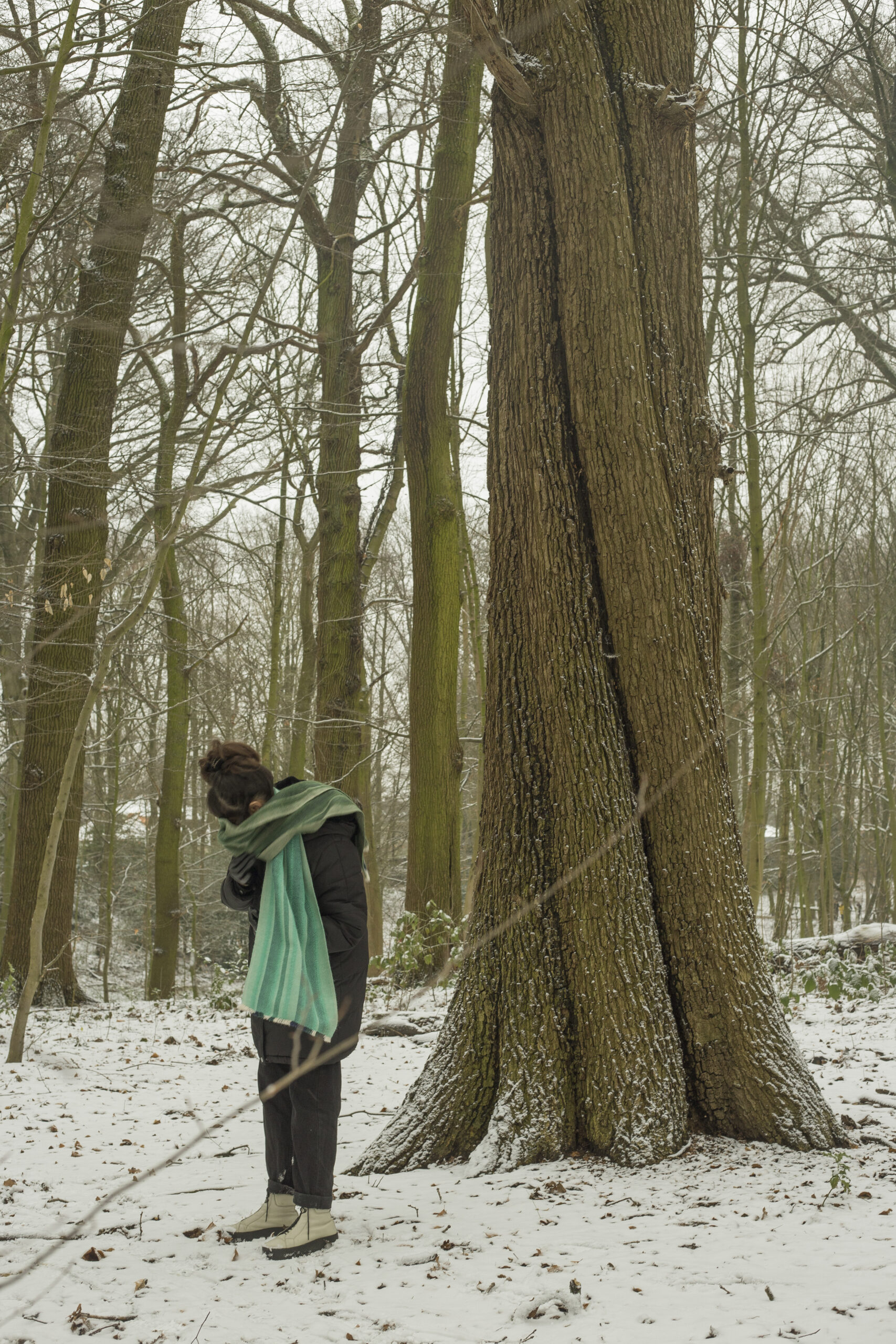

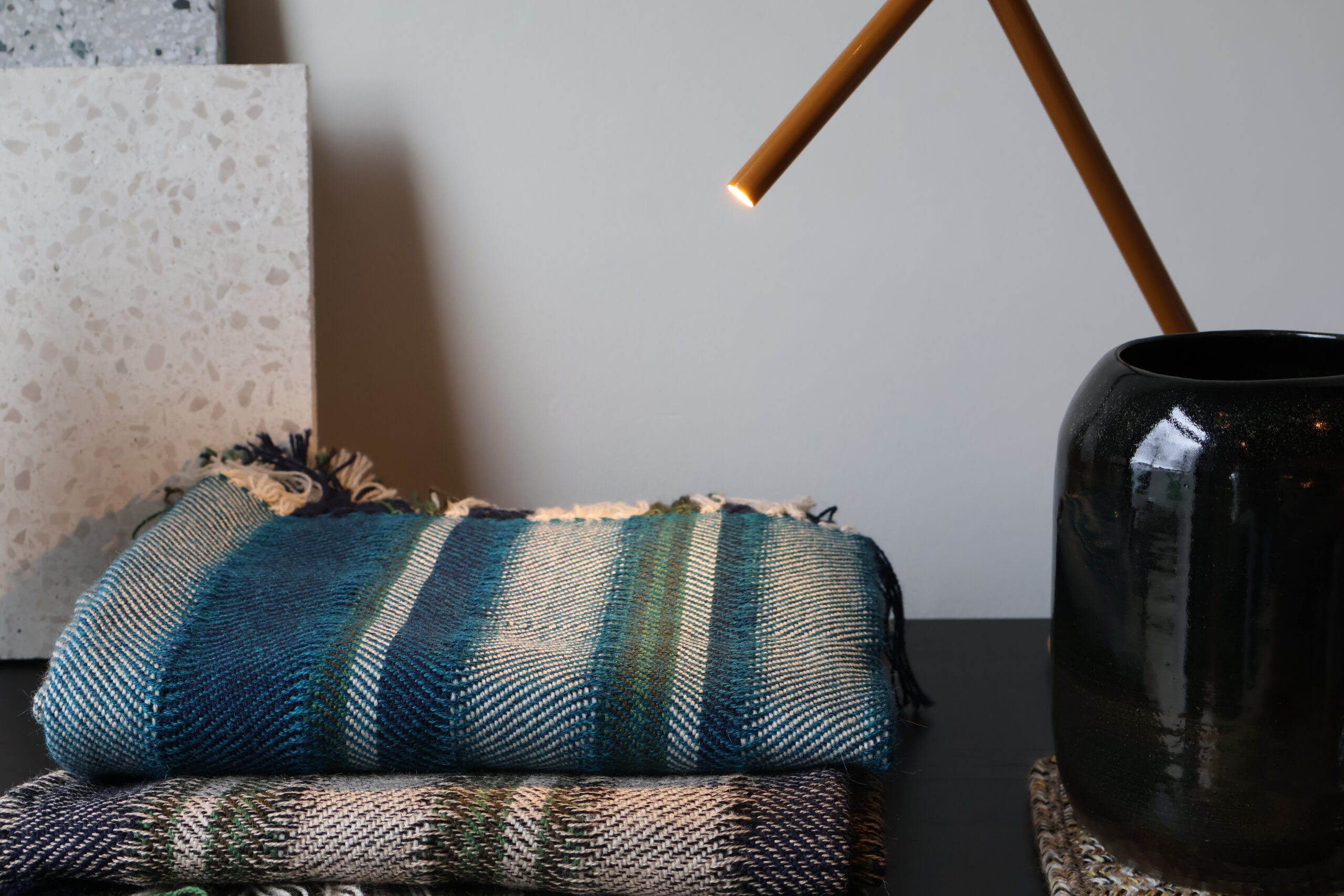
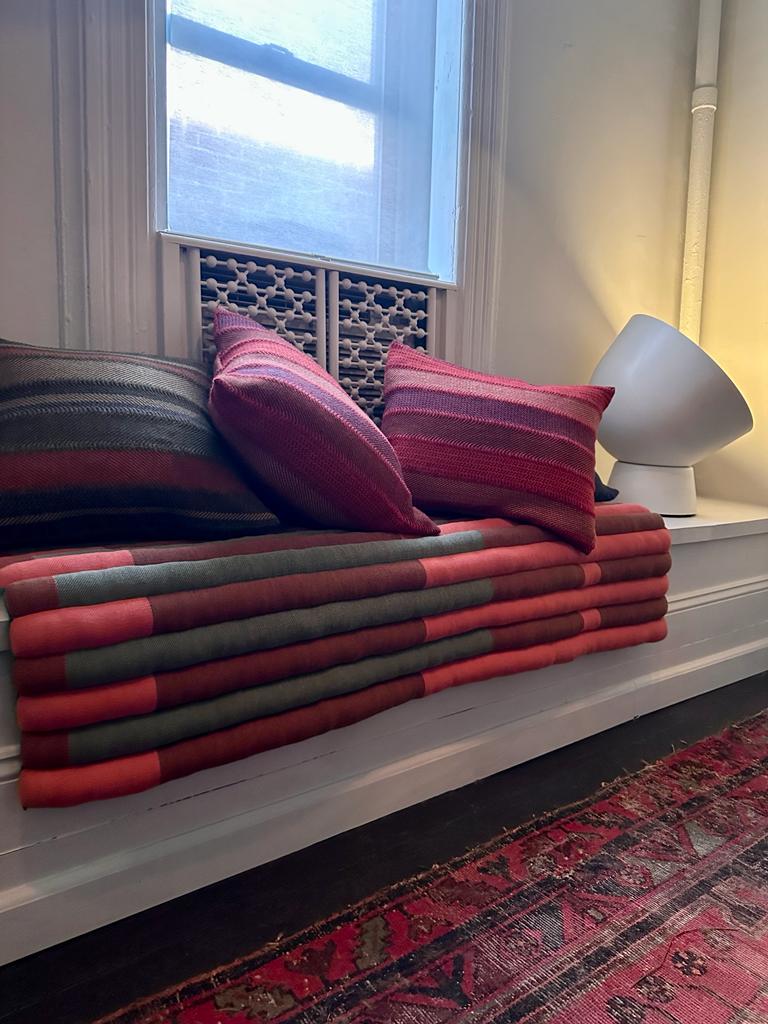


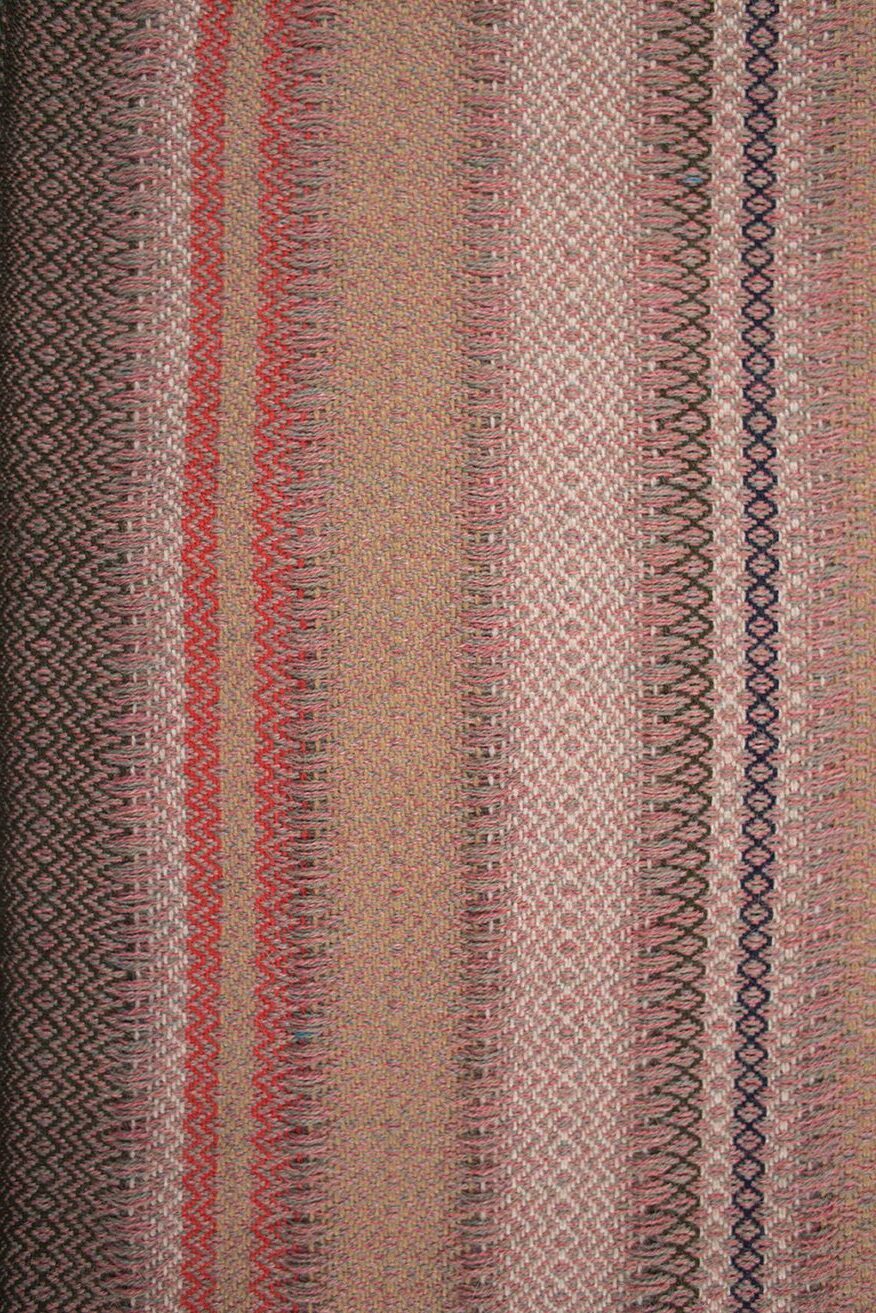

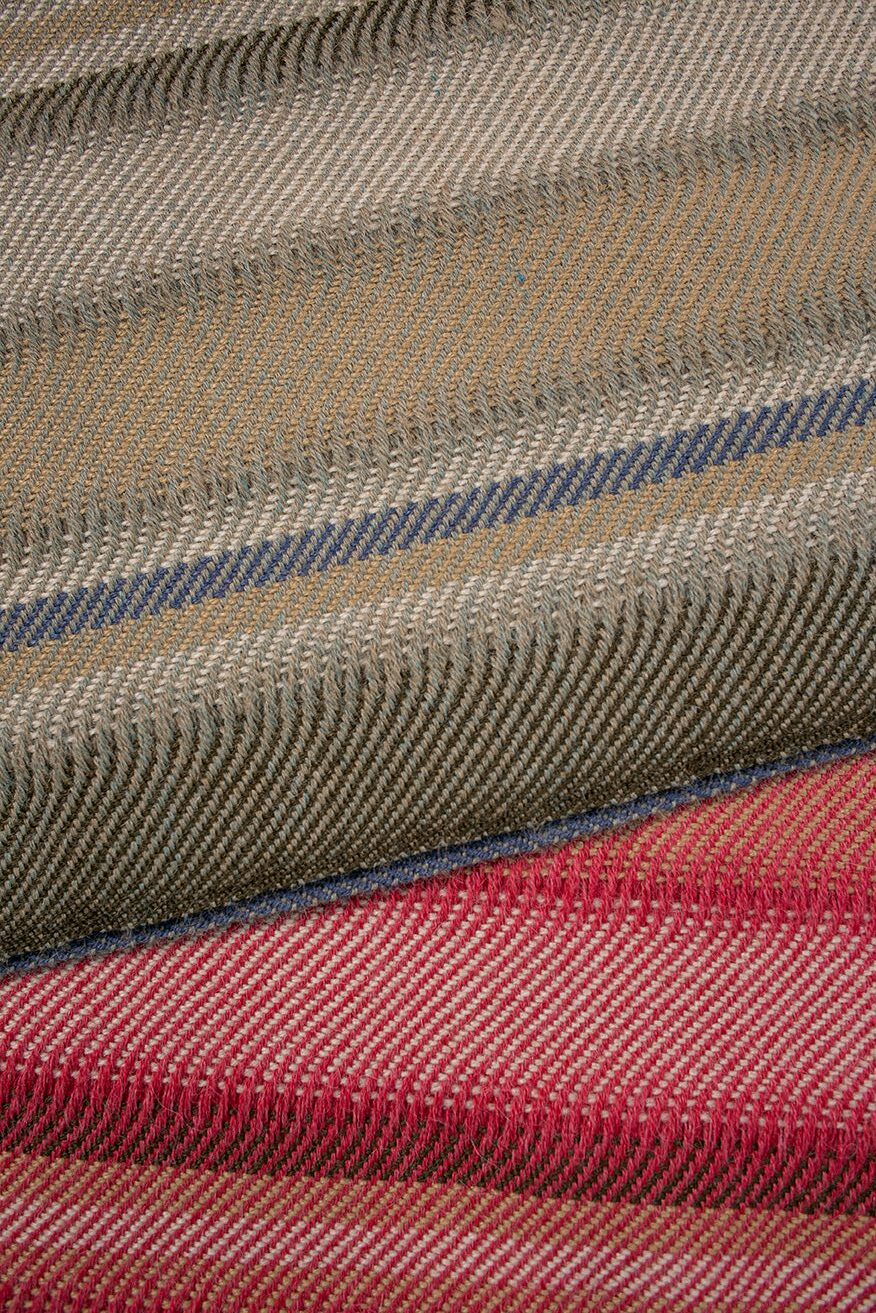

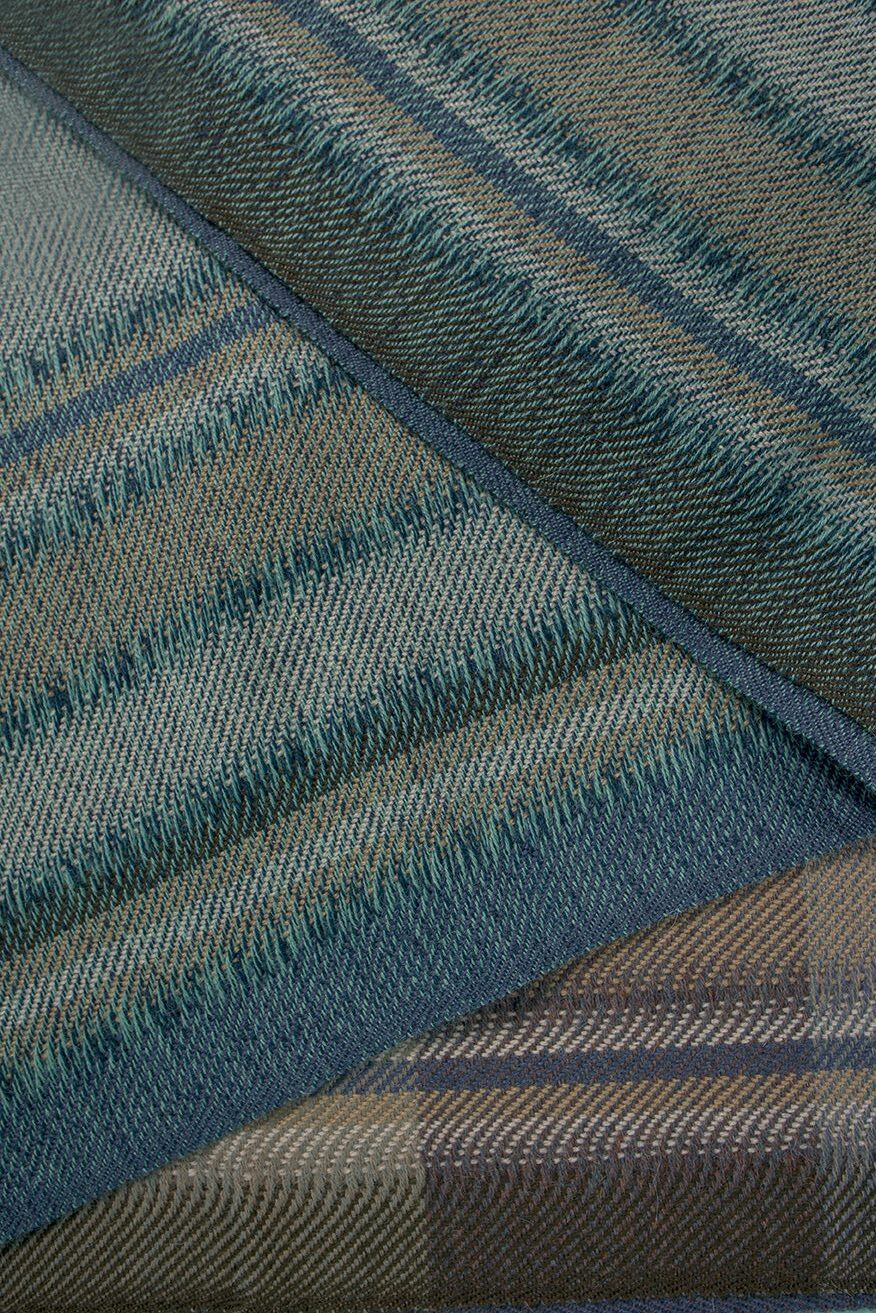
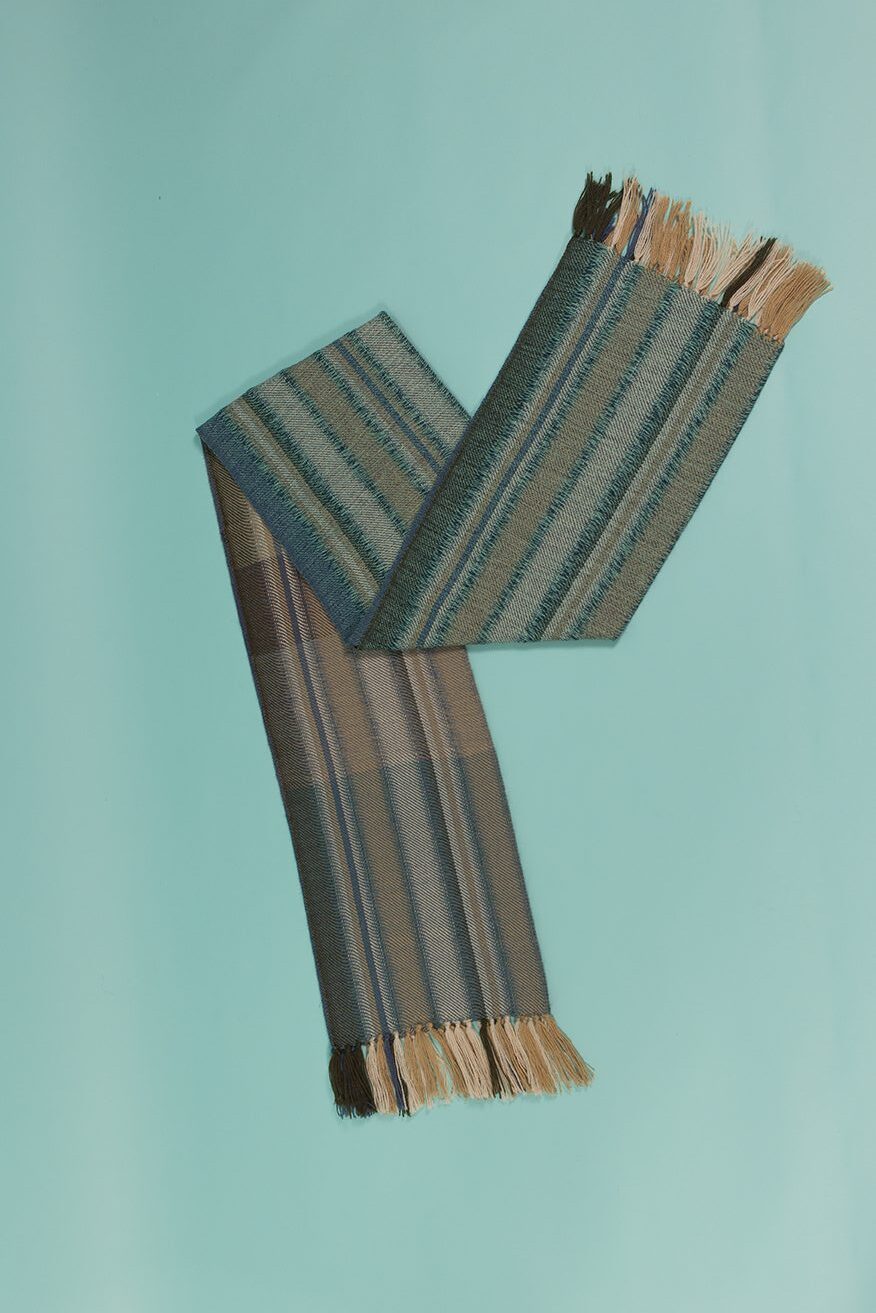


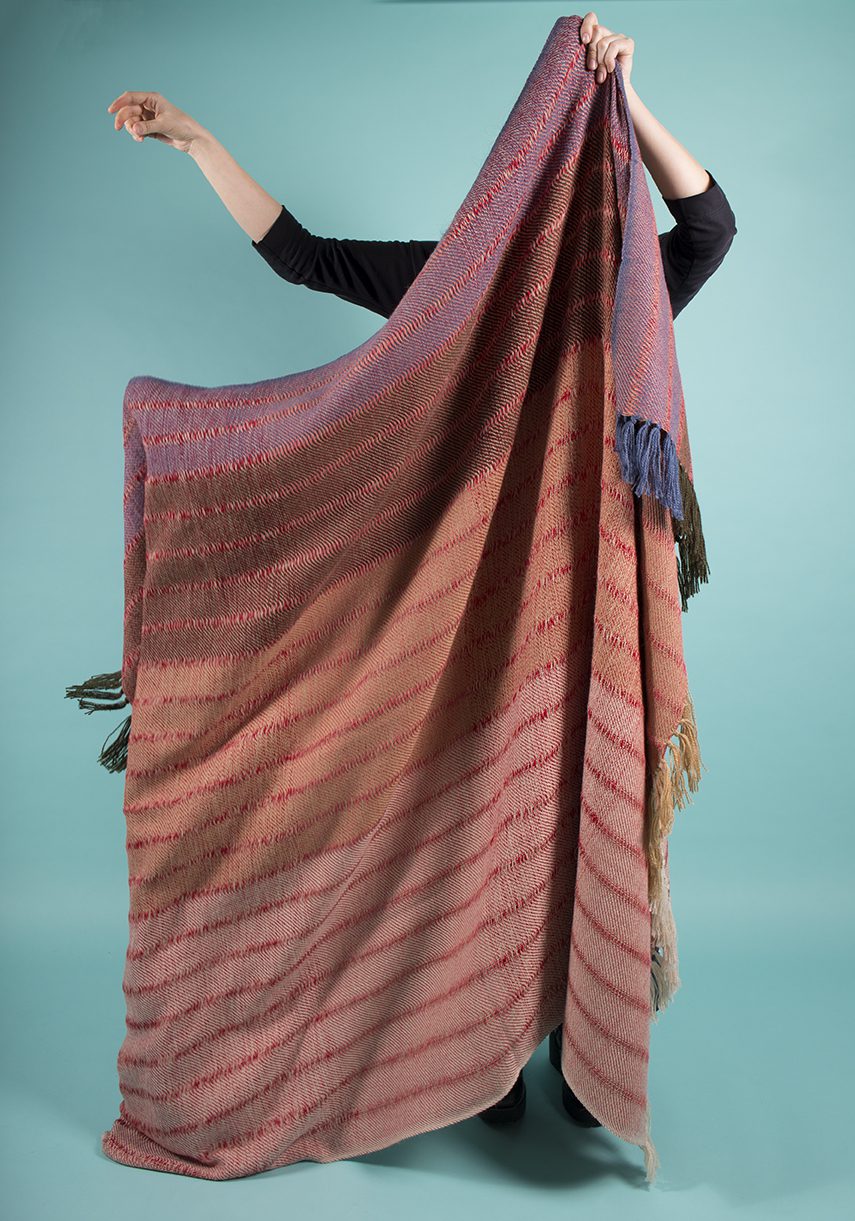
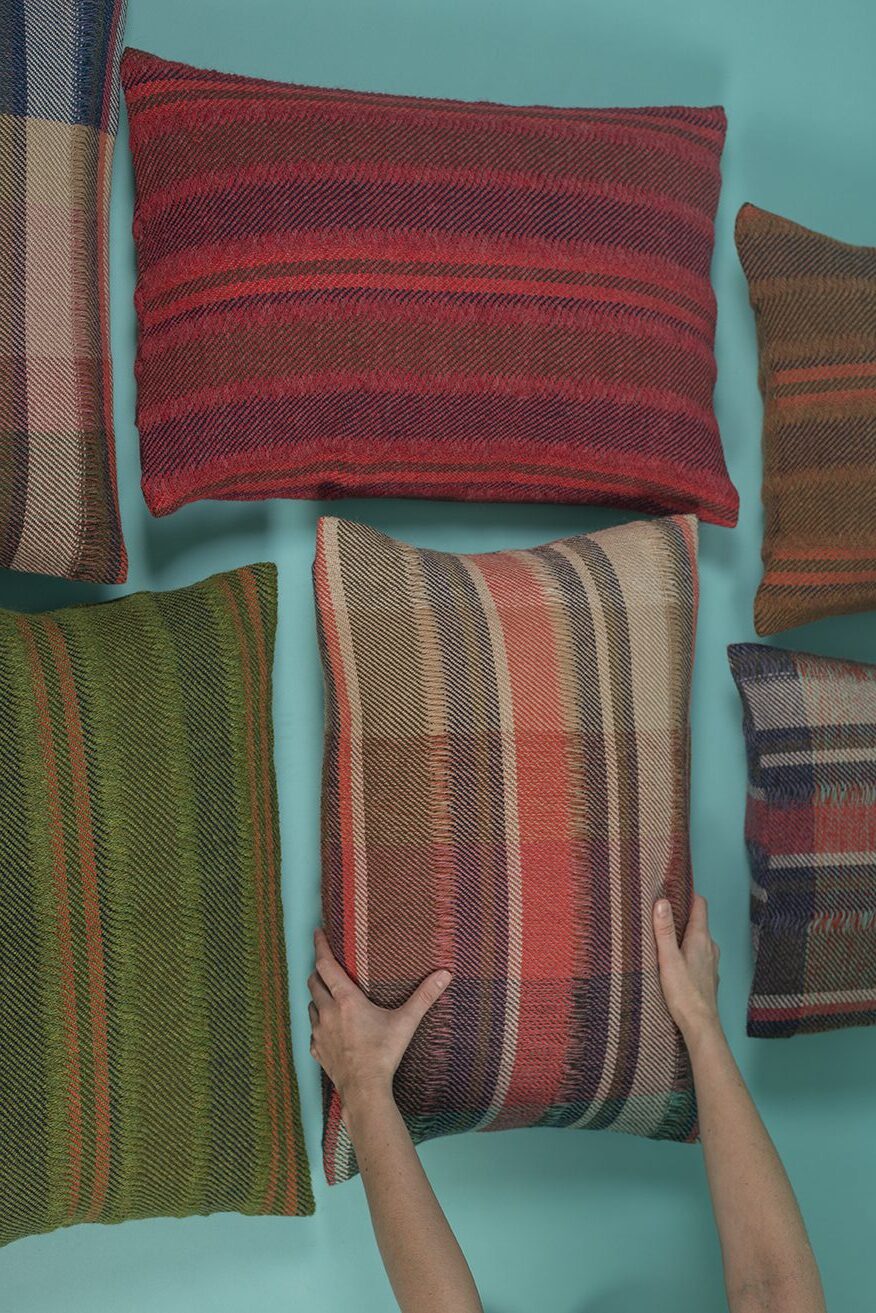
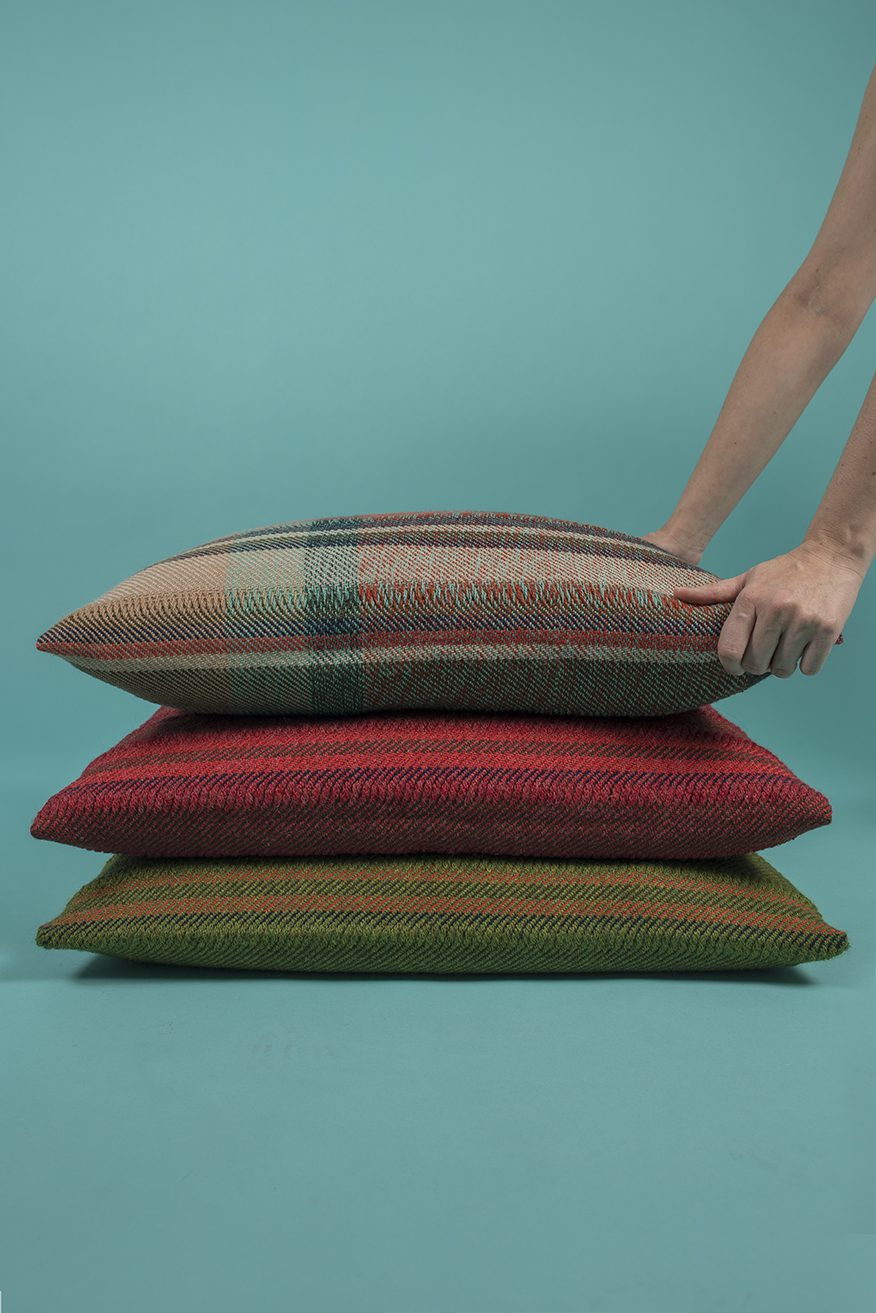



Production process
Our process begins with a shared dialogue. Sitting side by side at the loom, we engage in an exchange of knowledge and ideas. William brings his expertise in traditional weaving techniques, while I contribute a contemporary perspective on design and aesthetics. Together, we reinterpret the graphic symbols and weaving structures that have defined this region since pre-colonial times. This collaborative approach allows us to twist and reimagine these elements, creating textiles that are both rooted in history and relevant to the present.

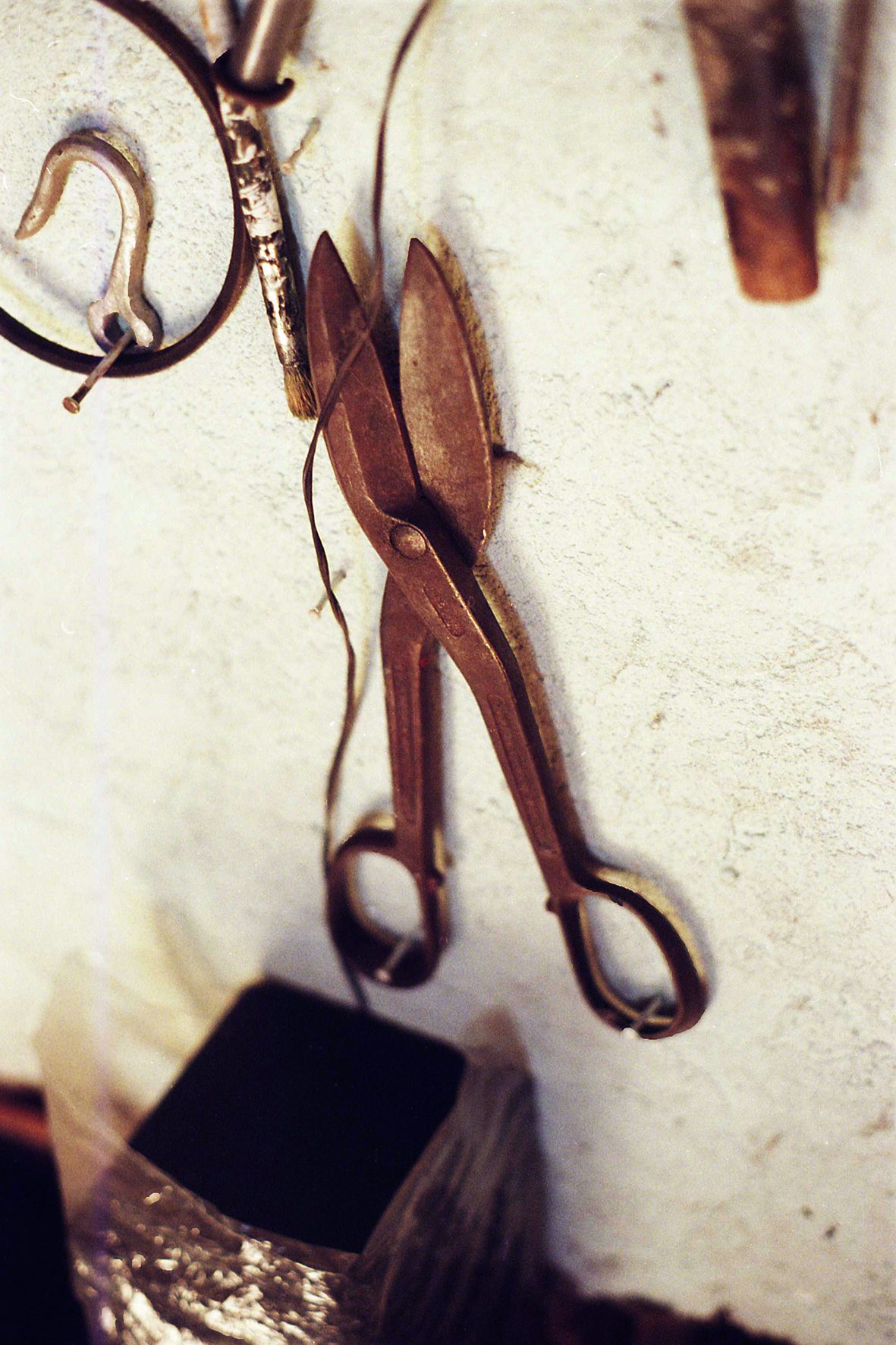
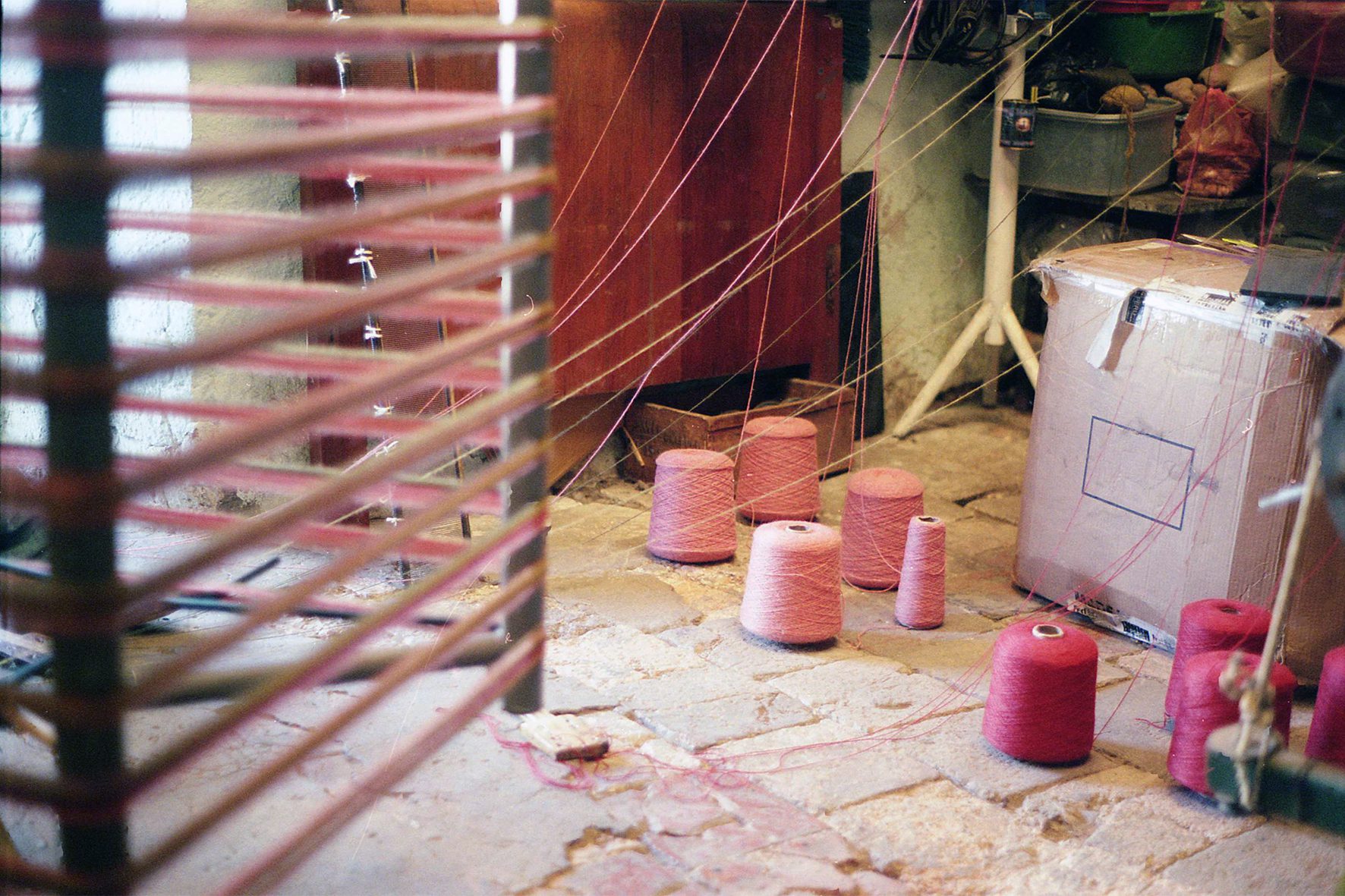
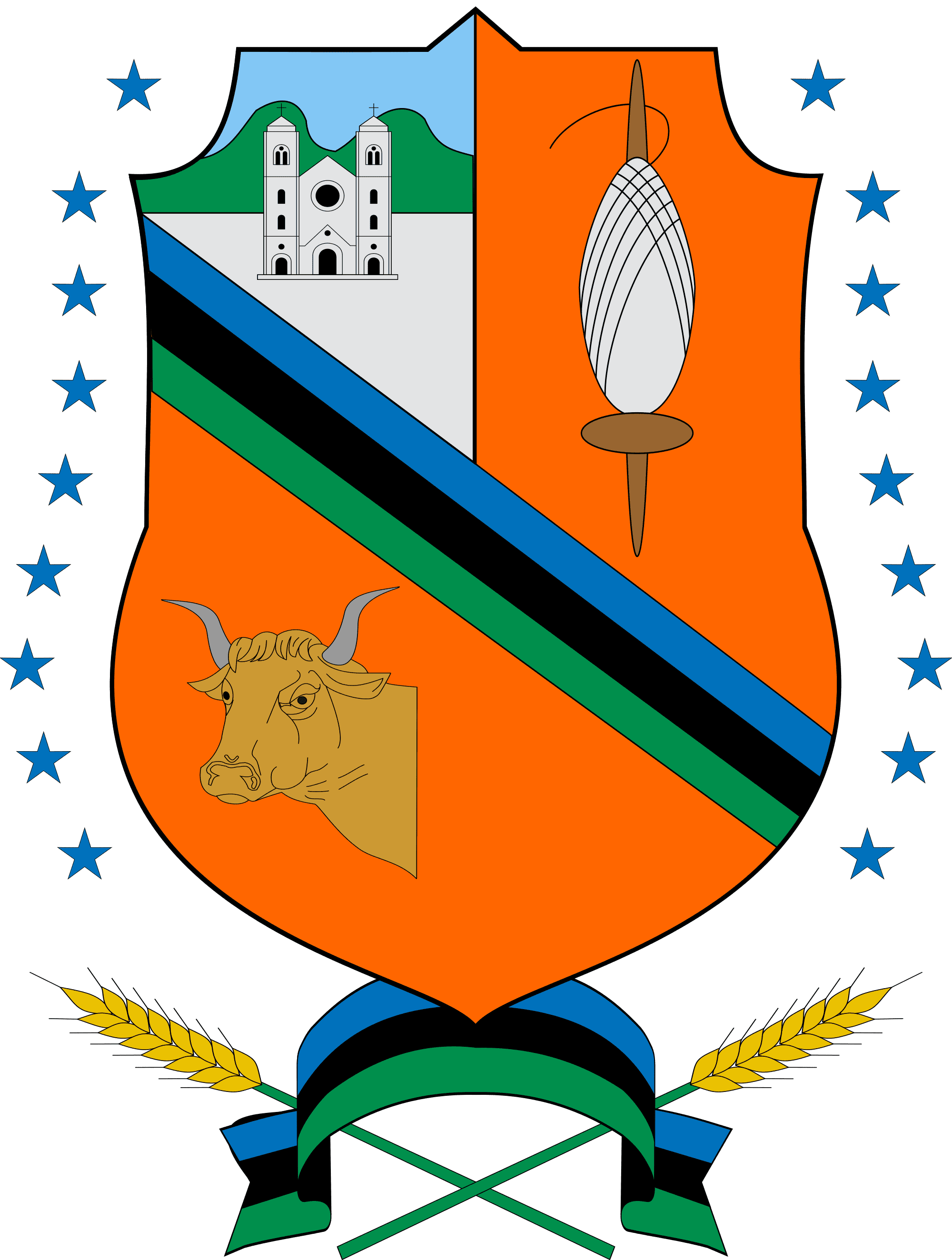
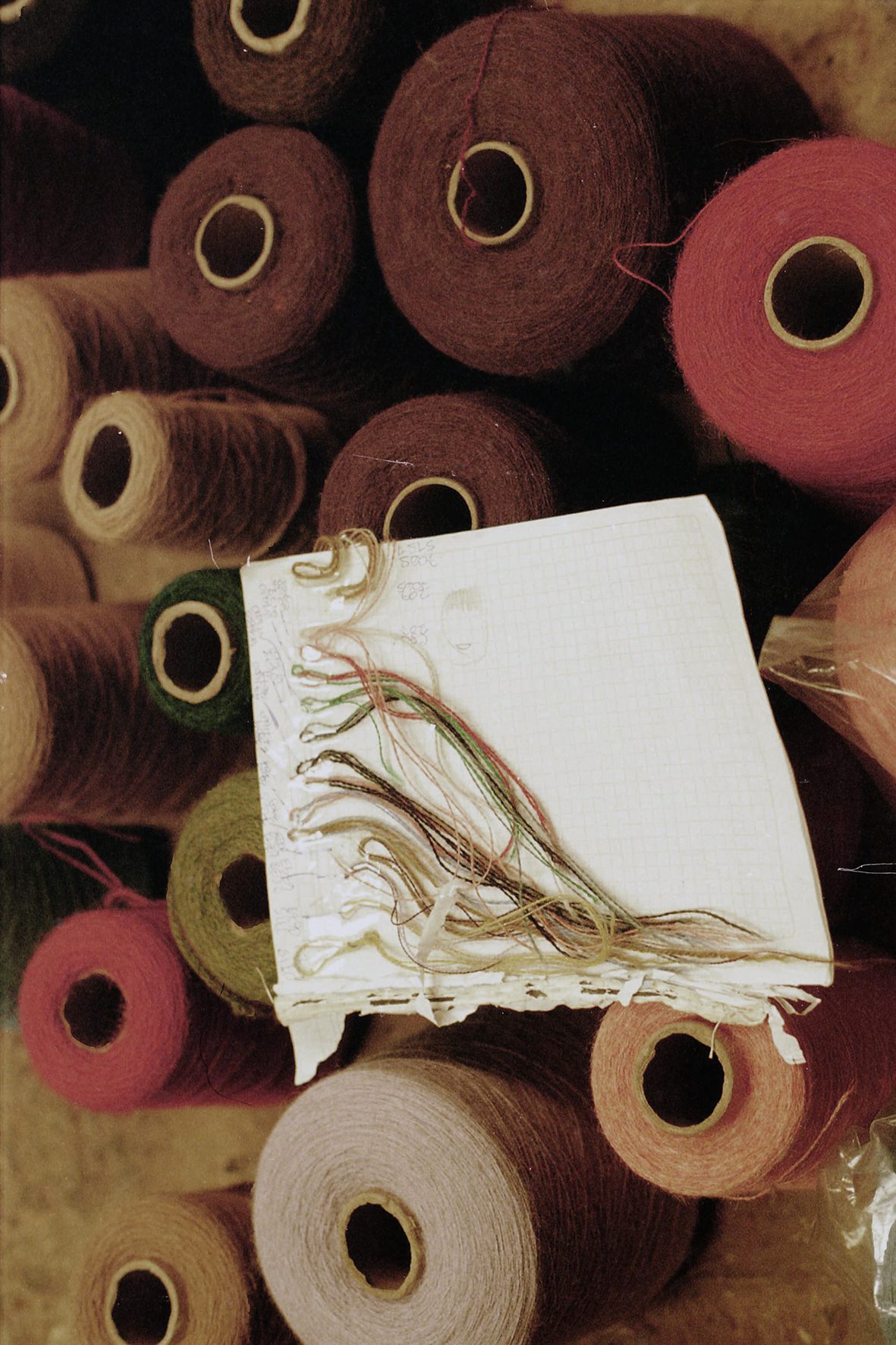
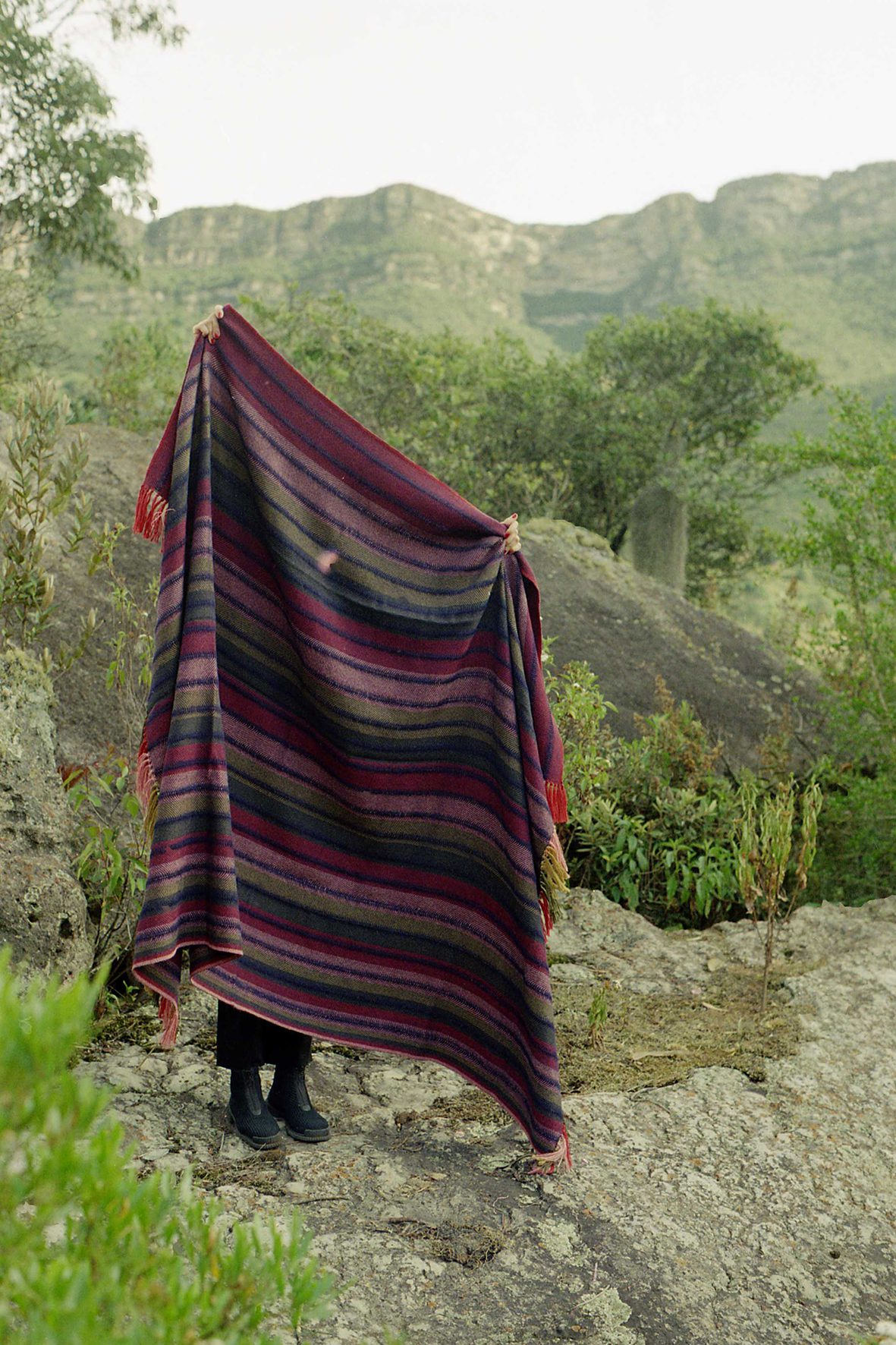
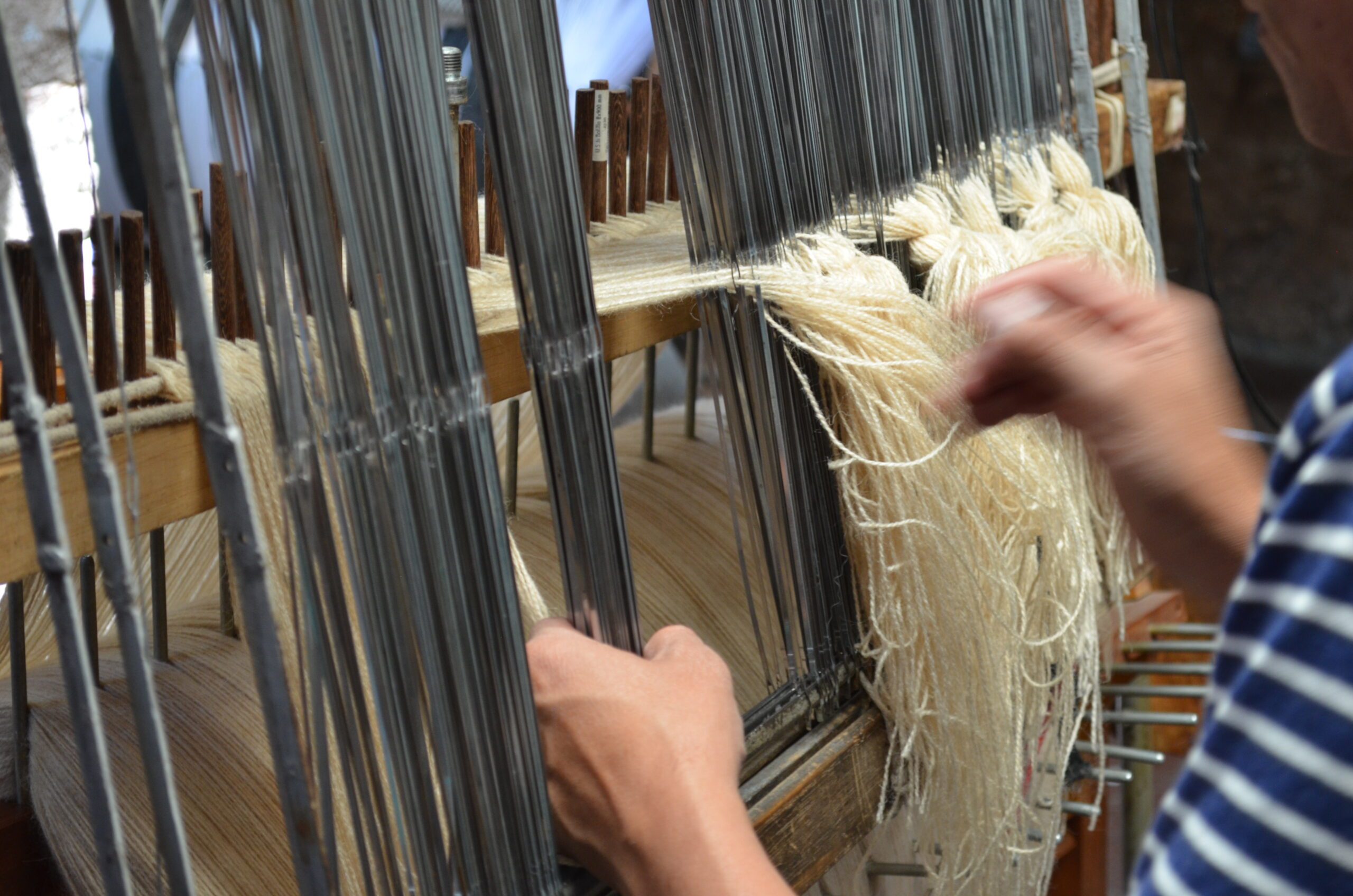
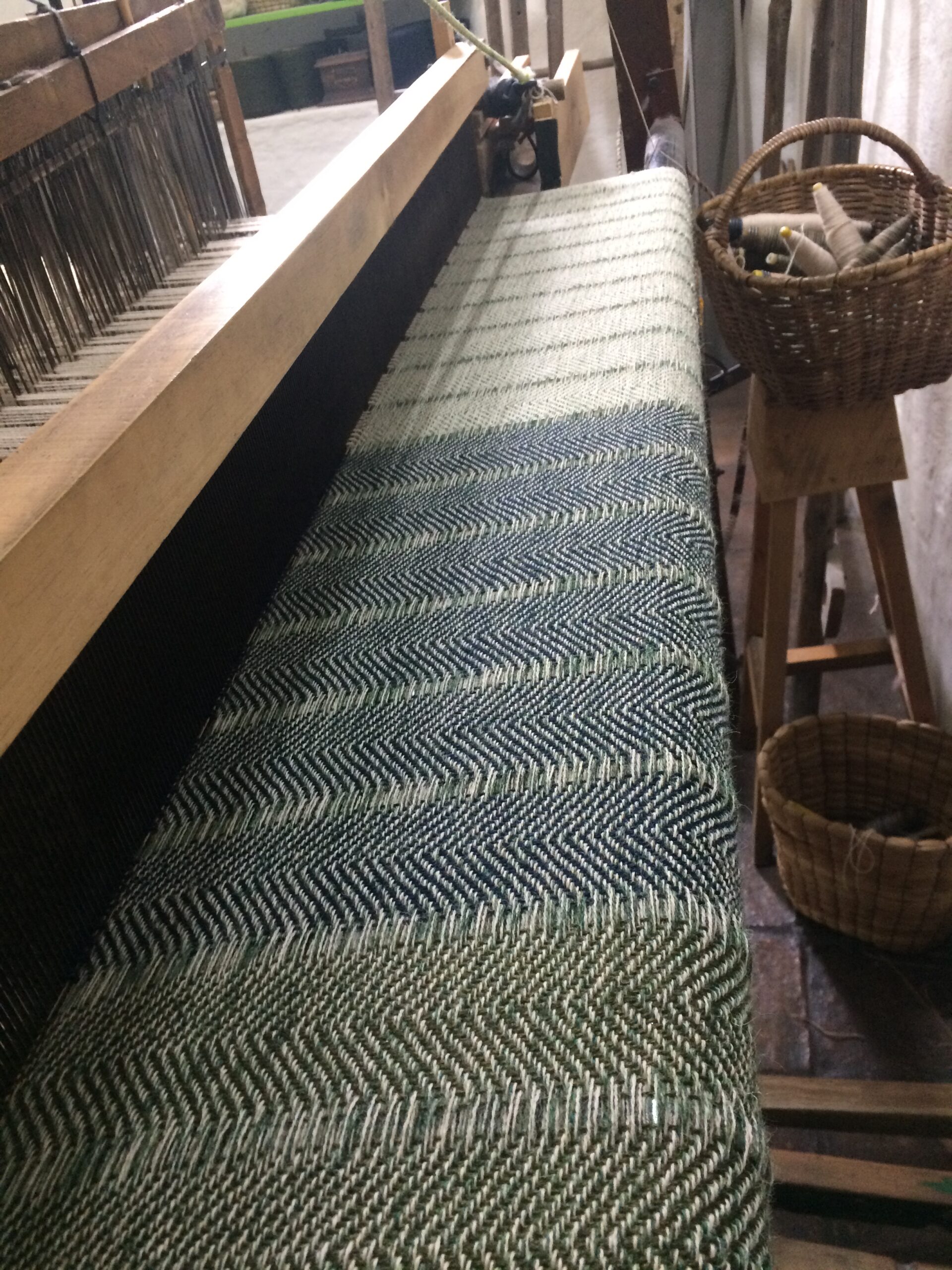
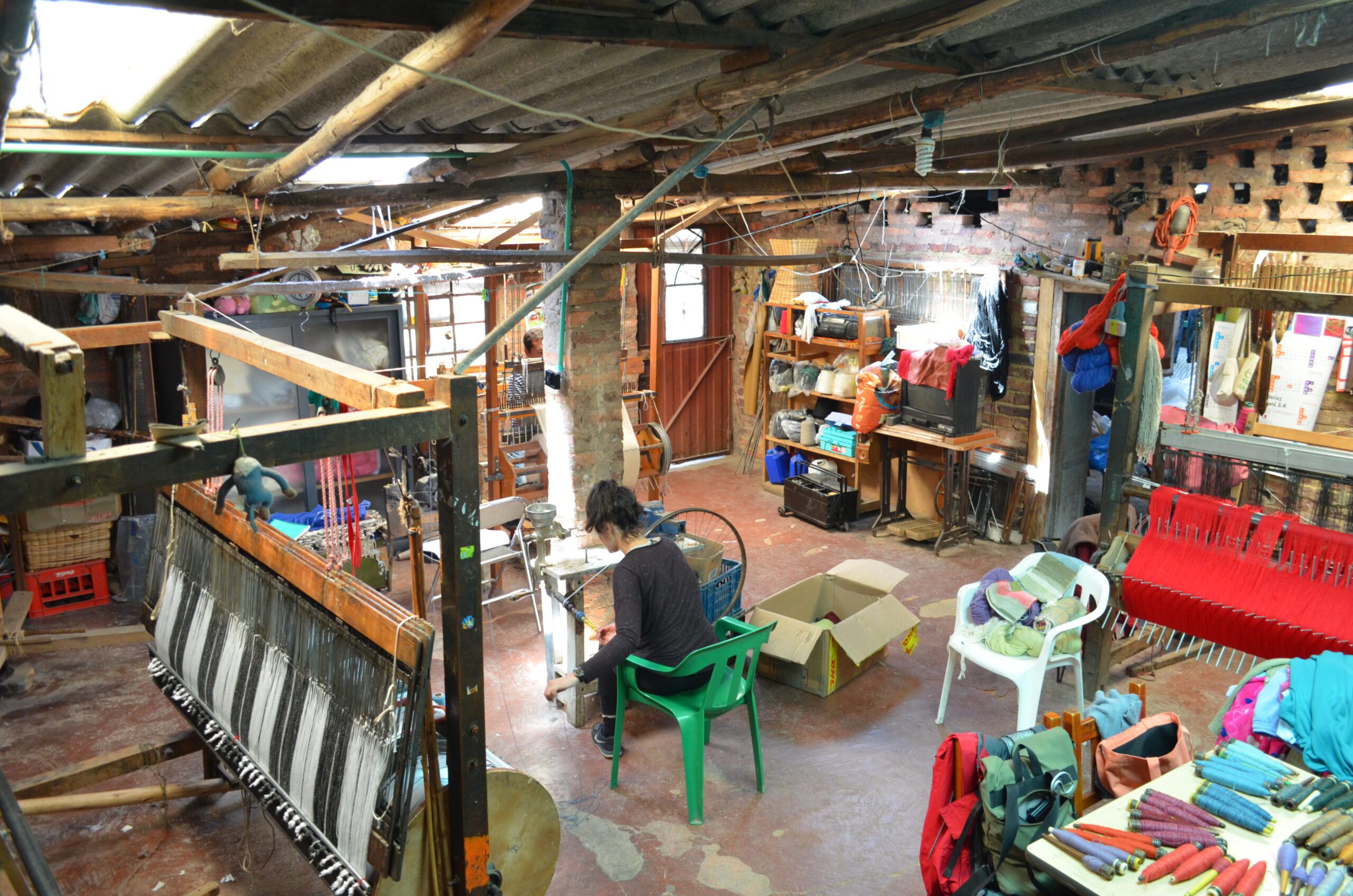




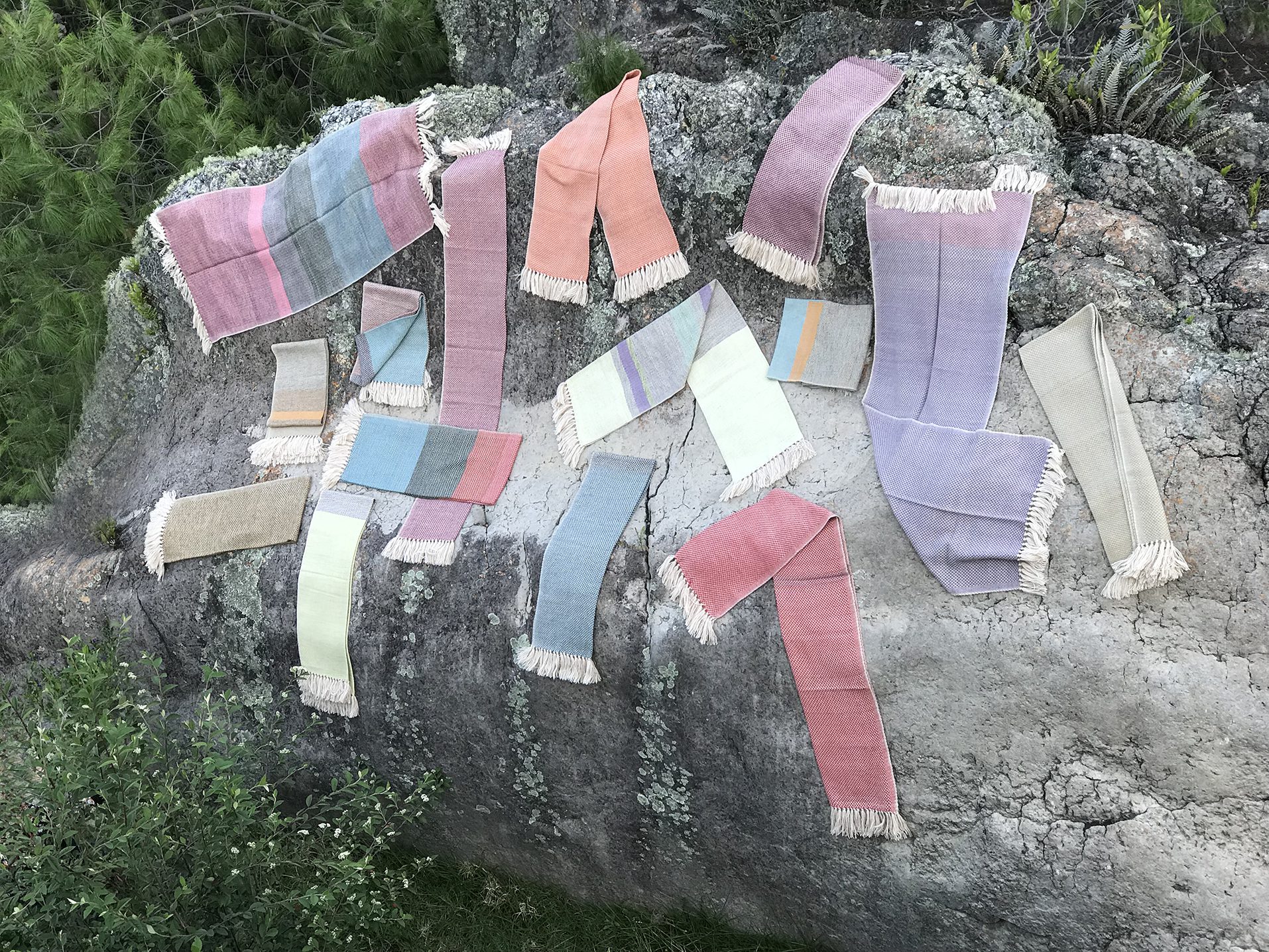


Evelyn invites the user to engage in a close relationship with her objects. Although she is intrigued by utensils of which the shape is close to its functionality, her designs reveal a certain tension between form and function.
Ana María Gómez is a textile designer. In recent years she has been experimenting in different ways with textile based on an awareness of different cultural and social worlds. The core of amgs is to experiment with the visual, tactile and spatial dimension of textiles.
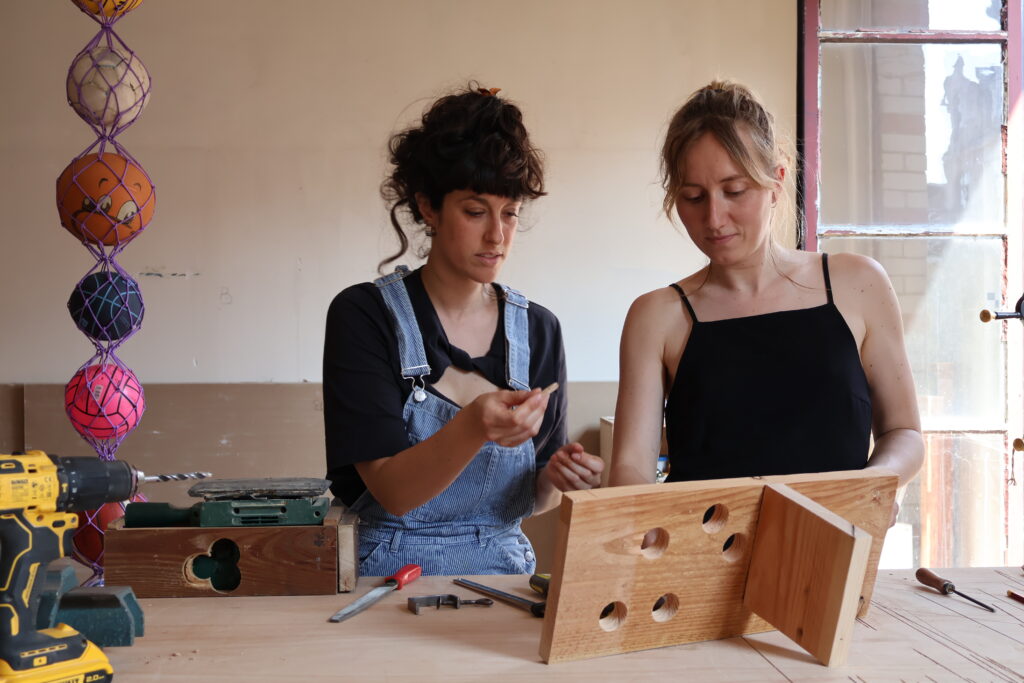
Basket ball basket
#33 🪡
Basket Club is a contest project that waves baskets based on an emoji.
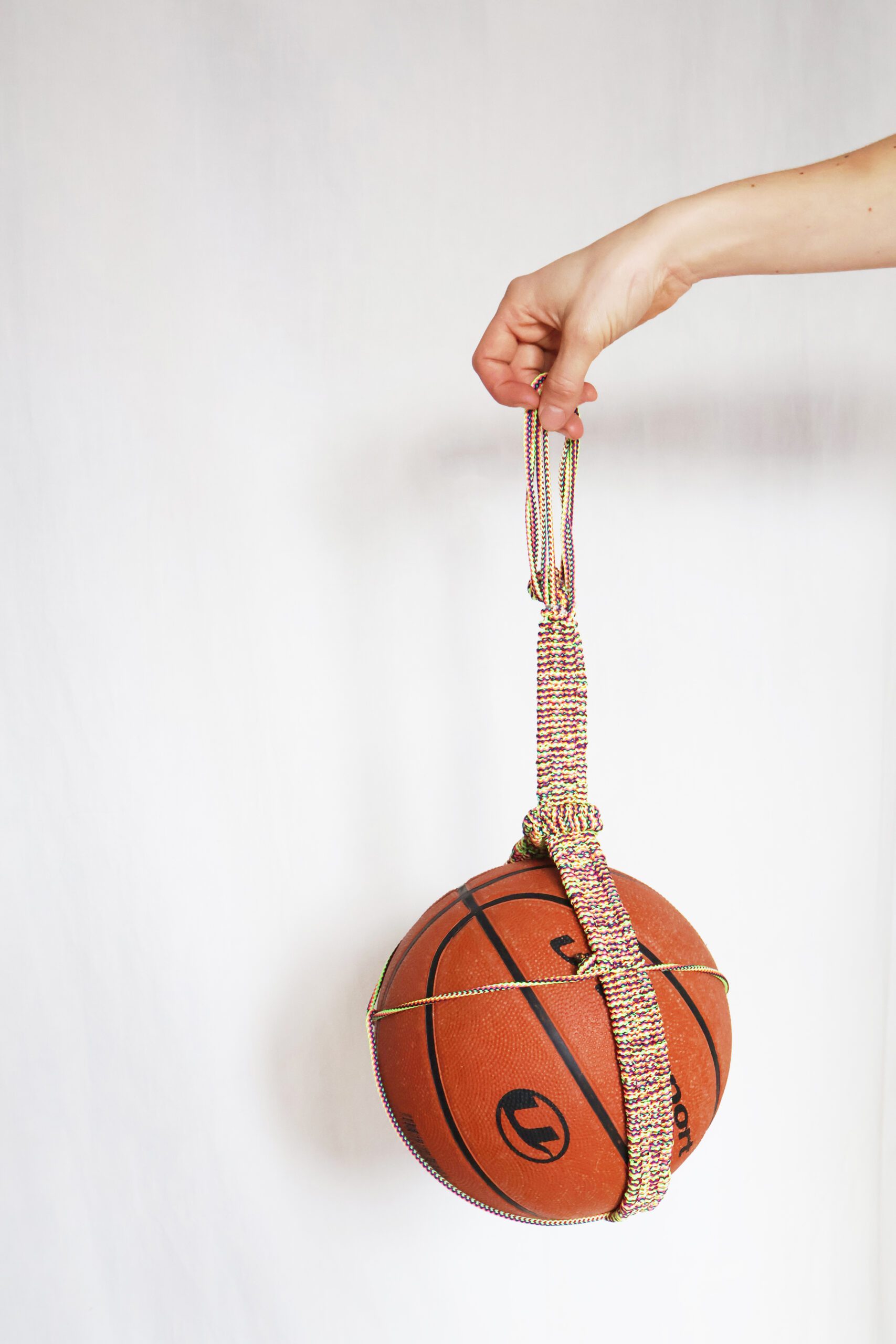

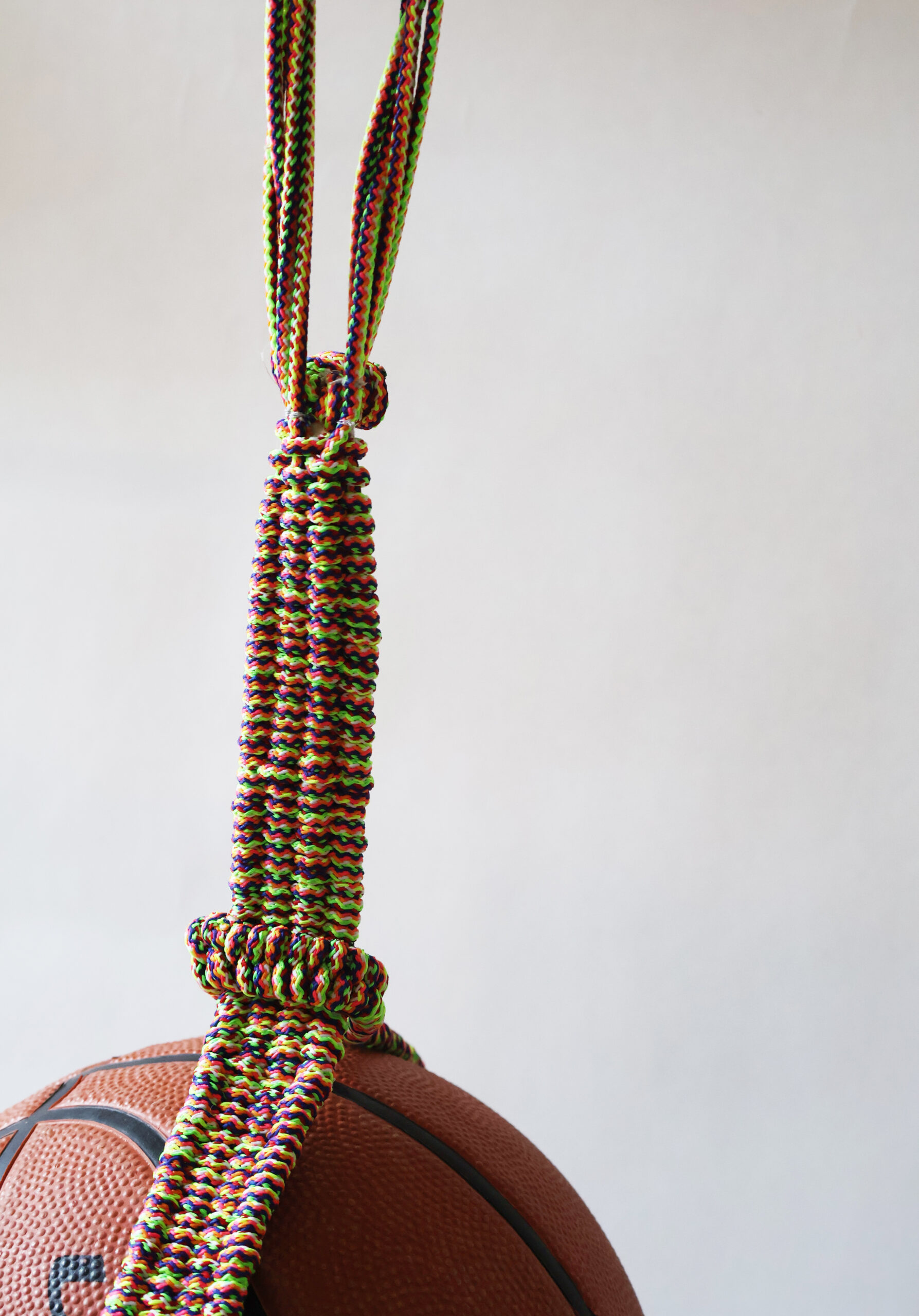

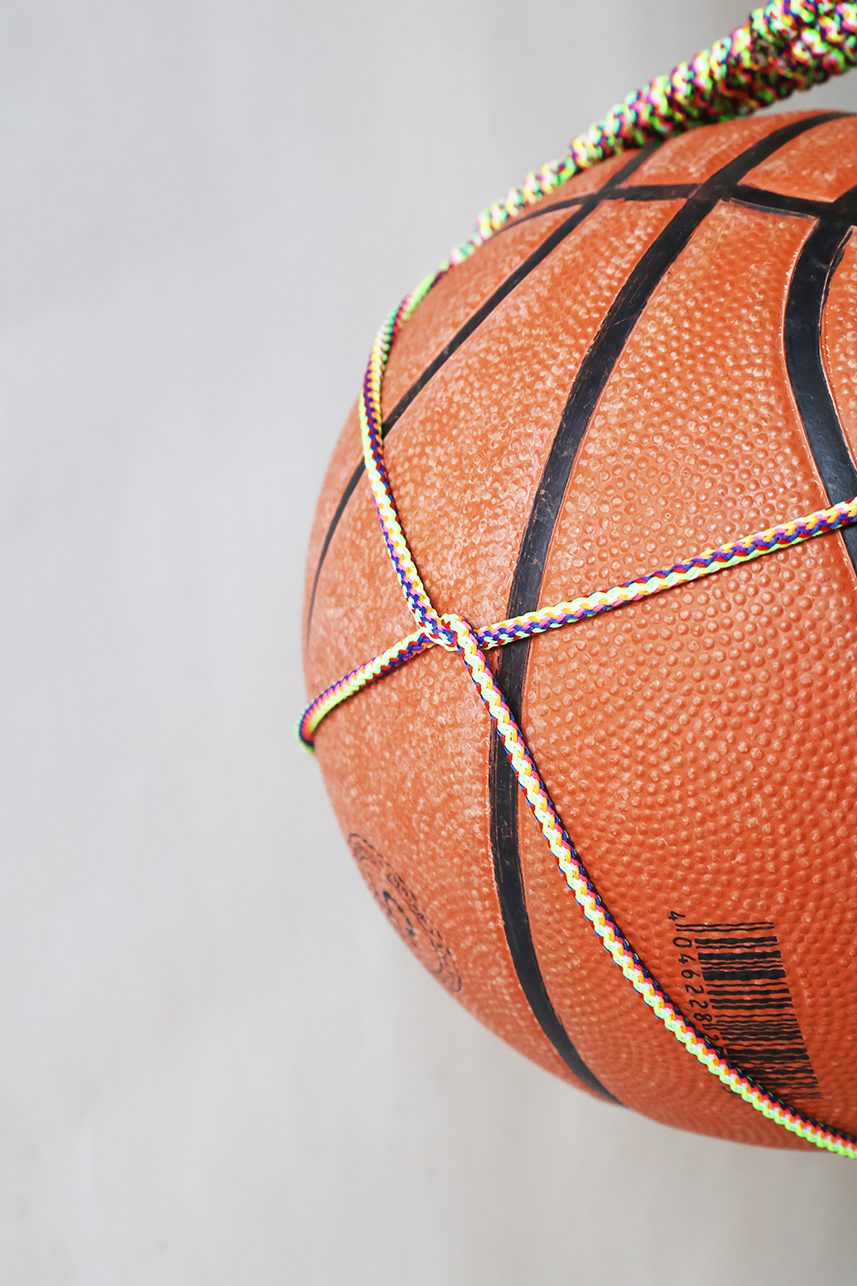
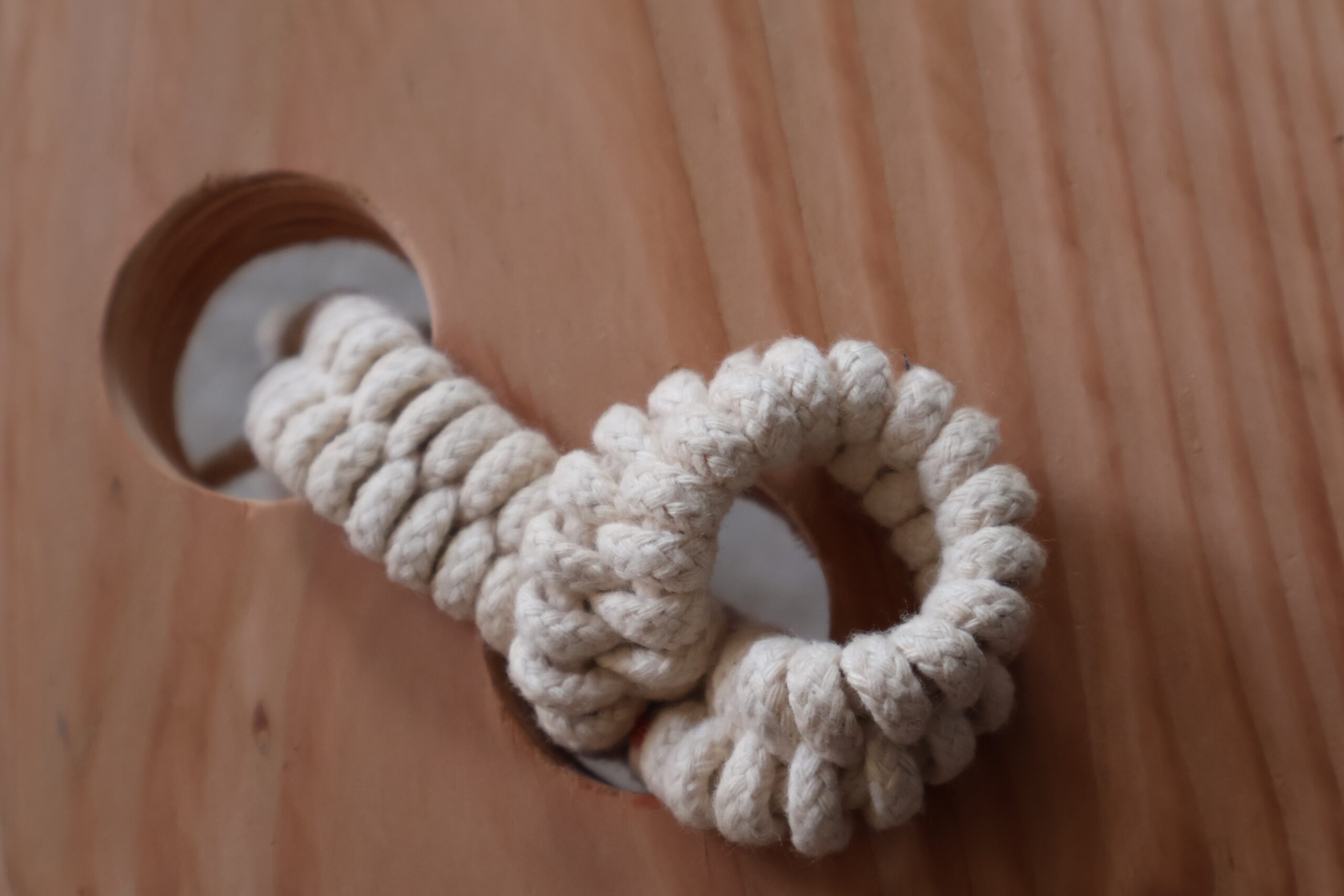



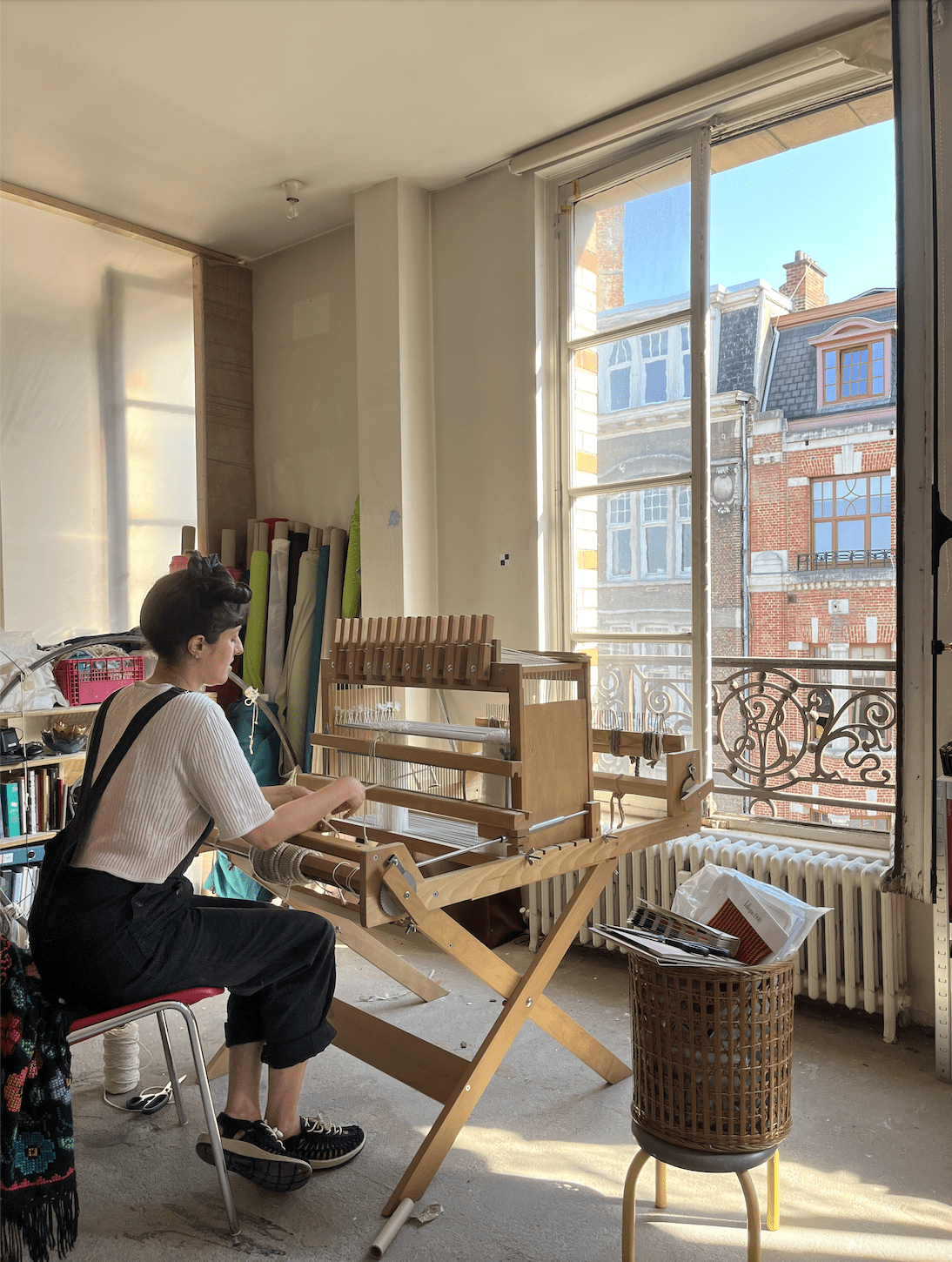
Duos en Résonances is a project that for six months, artisans and designers collaborate intermittently, respecting each other’s professional commitments, to develop a shared project or explore a common line of thought. This flexible approach allows for a balance between individual work and collective creativity, fostering a dynamic exchange of ideas and skills. The collaboration is rooted in mutual respect and a shared commitment to innovation, ensuring that both parties can contribute their expertise while exploring new possibilities together. This process not only enriches the project but also strengthens the dialogue between craftsmanship and design, creating a space where tradition and innovation can coexist and inspire one another.
Thank you to all the people and spaces that have been part of this project. A special thanks to Véronique Closon from Wallonie Design, Marie Begun from TextileLab in Liège, the Fonds SofinaBoël, La Villa Empain, the Fédération Wallonie-Bruxelles, and the Académie des Beaux-Arts for giving us the opportunity to lead our workshop in the textile design faculty. Your support and collaboration have been essential in bringing this initiative to life, allowing us to explore, create, and share knowledge in an inspiring environment.
Pictures by Alexandra Colmenares Cossio
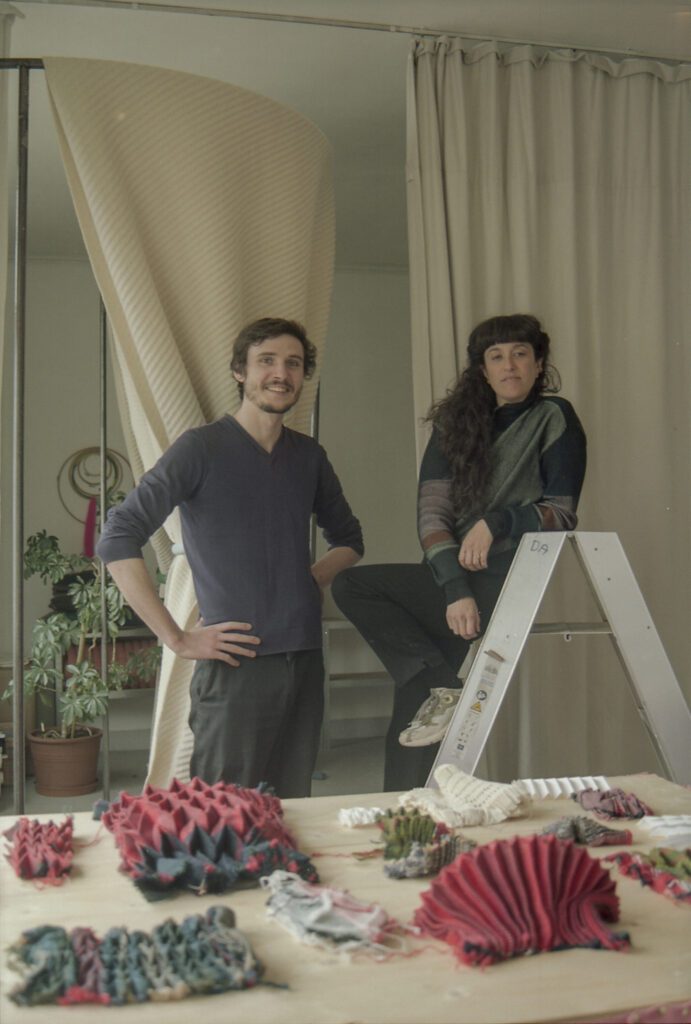

Pleating: A Craft Technique Reimagined
Pleating is a textile finishing technique that involves folding material to give it a memory of shape. This practice dates back to ancient Egypt and saw significant development during the 18th century with the discovery of new manufacturing techniques. Today, however, this craft is in decline, with only a few artisan houses remaining, most of which work primarily for haute couture. Yet the advantages of textile pleating are numerous: shape memory, material optimisation, deployability, and the unique aesthetics it brings—adding pattern, volume, and texture to fabrics.
The methods for creating pleats remain largely manual, often involving pleating. They began questioning how new methods could be developed to create textile pleating, taking advantage of the democratisation of digital tools. Rather than pitting craftsmanship against industry, they sought to explore, on a local scale, the possibility of intelligently combining hand and machine.
Their collaboration reflects a desire to breathe new life into this ancient technique, blending traditional craftsmanship with modern technology to create innovative and sustainable textile solutions. By doing so, they aim to preserve the artistry of pleating while pushing its boundaries into uncharted creative territories.
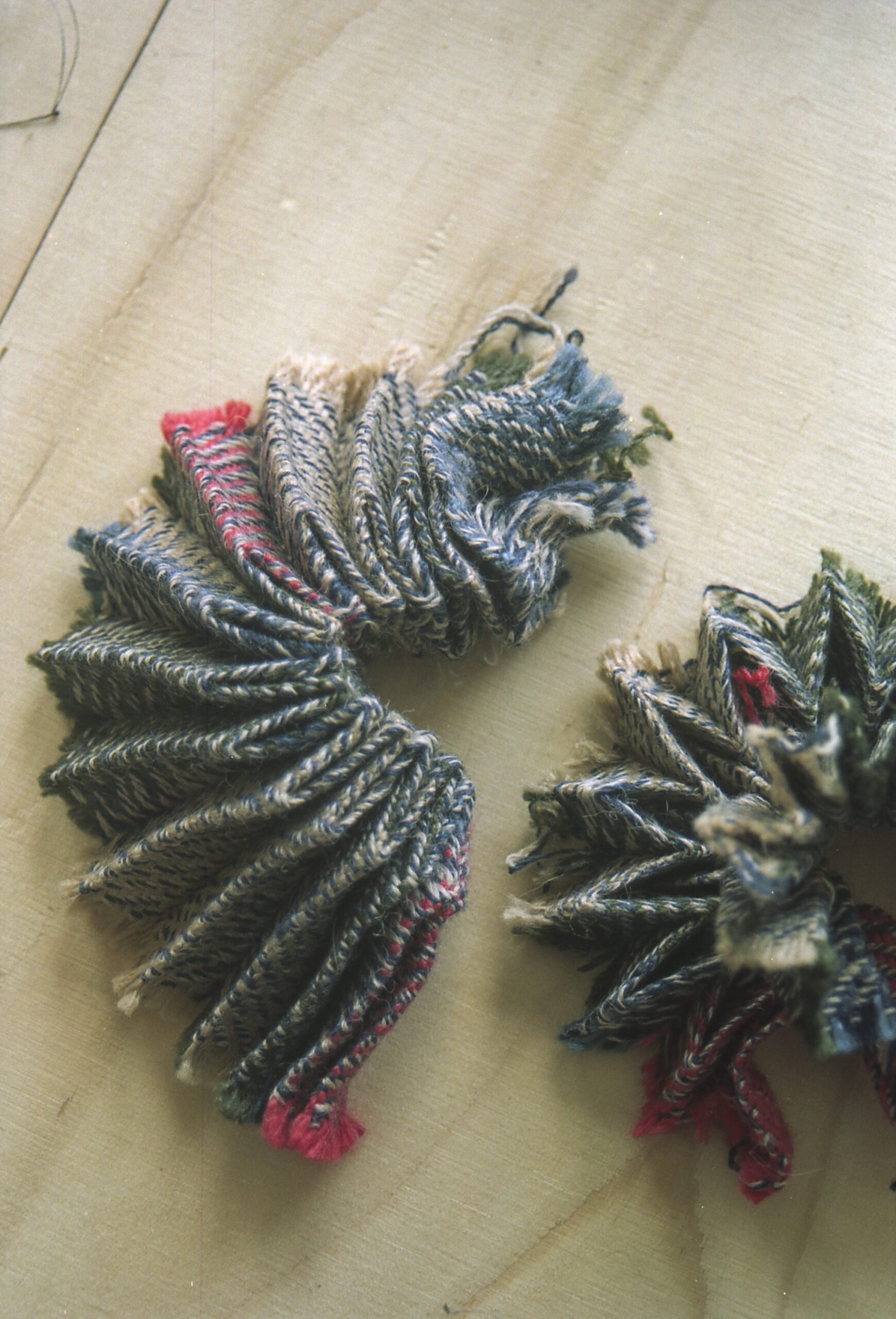
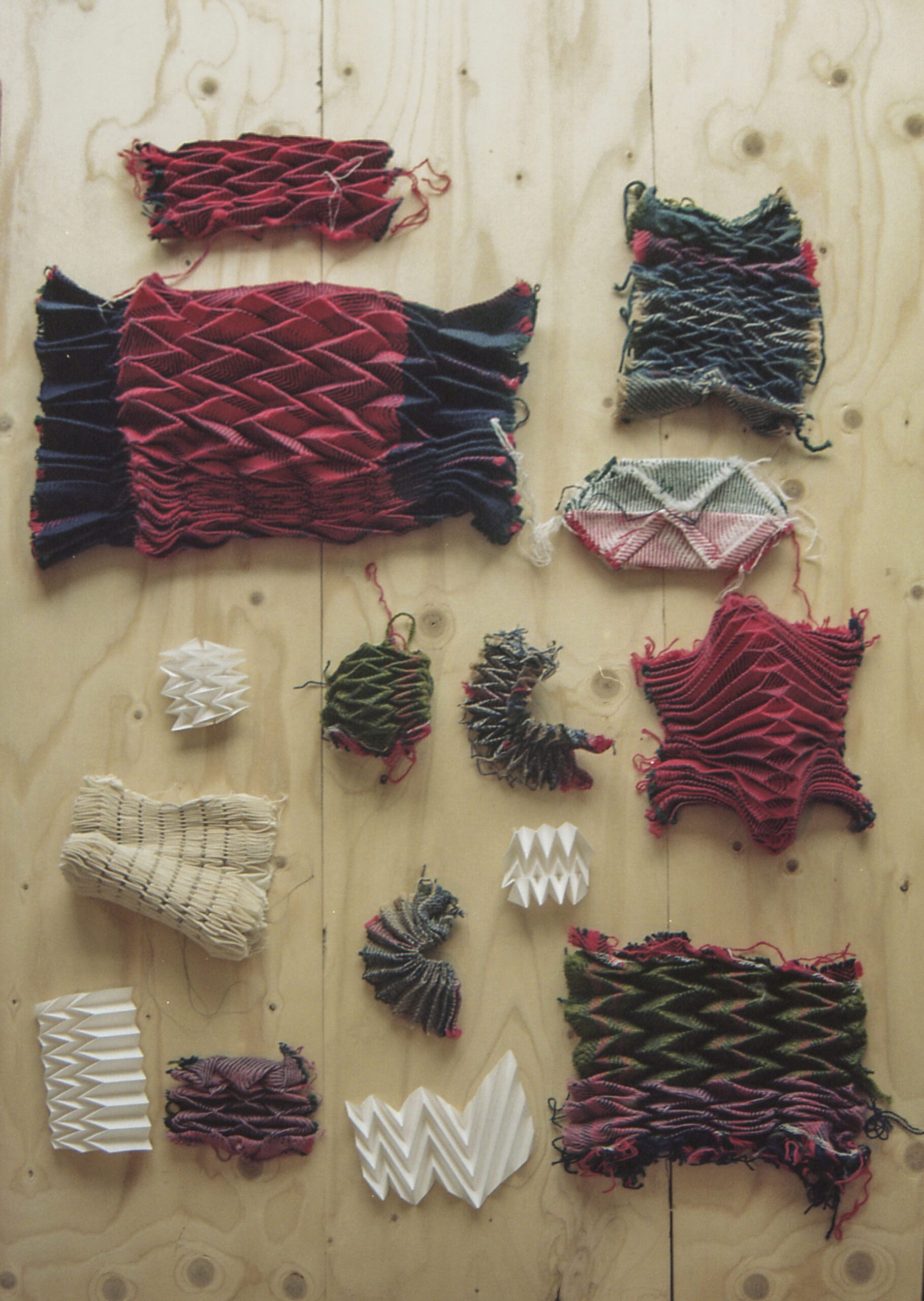
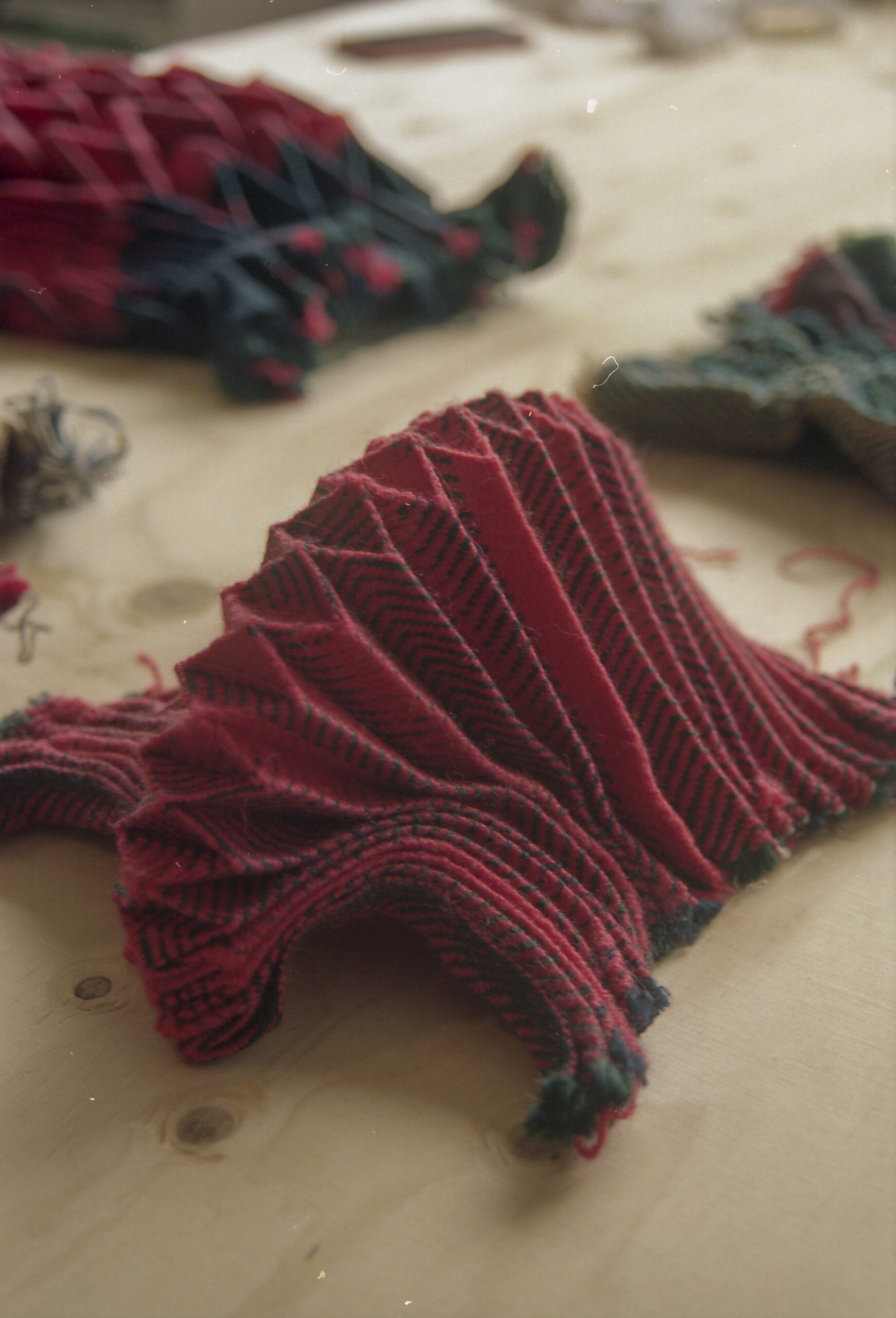
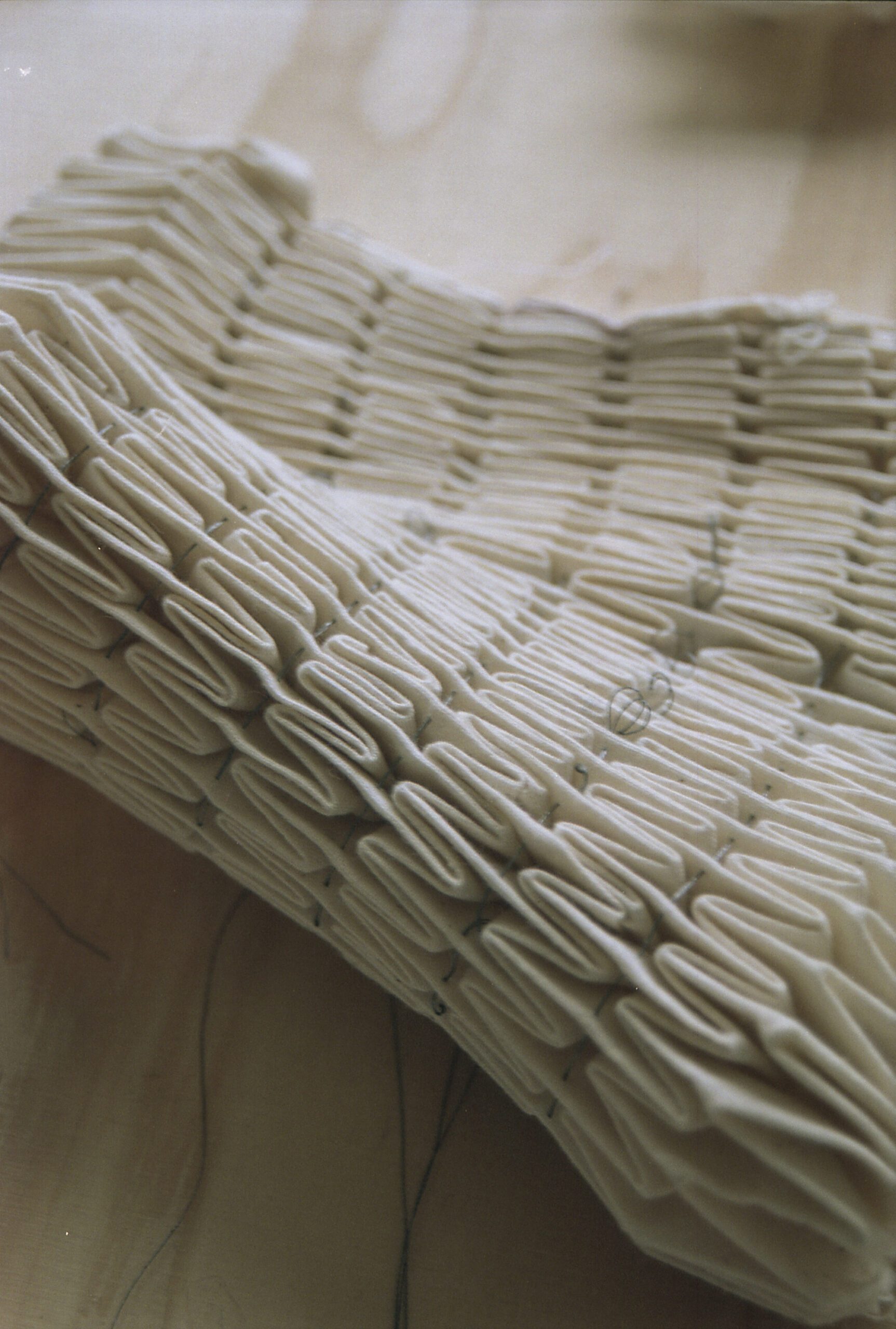
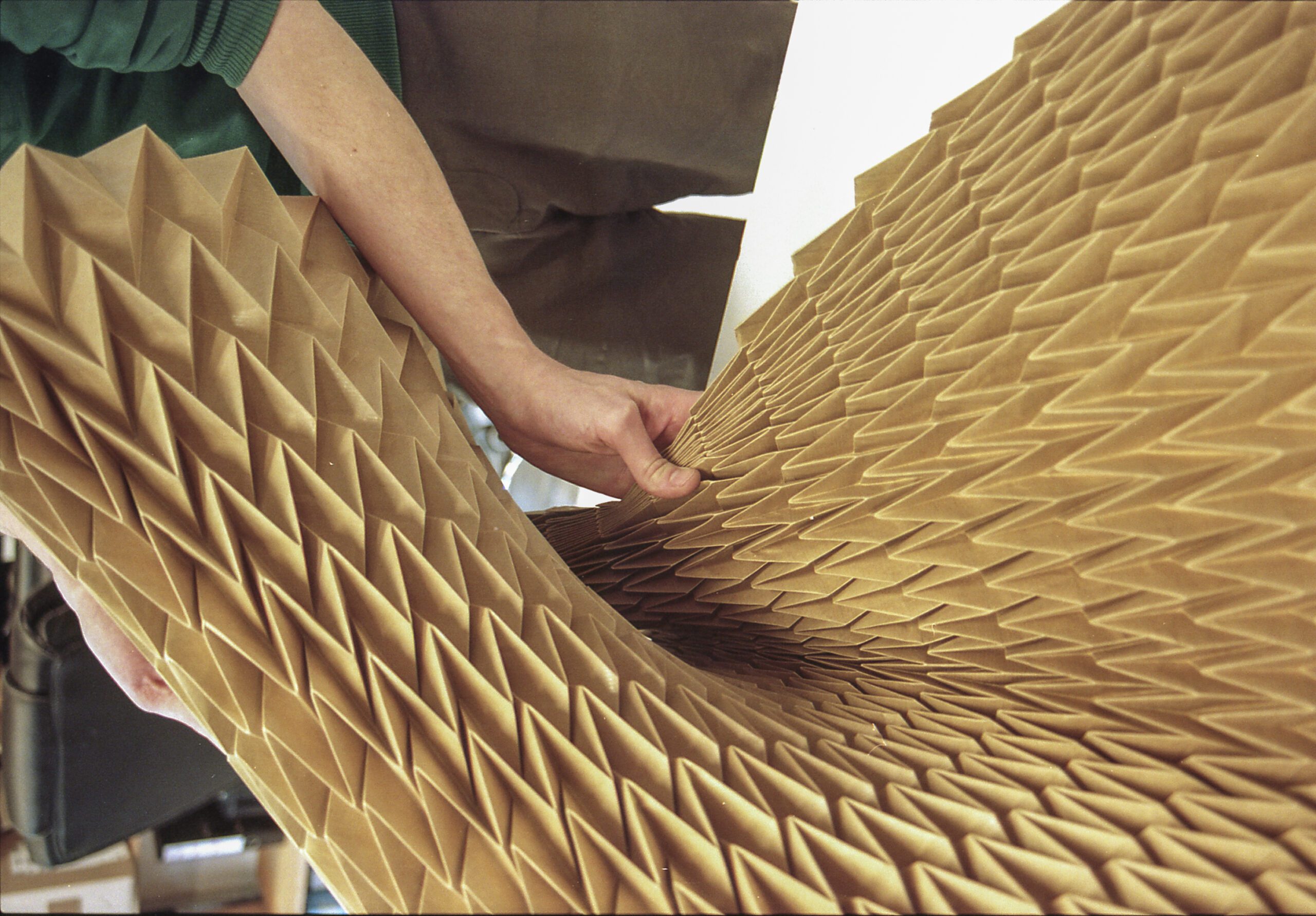
This project was showcased in an exhibition at the Fondation Boghossian
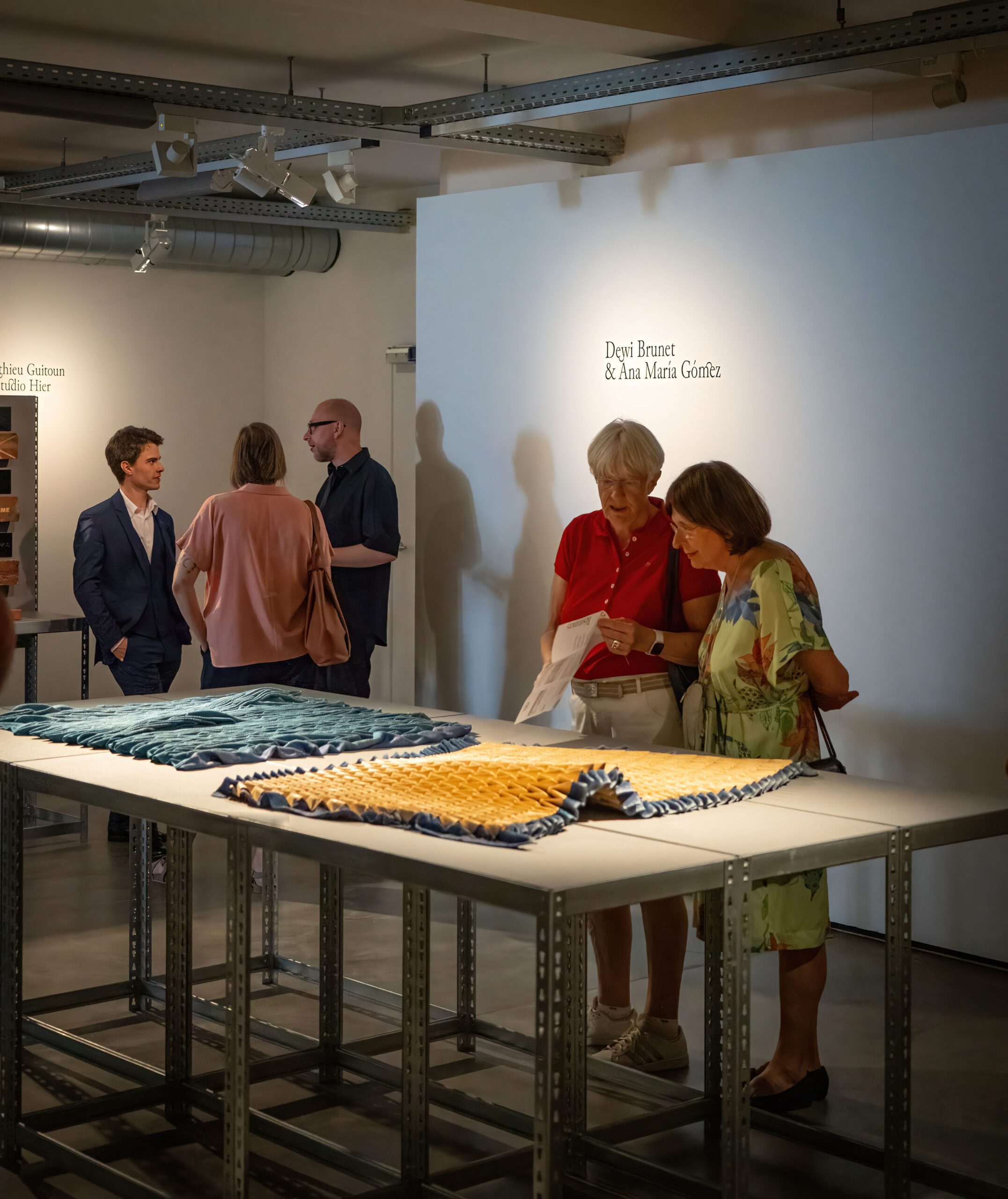
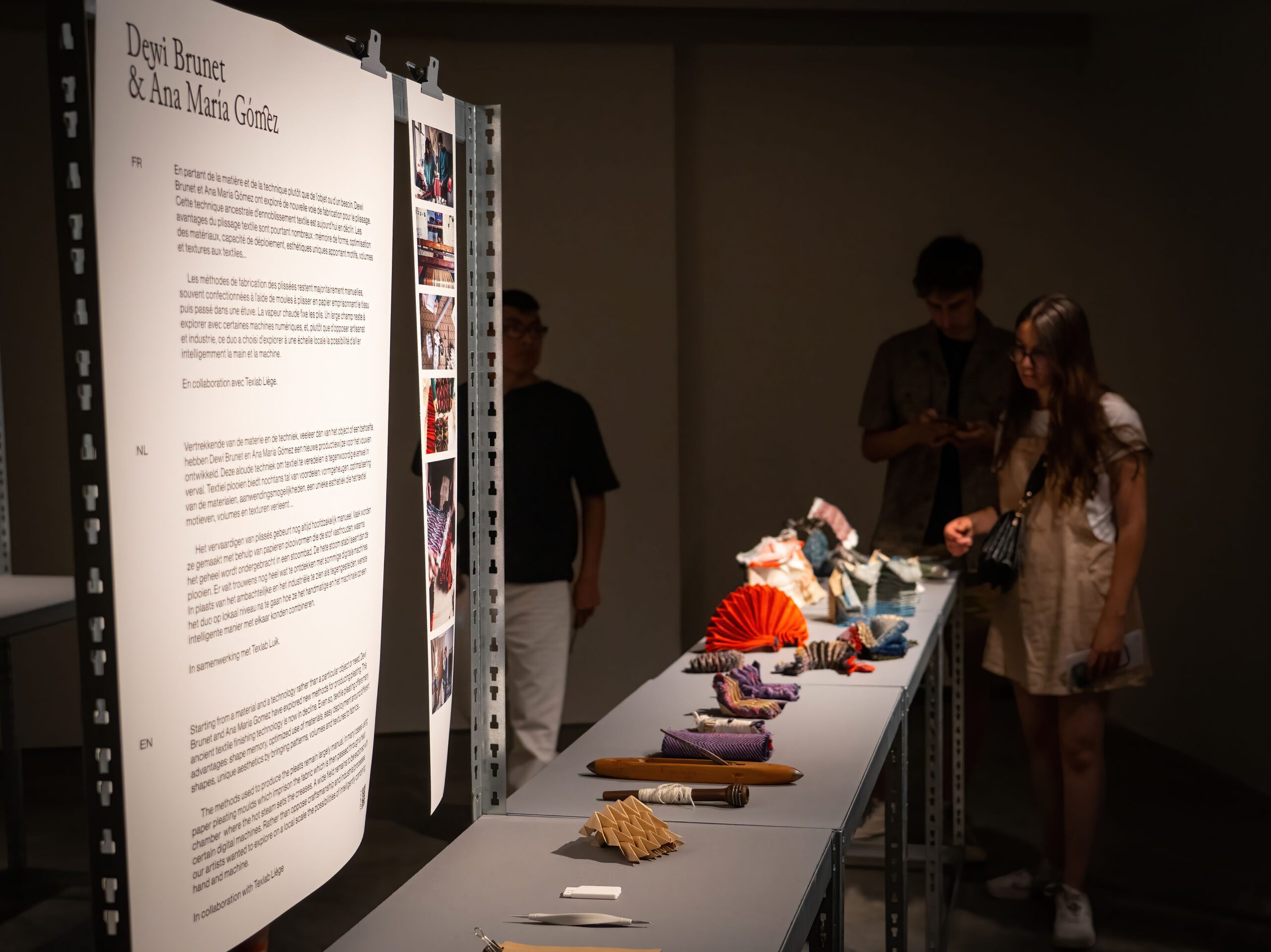
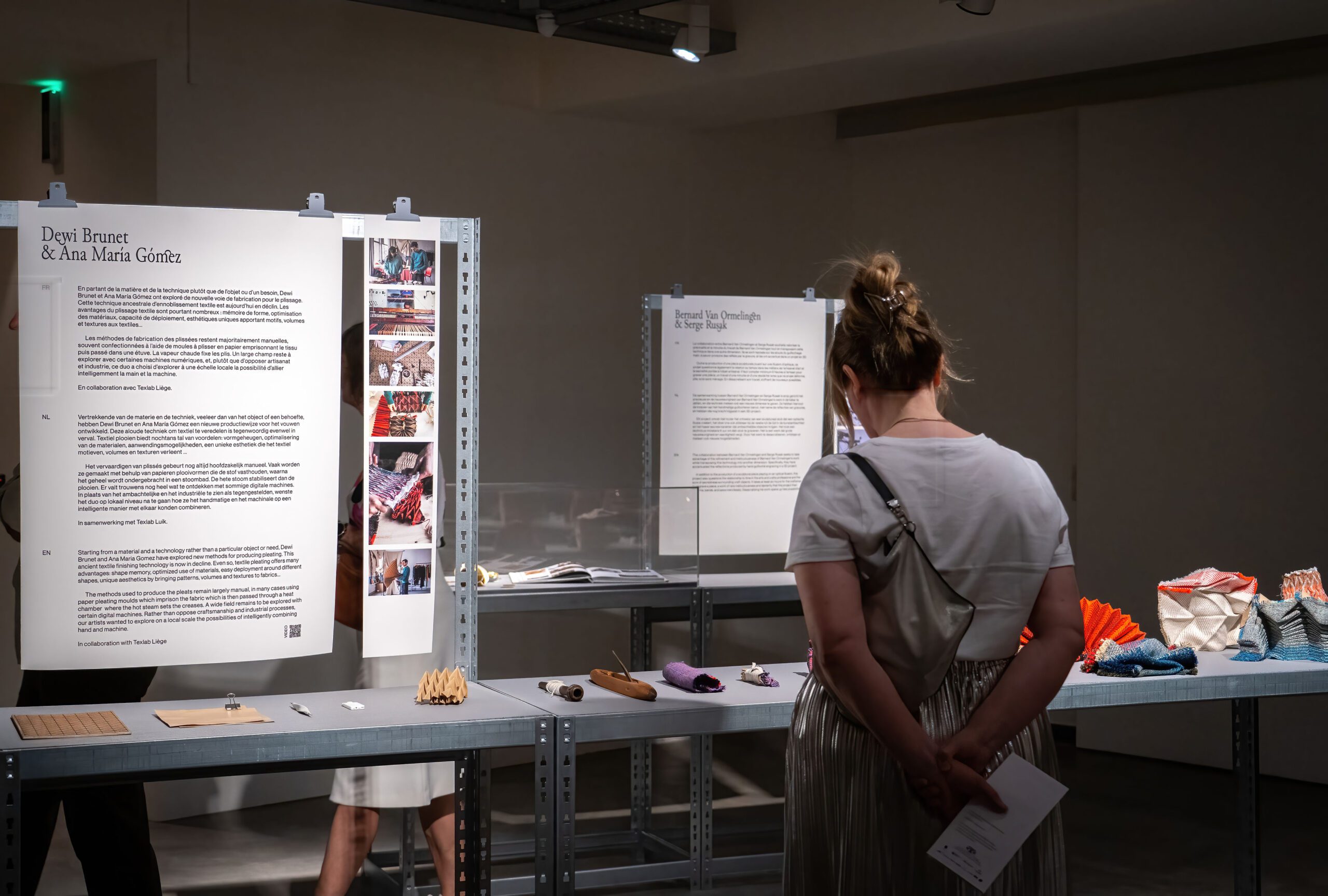

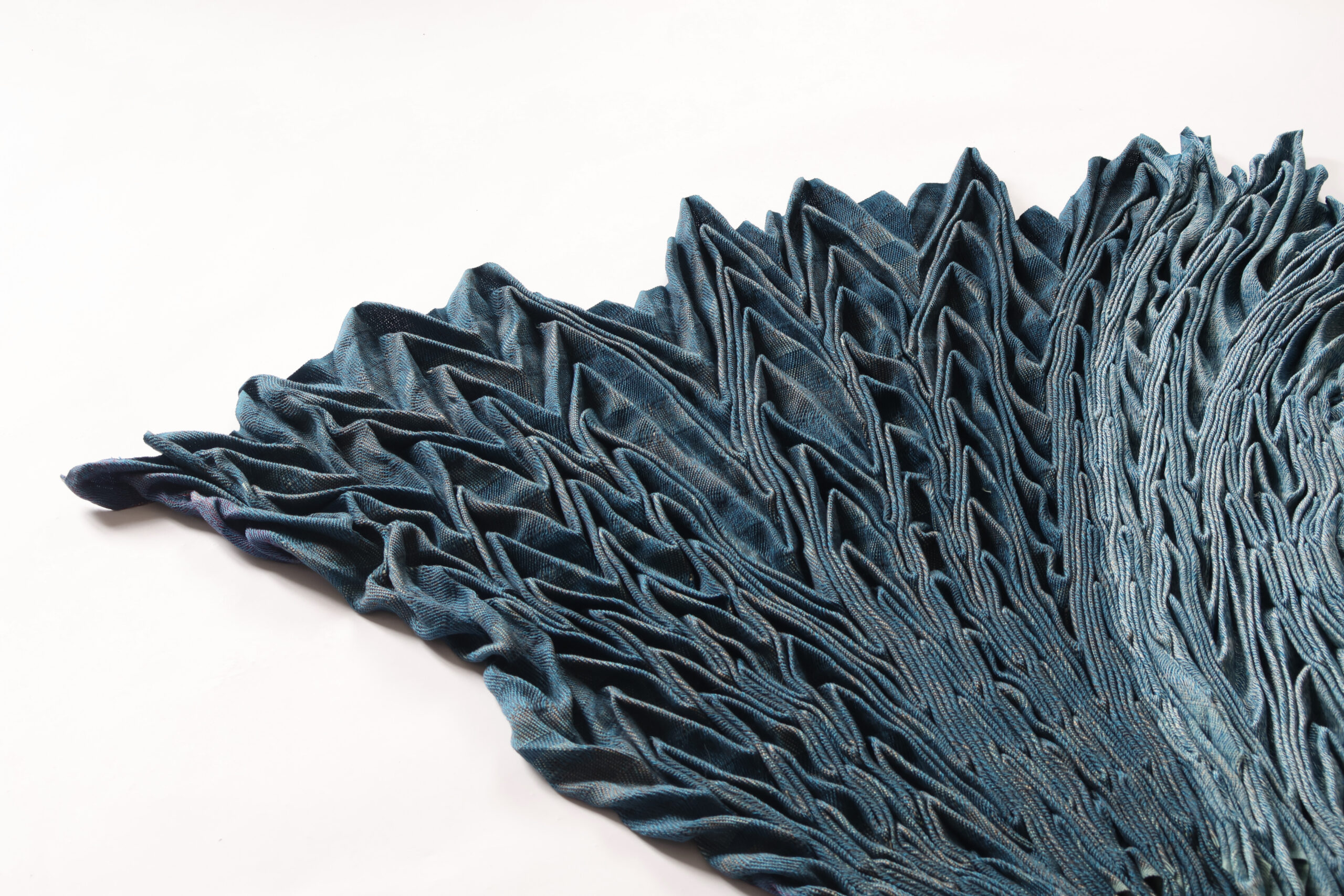
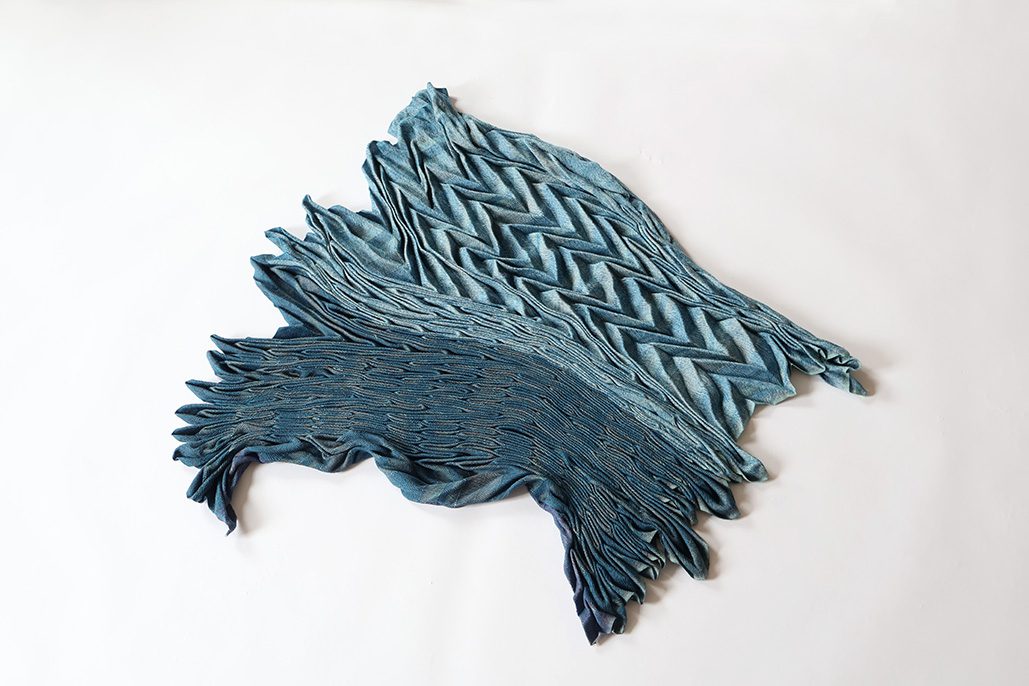

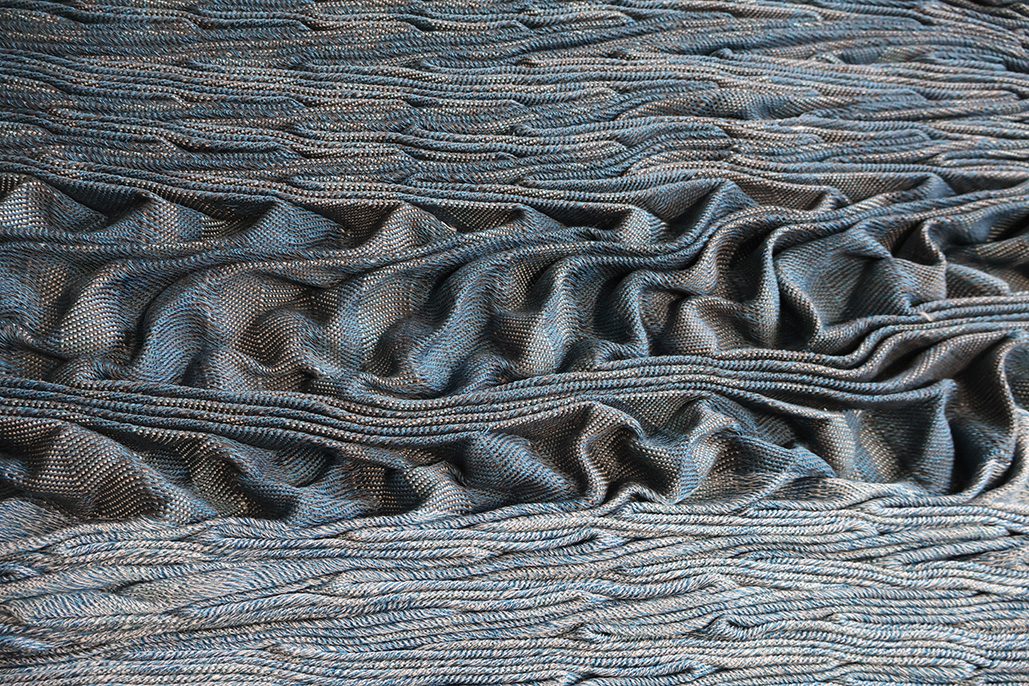
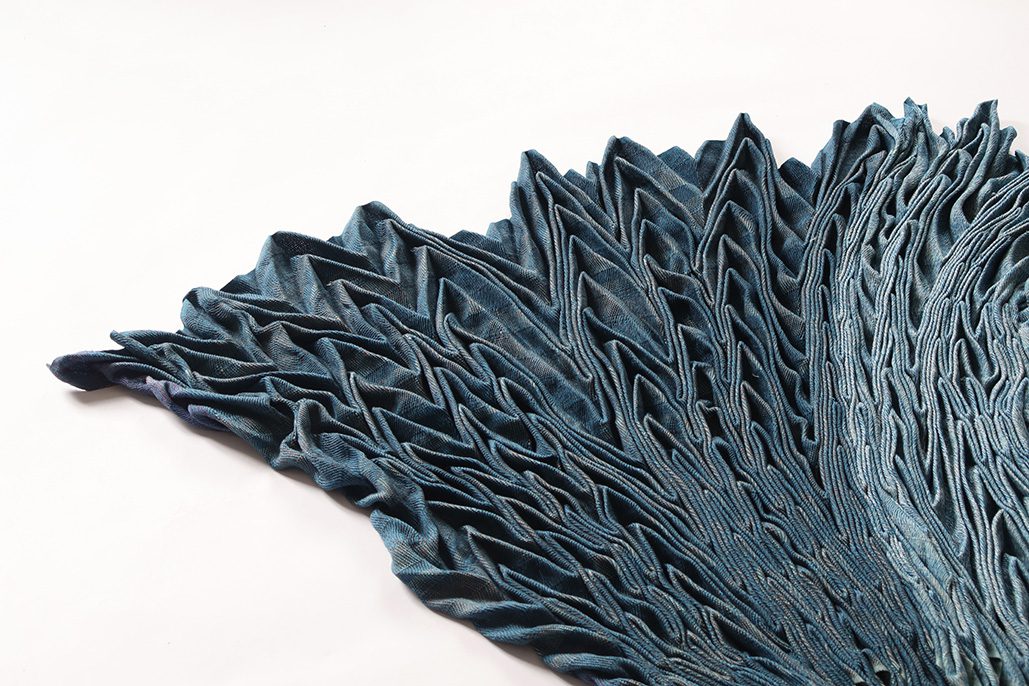
Workshop Centered on Folding / Textile Design at ARBA-ESA
Exploration of folding/pleating through the lens of color, texture, and volume
We had the opportunity to lead a week-long workshop within the textile design department of ARBA-ESA. We shared our research on folding, volume, color, and texture with the students, yielding positive and intriguing results. By integrating exercises inspired by artists and scientists such as Biruta Kresling—known for her compressed tubular folding—and Josef Albers, who experimented freely with newspapers, the students gained a fresh perspective on materiality and three-dimensional form.
In this initial phase of the project, we focused on researching diverse textile techniques for creating folds.
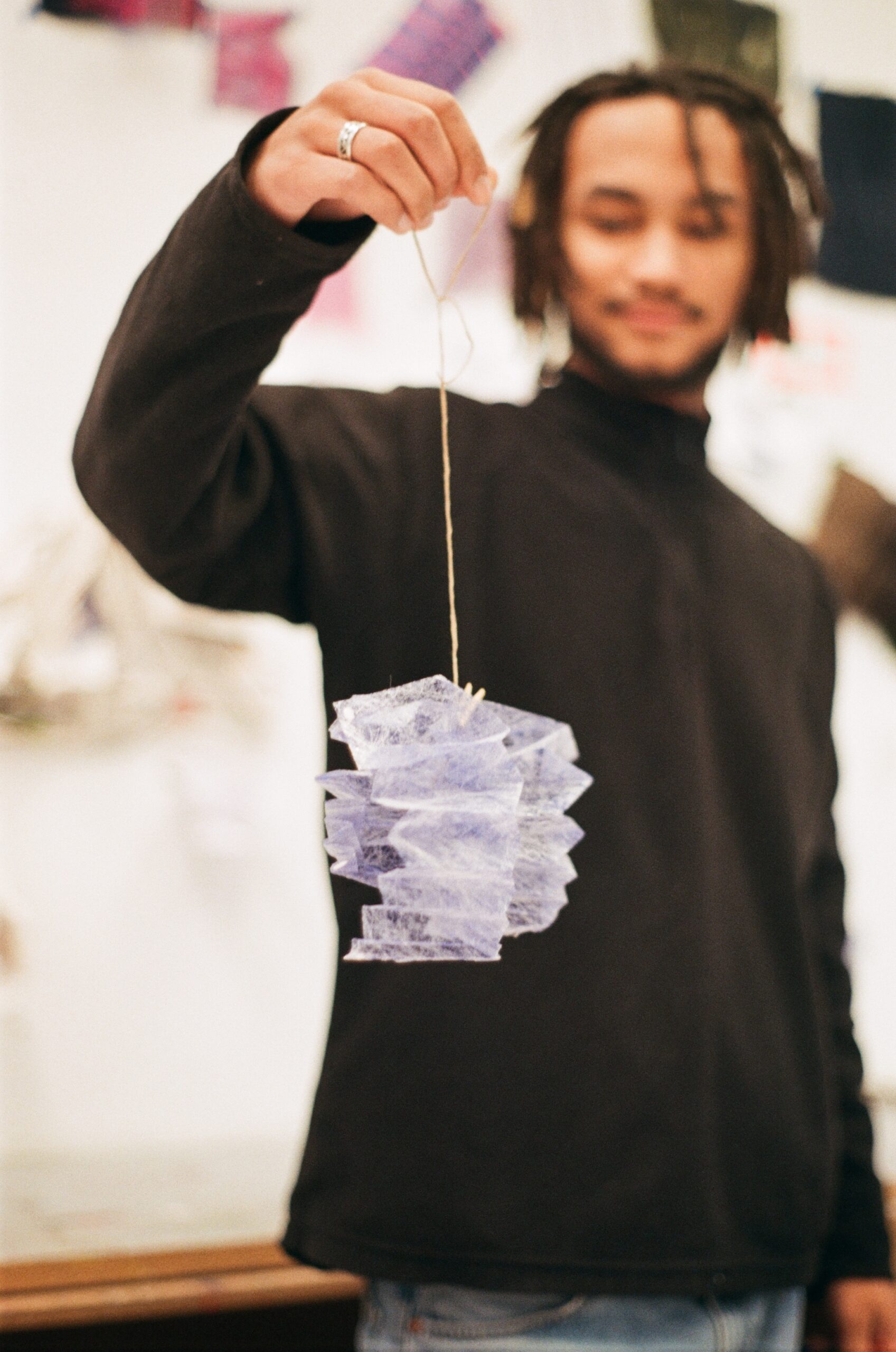
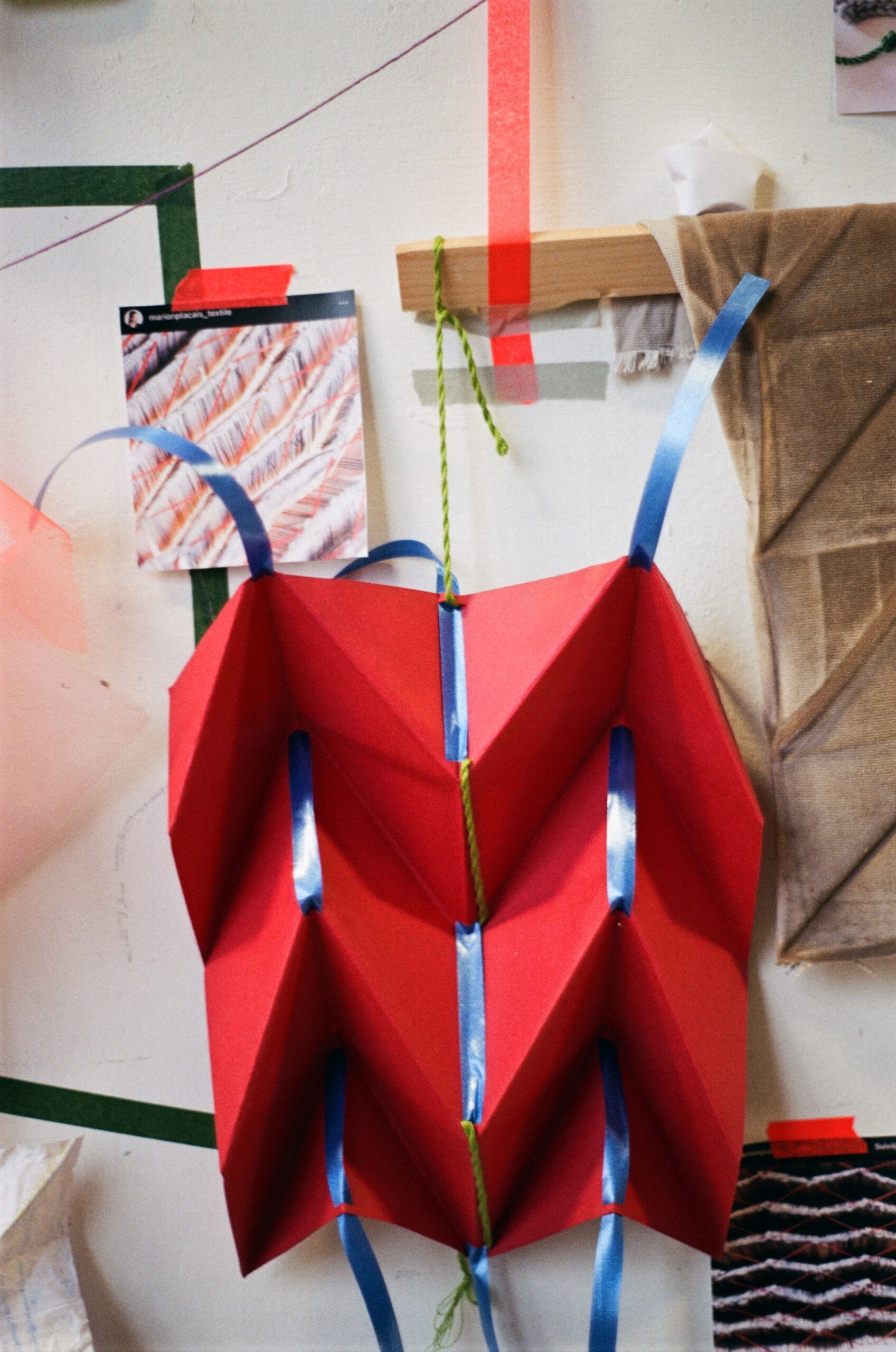
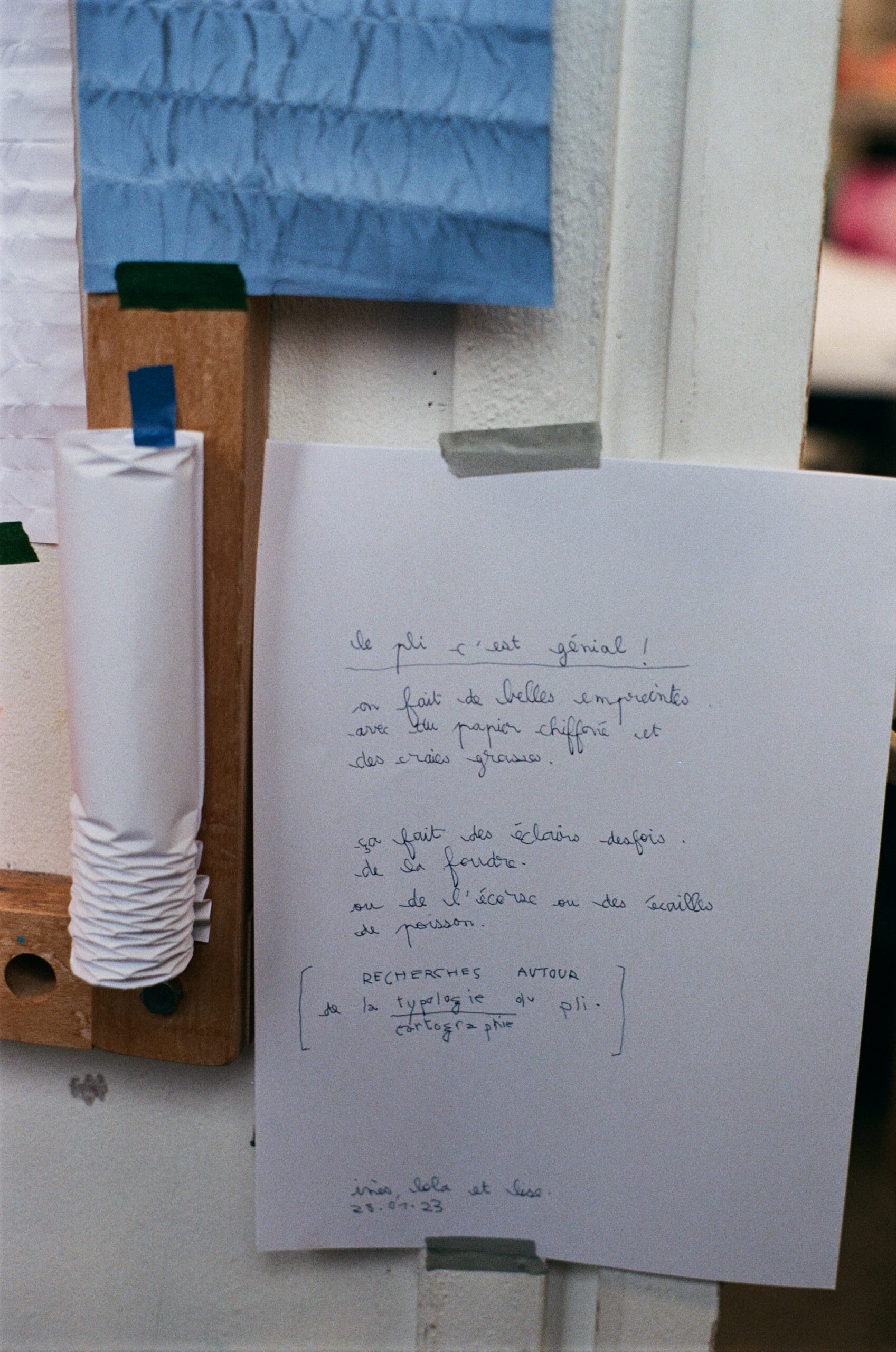

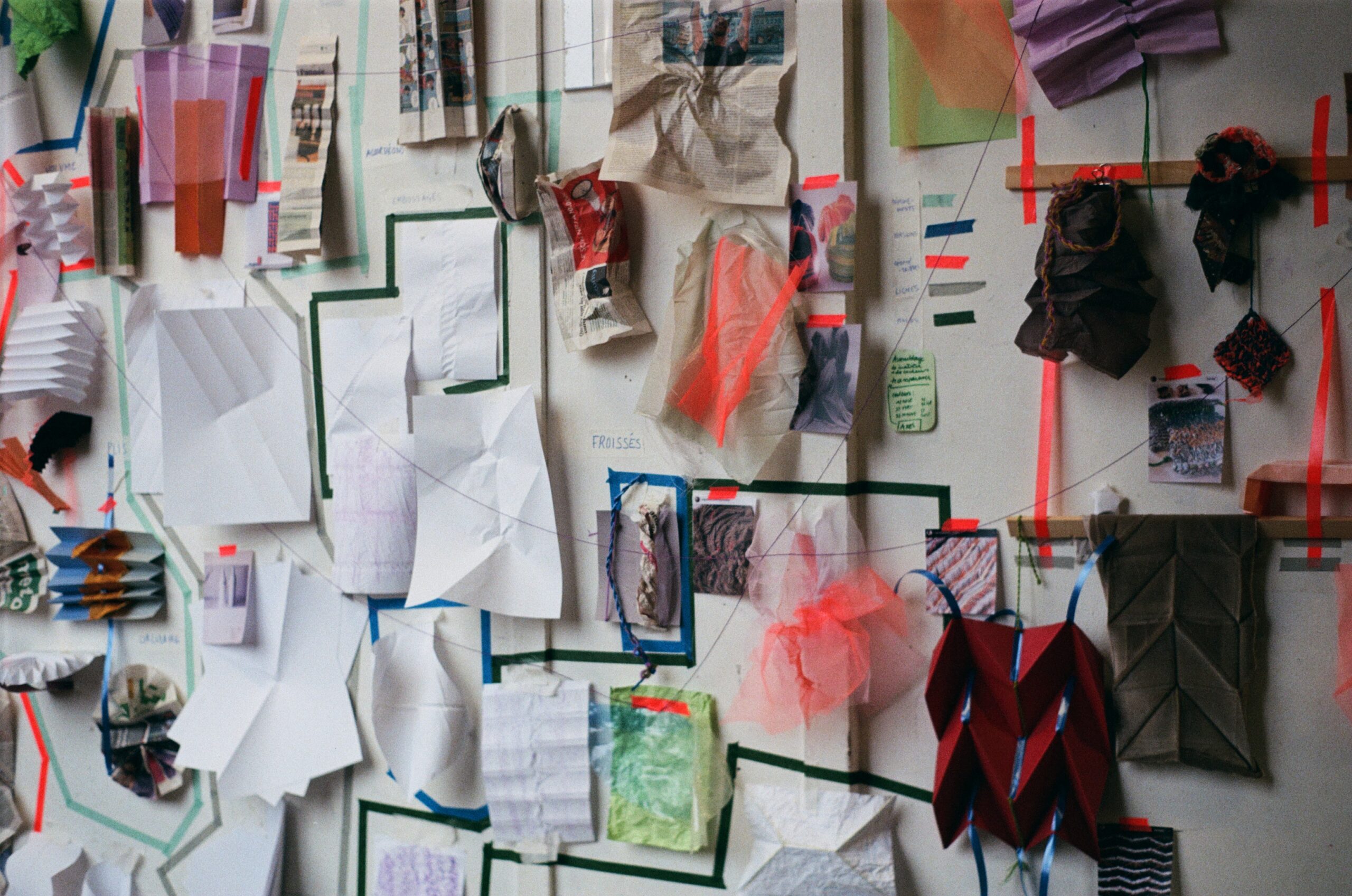


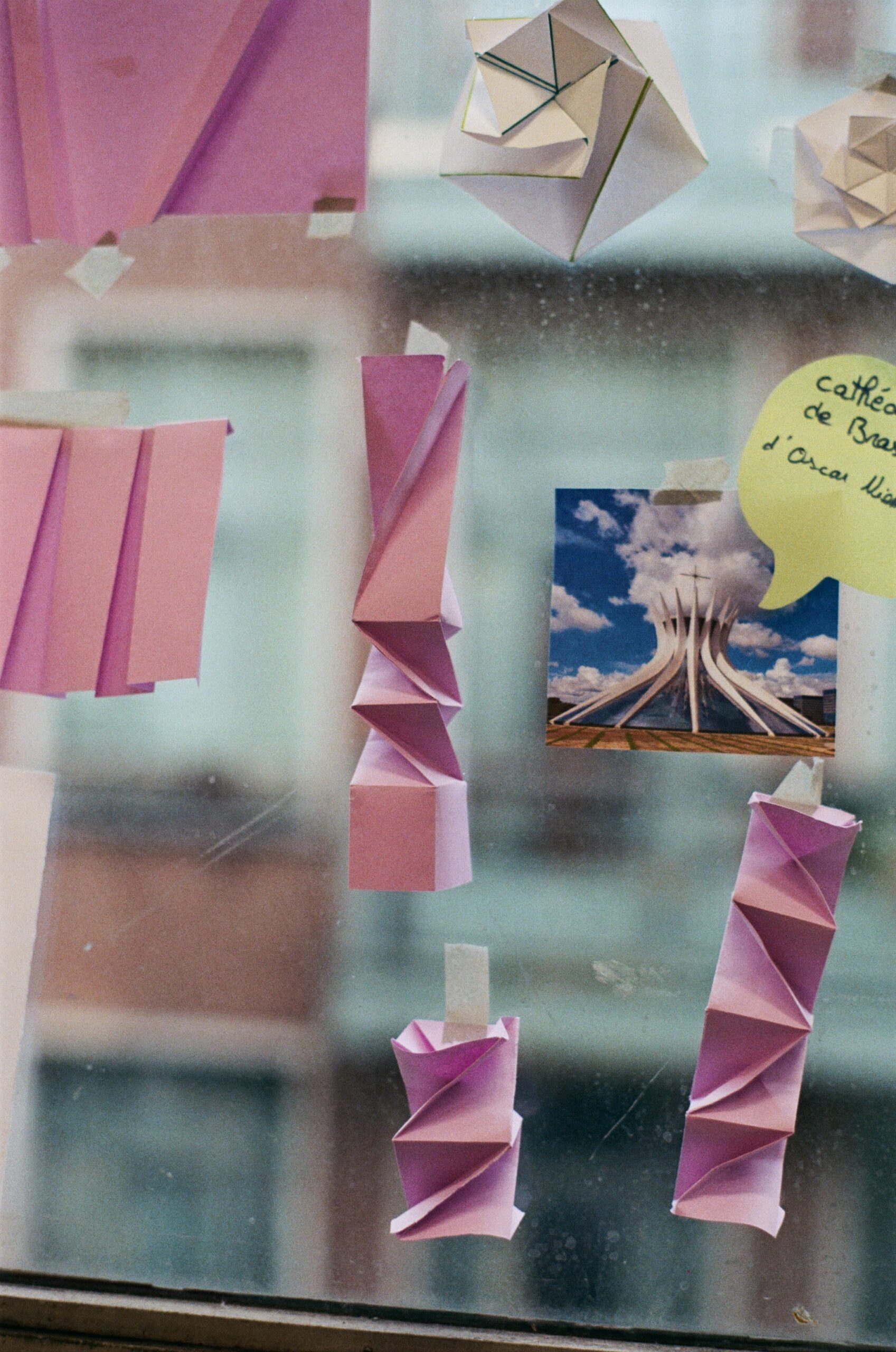
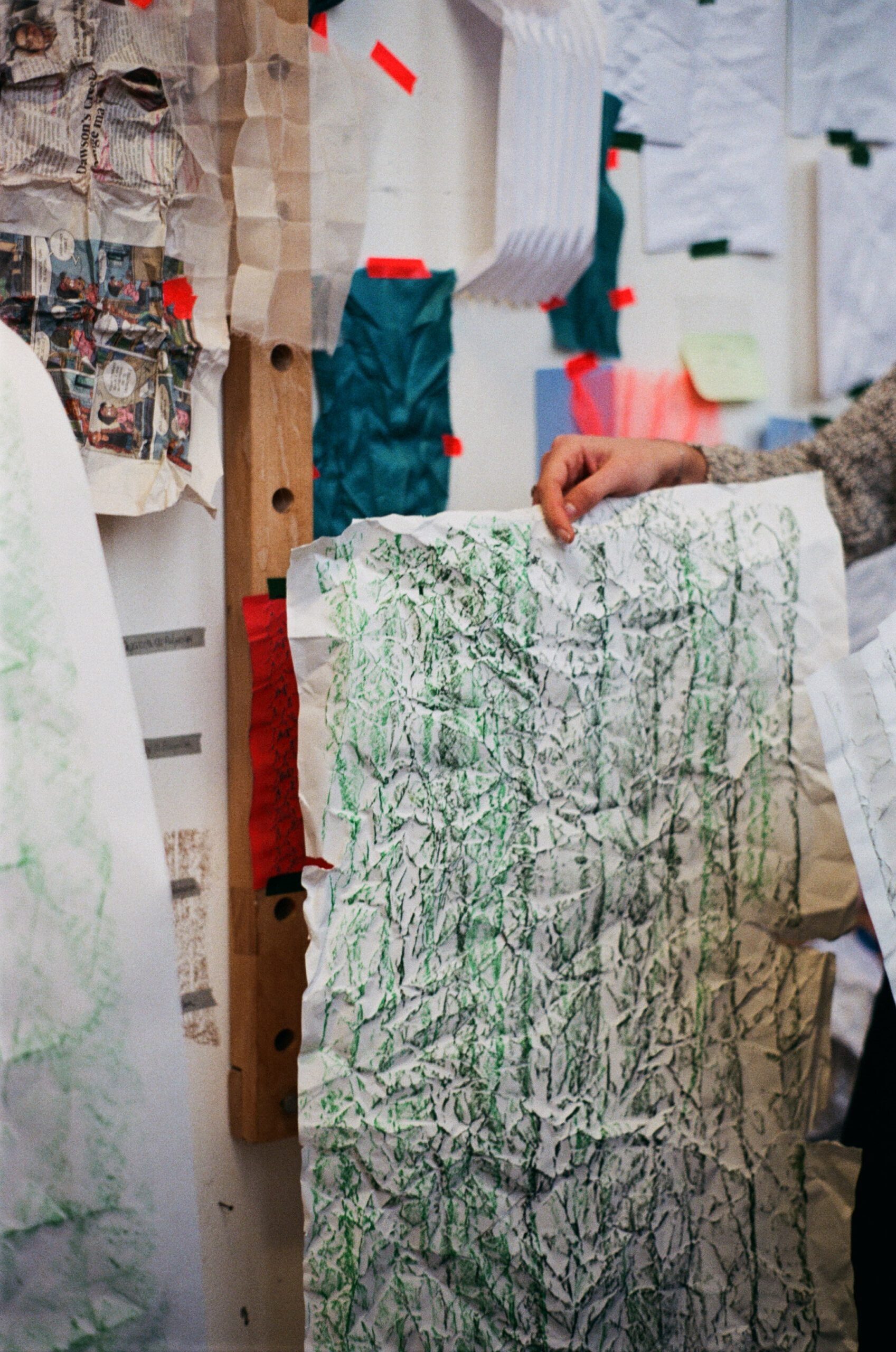

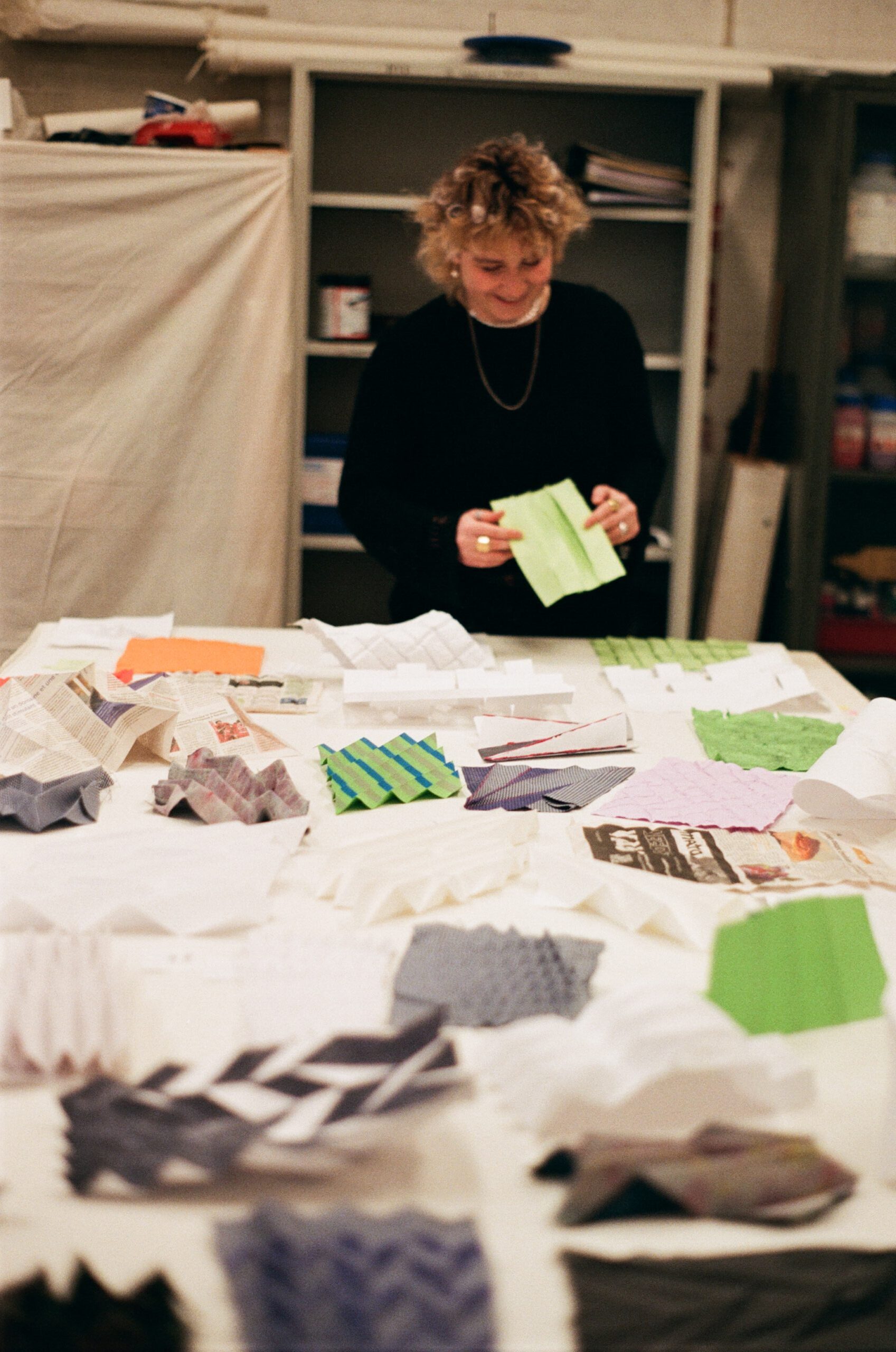

Butaco: stool.
Peludo: flurry, soft and woolly.
In this stool collaboration between Juan Pablo Plazas and Ana María Gómez the only rule is to try out something new with what we are familiar with. In other words, to take a step into the unexplored, together with found and old atelier materials.
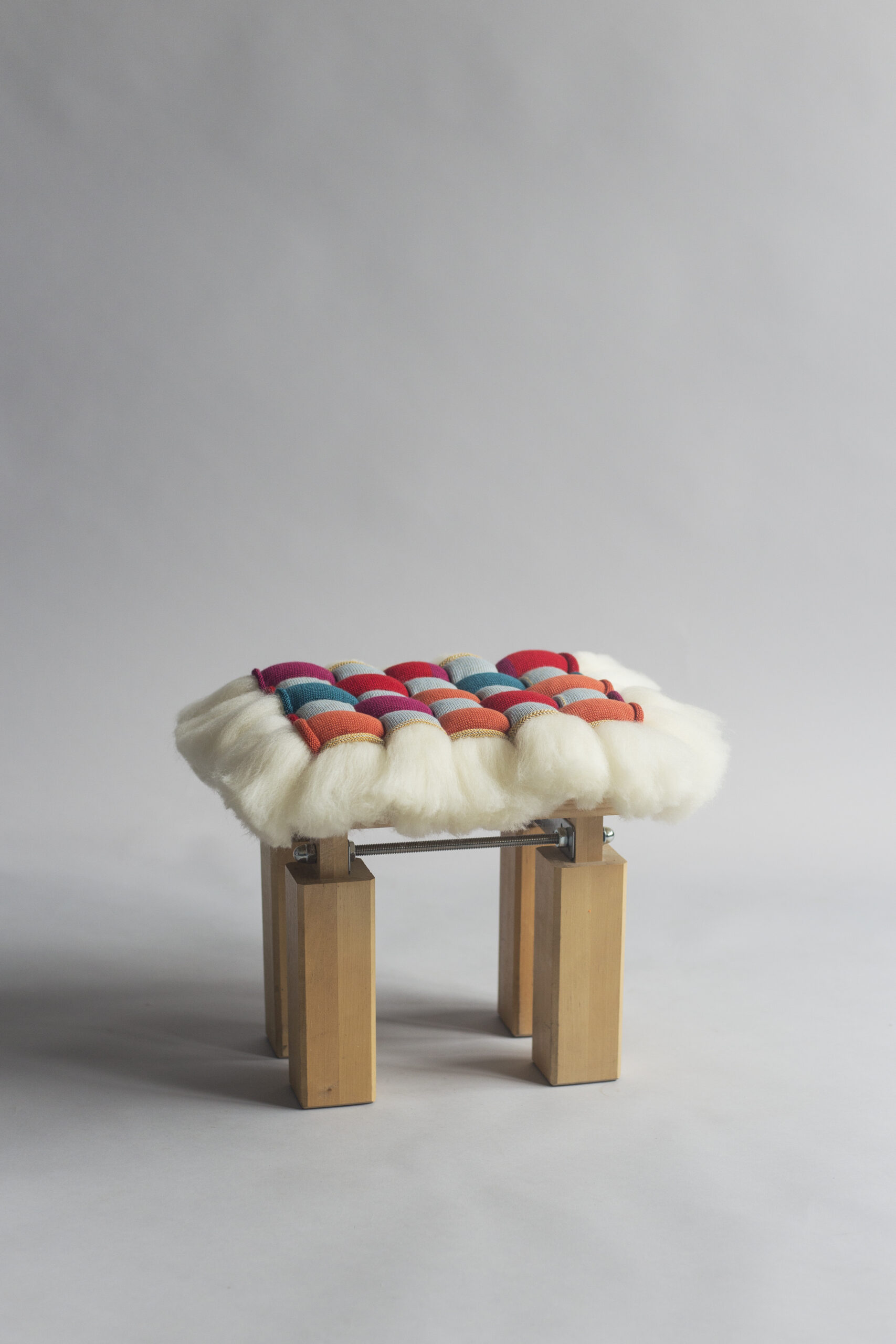

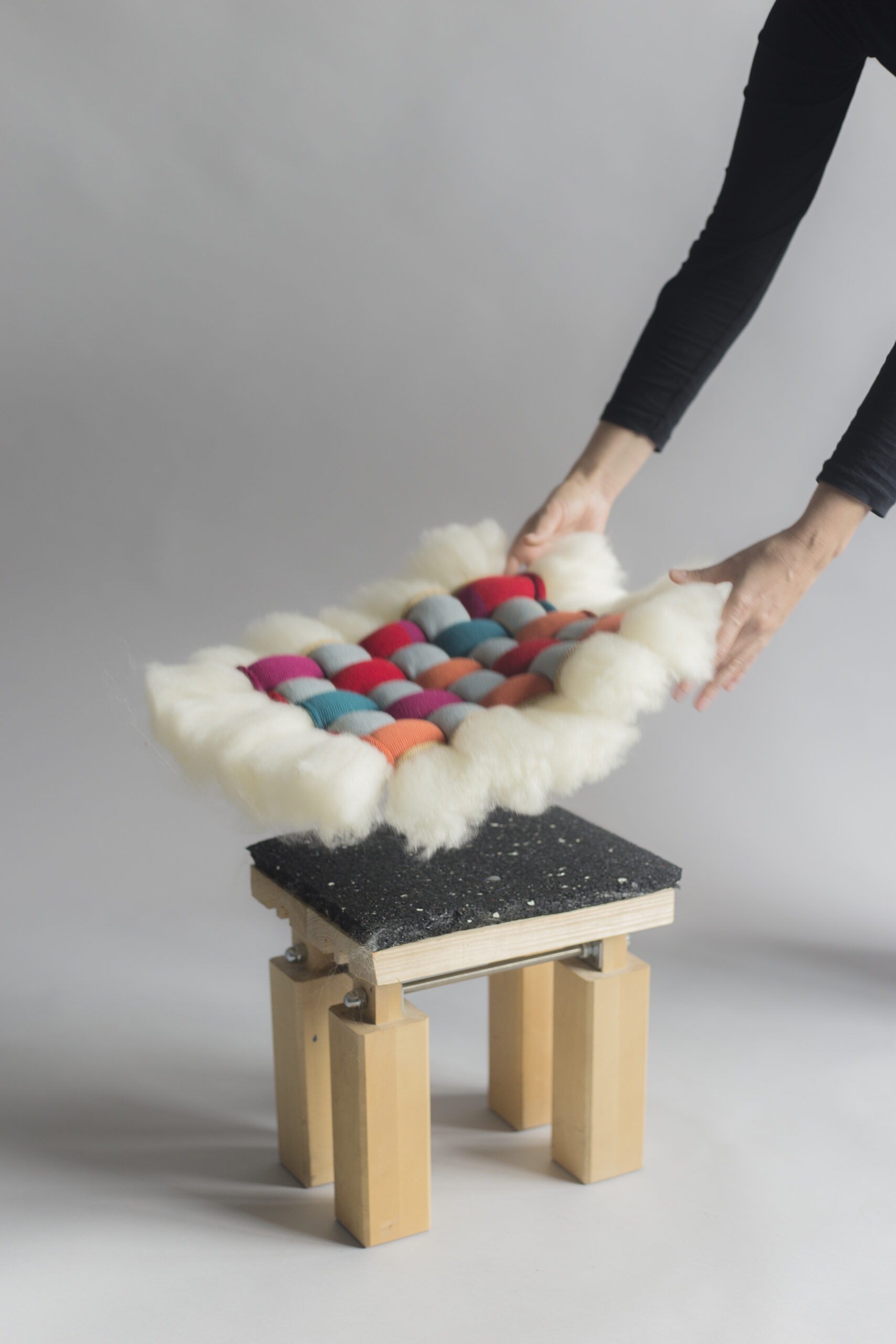
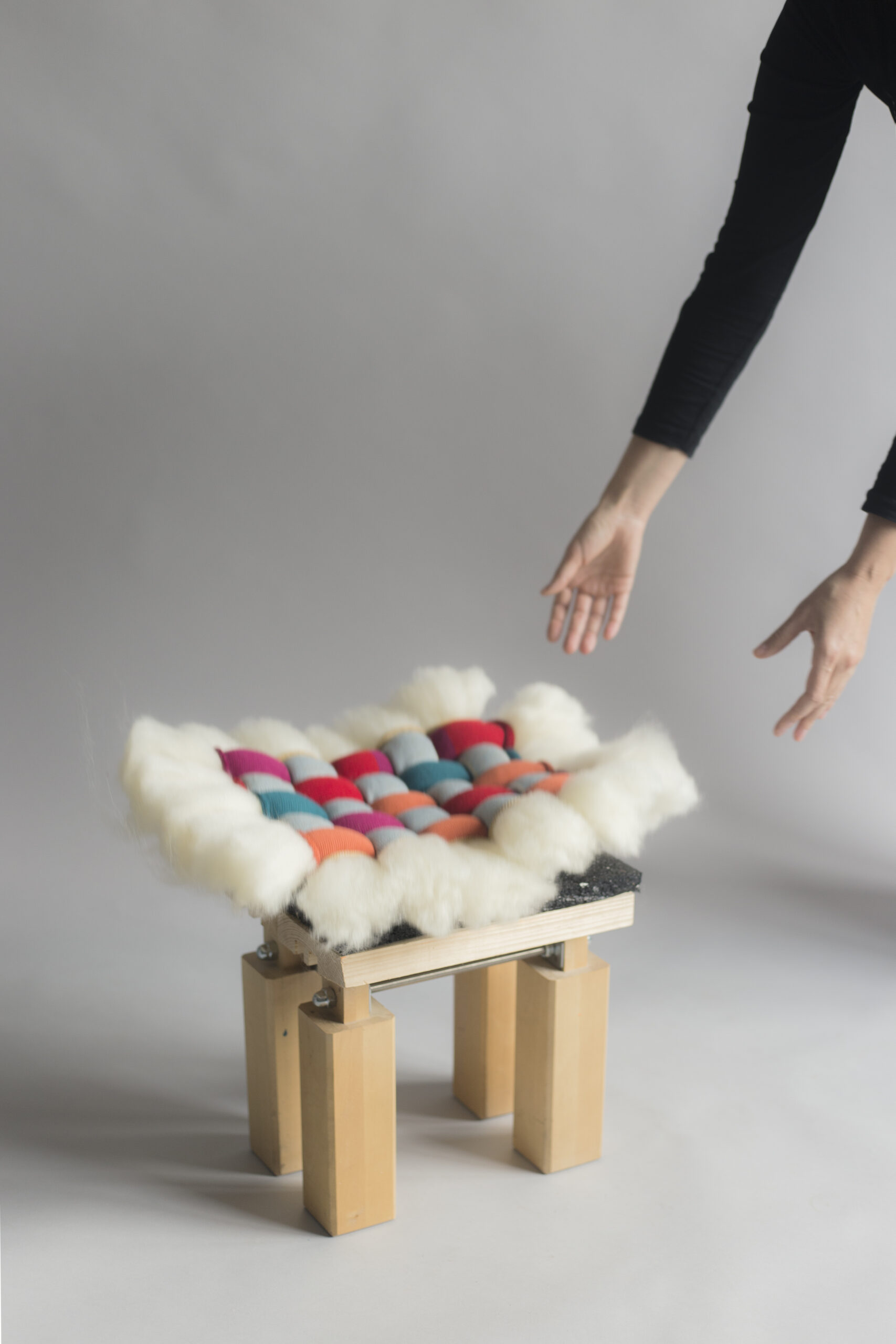

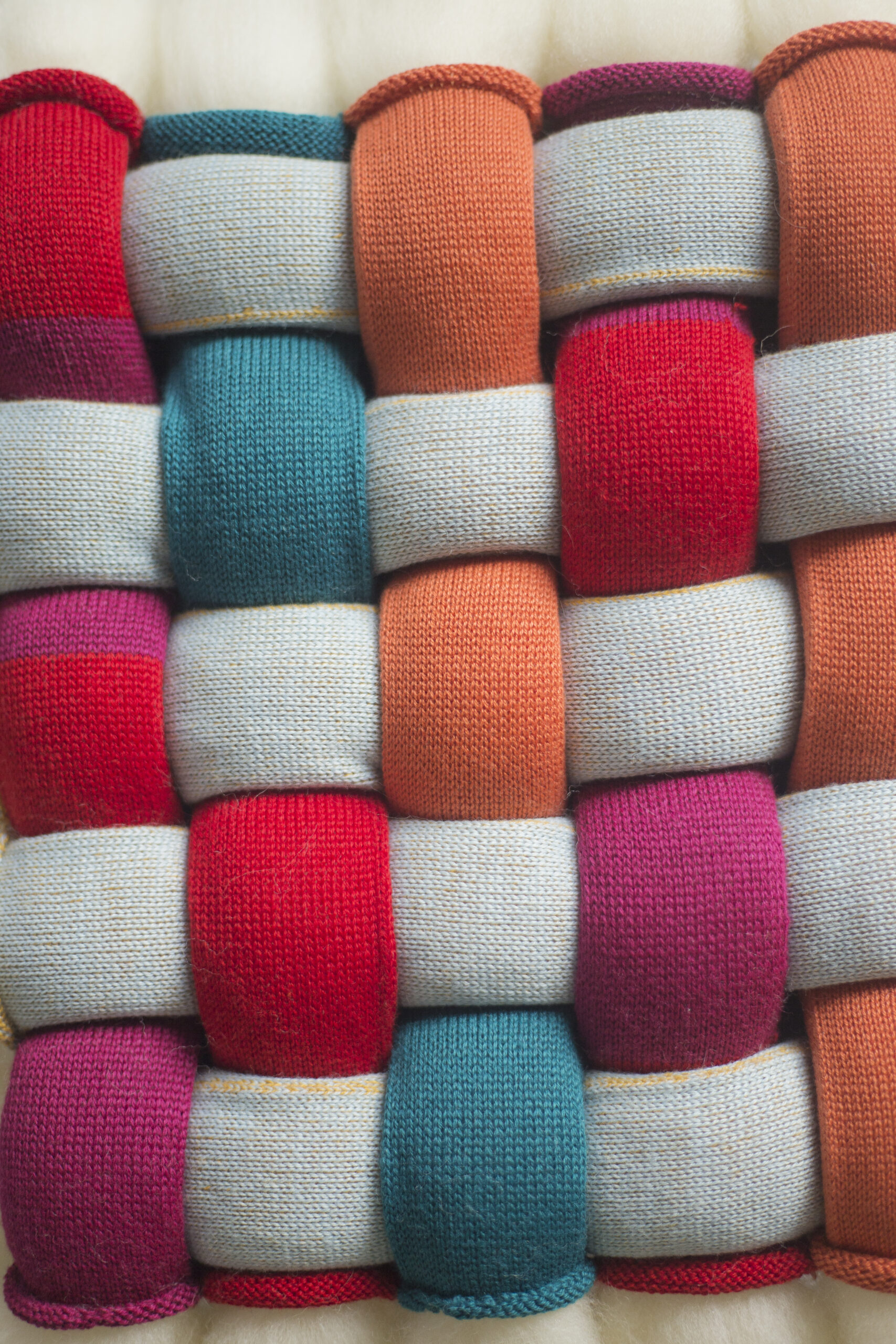
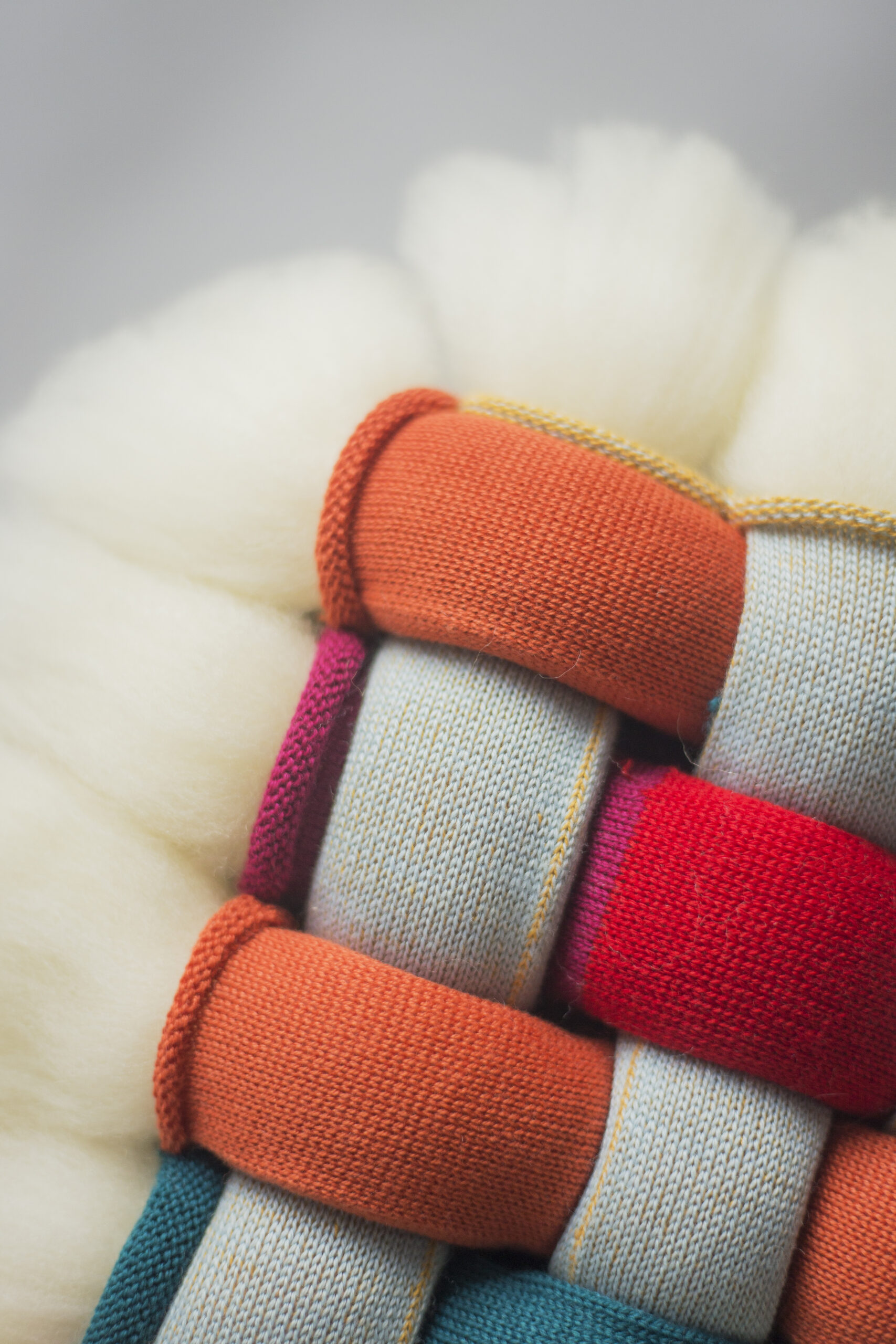
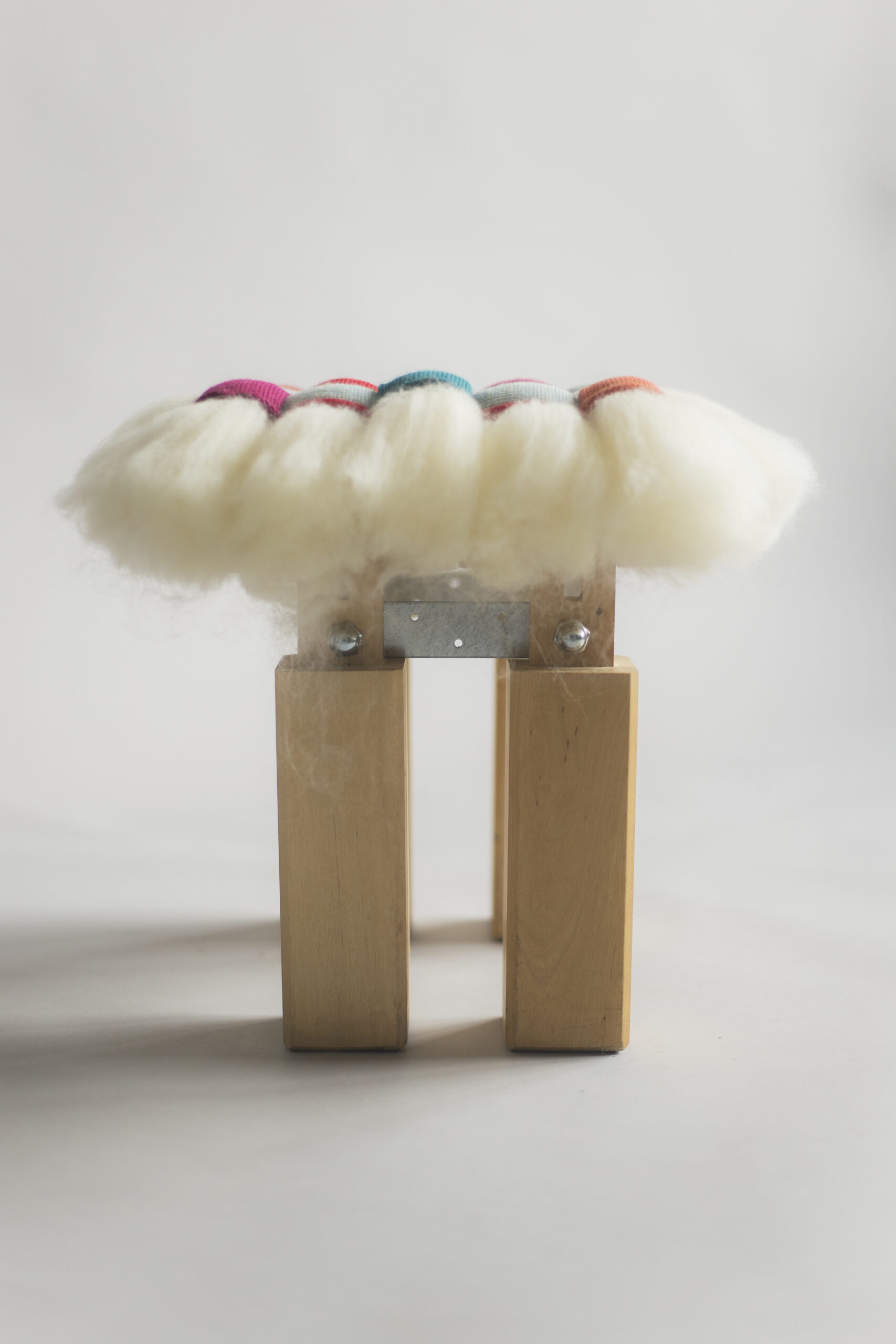

The European Cultural Institutes EUNIC Senegal and the
Delegation of the European Union (EU) in Senegal are
supporting Senegalese design and know-how with the
second edition of the KEUR DESIGN project.
I had the great opportunity of building a close
collaboration with Mamadou Keneme and Djalo Djambe,
they comes from traditional weavers family in Senegal.
They learned how to weave with the traditional handloom
Haal Pulaar.
Working with in particular Mamadou Kénéme was a great
and enriching experience. Mamadou and Djalo Djembe
(his assistant) were very generous, open to new dialogues,
and to experiment with new ideas, materials and ways
of doing textile. We learn a lot of each other, not only in
work matters but also in a human level. I think it is very
important to have this kind of encounters and exchanges
between different points of view, backgrounds and
practices.

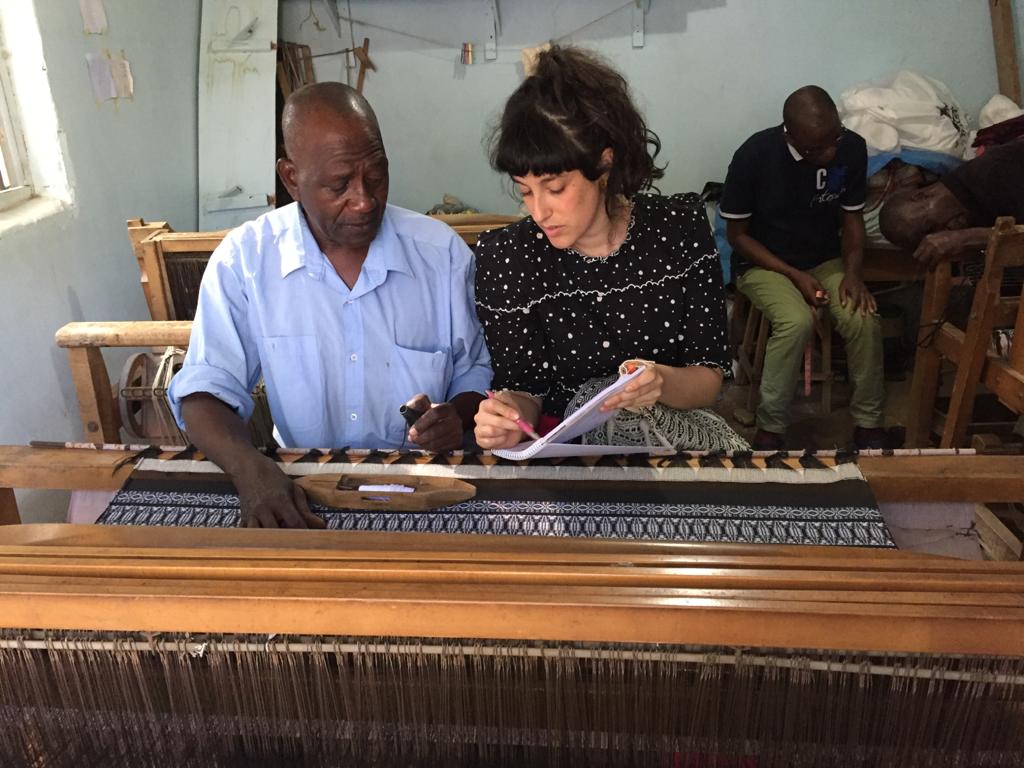
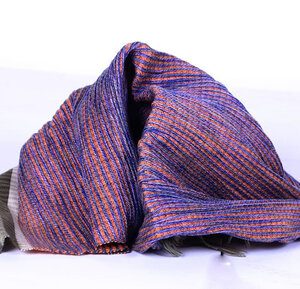

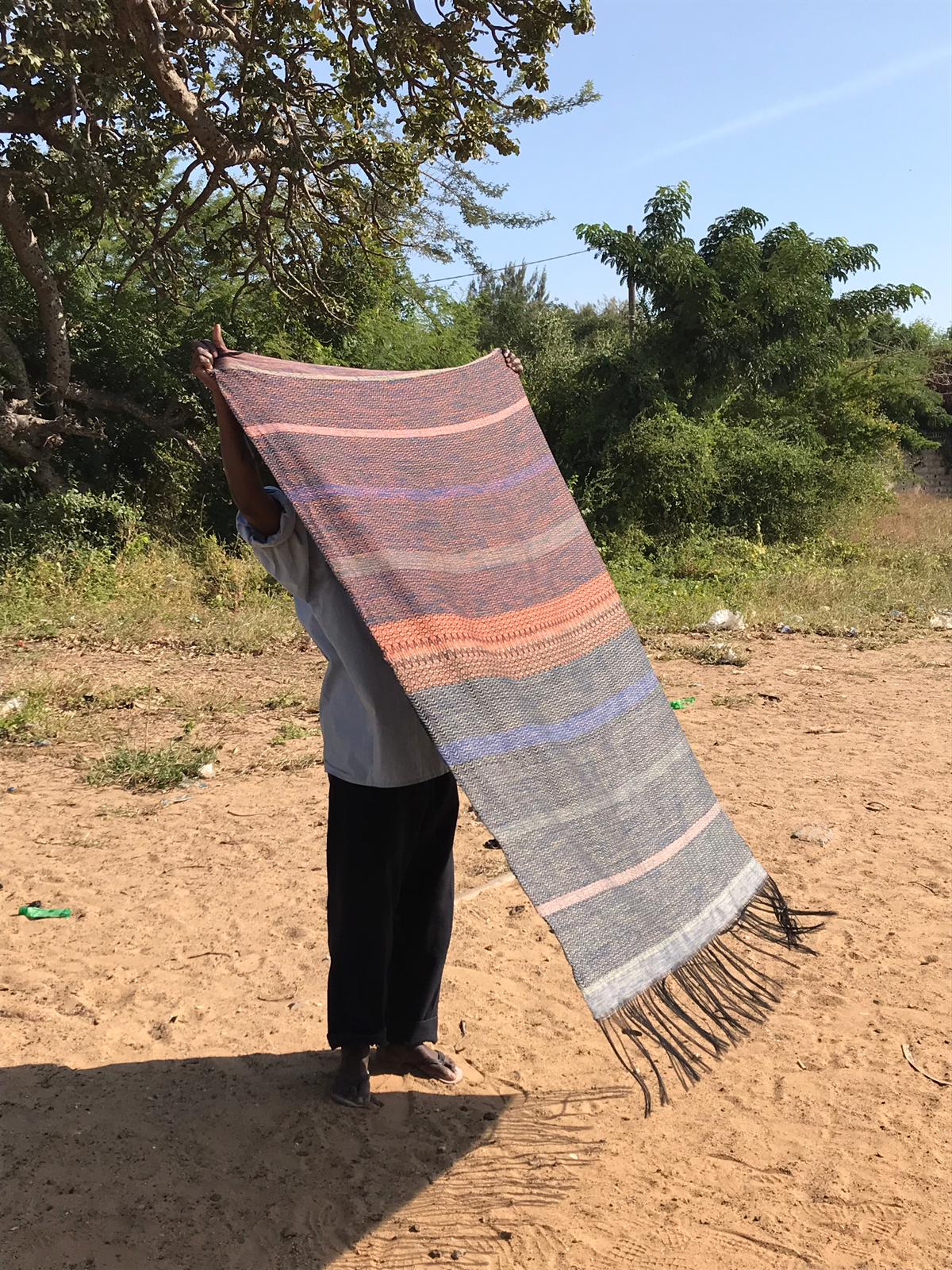
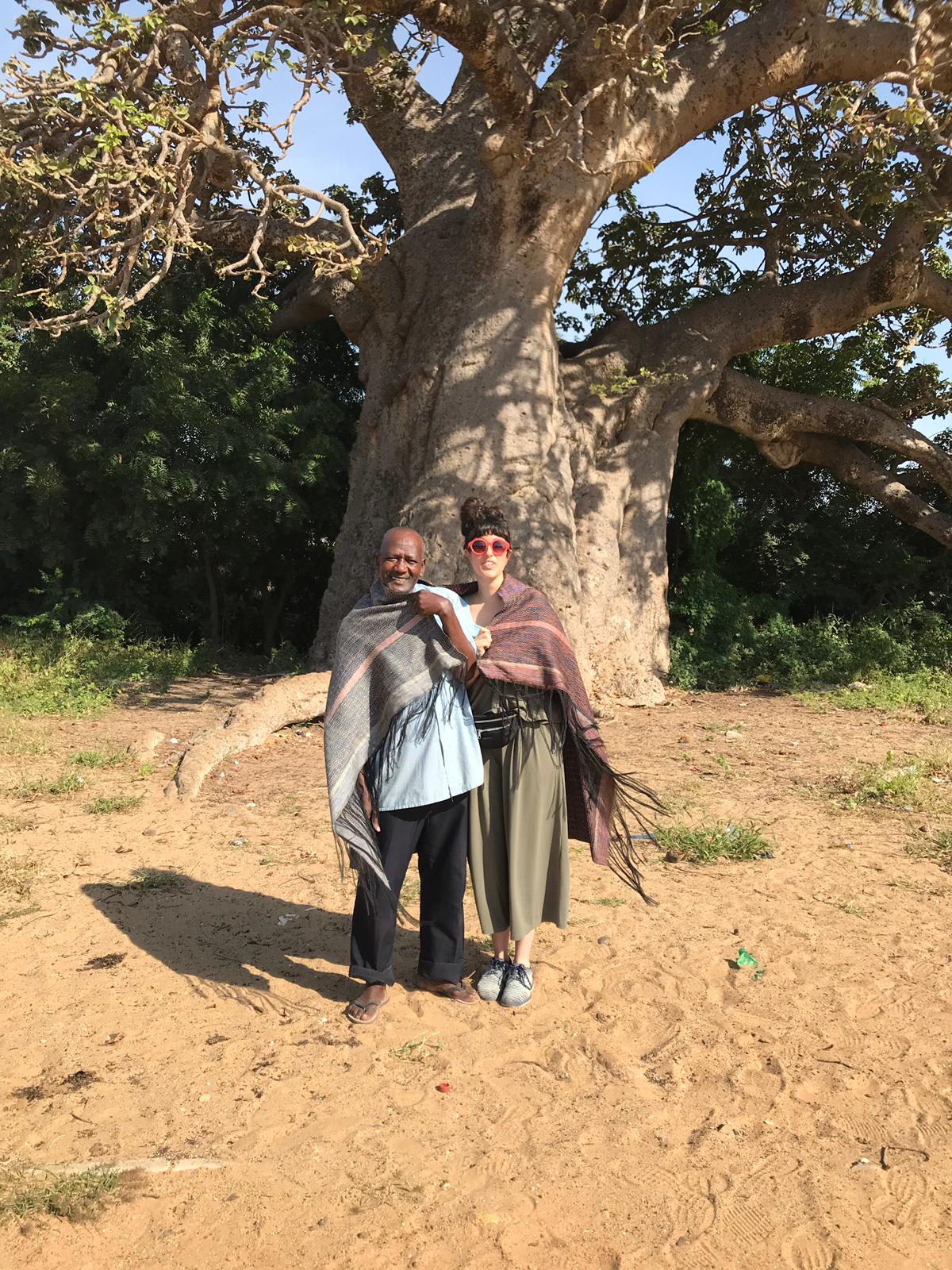
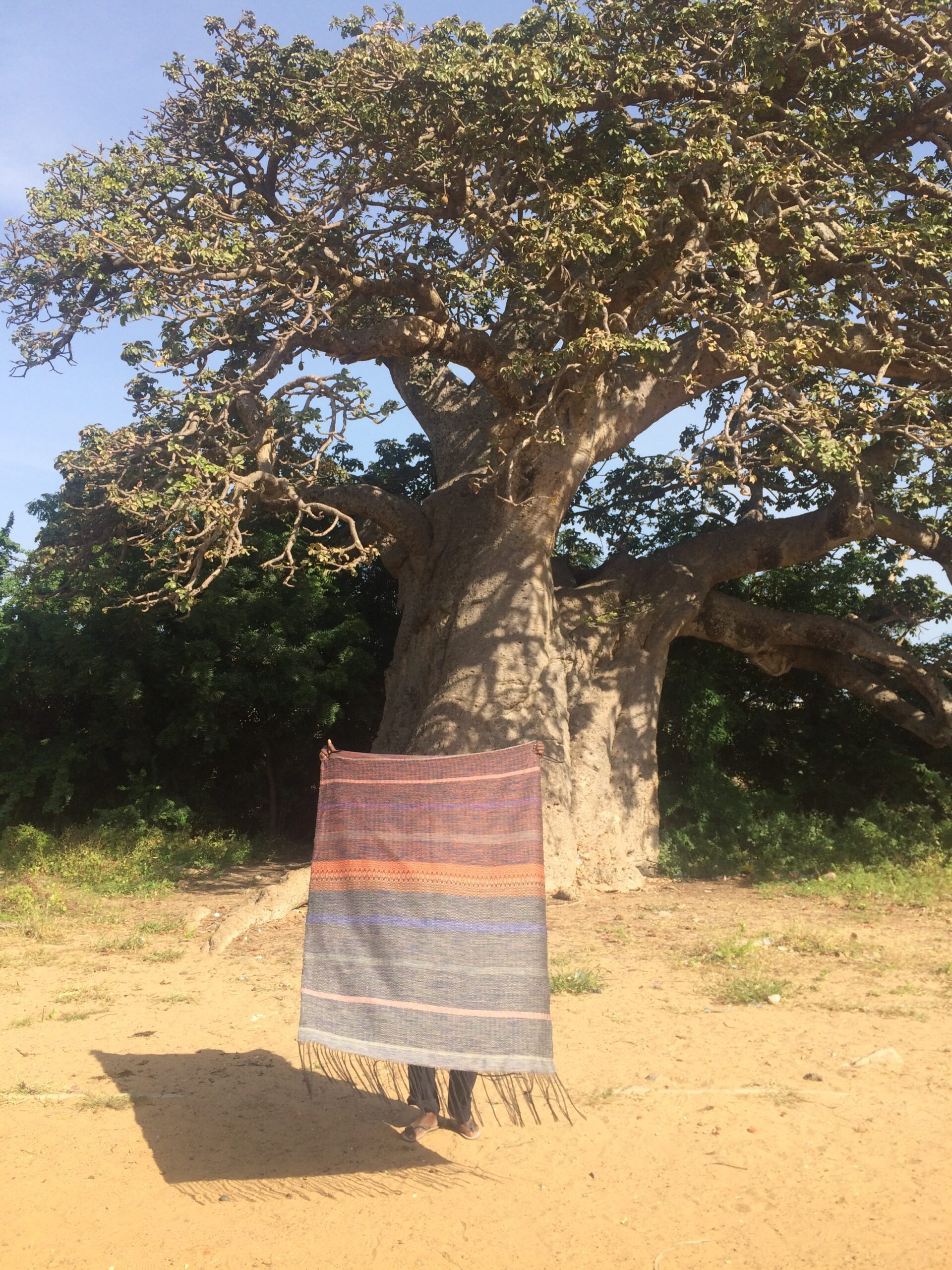
Explore my Dakar journey through these works-in-progress and experiences. Each piece offers a unique glimpse into my creative process, collectively building toward the final result.

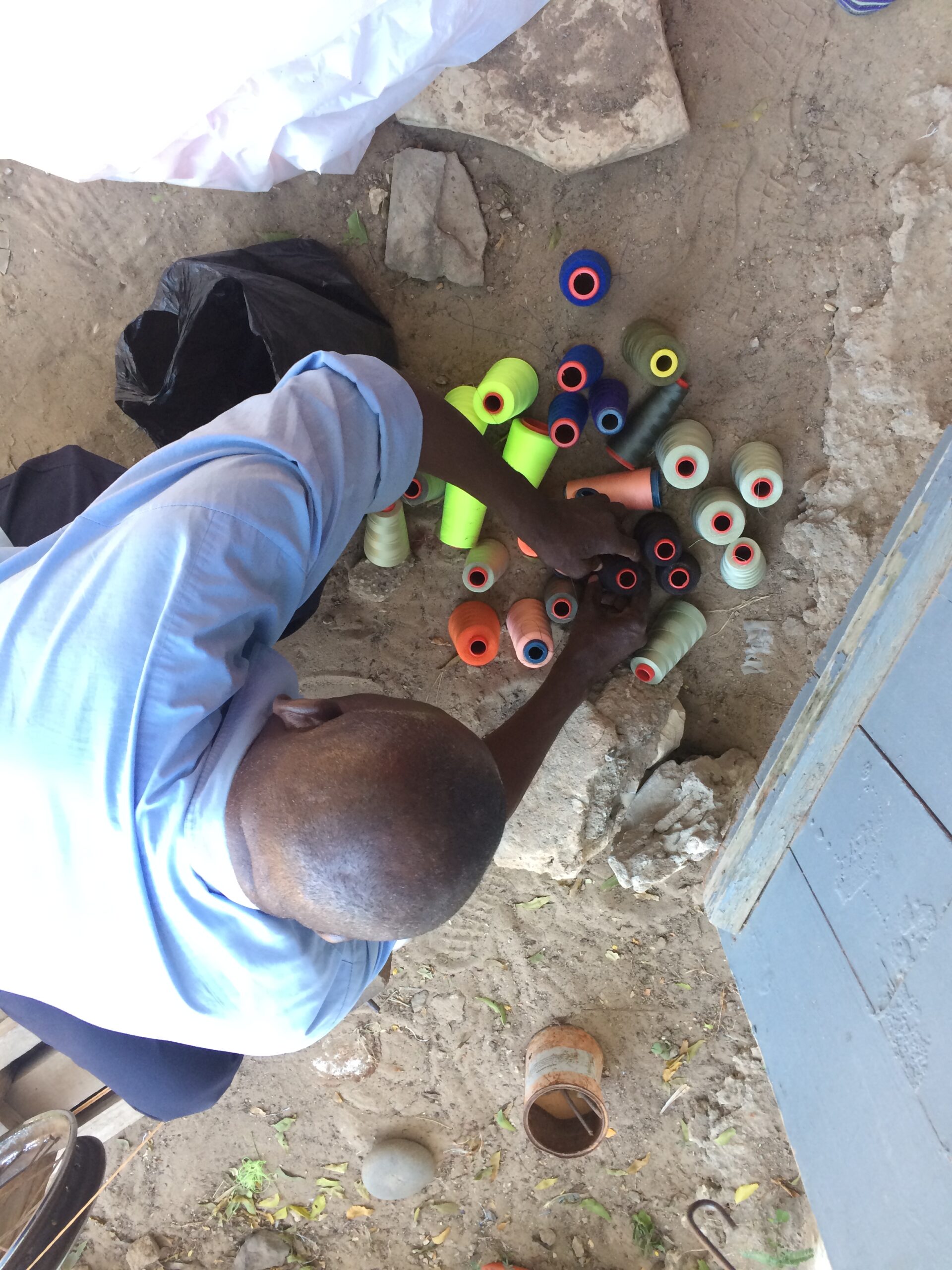

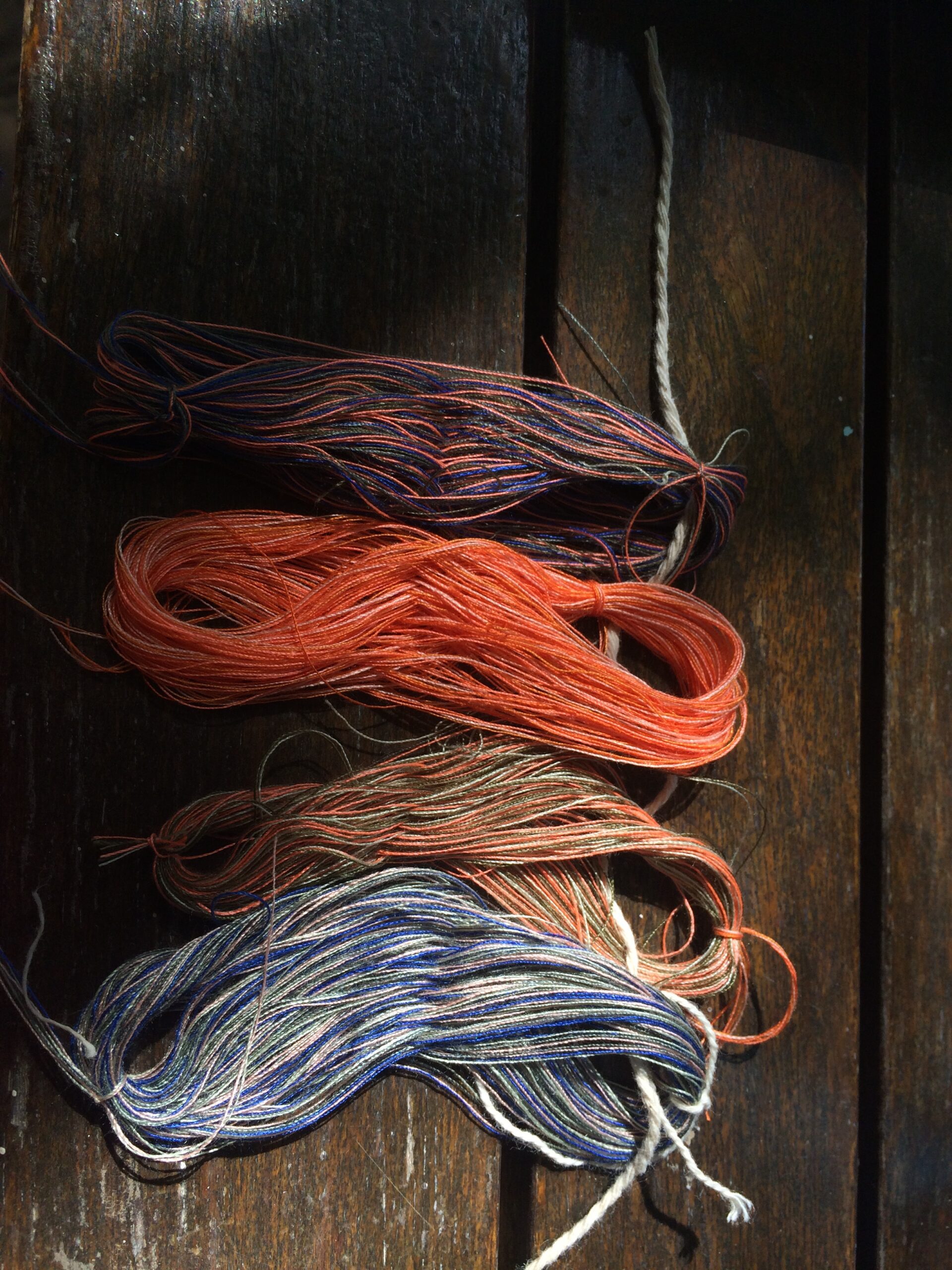

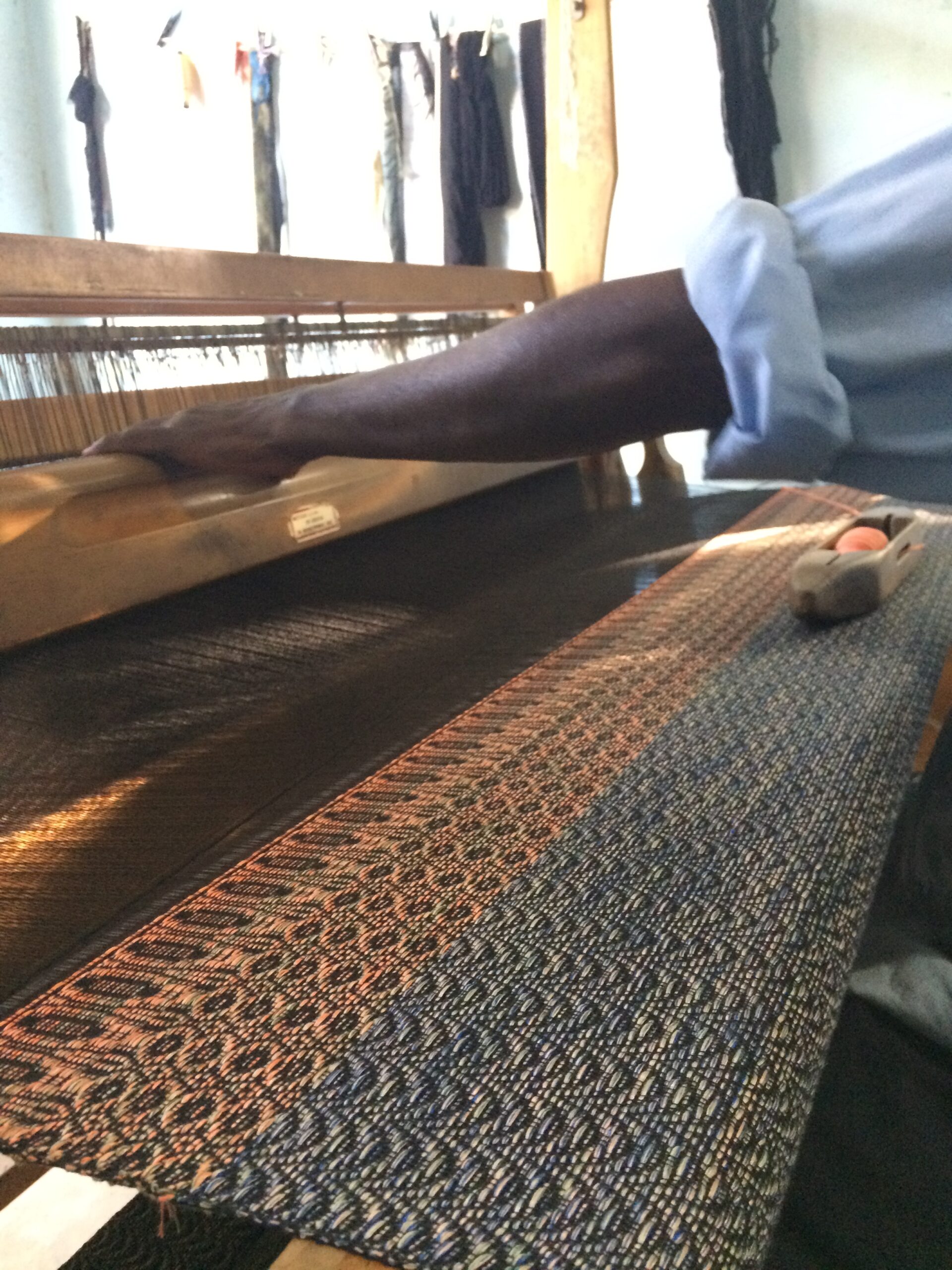
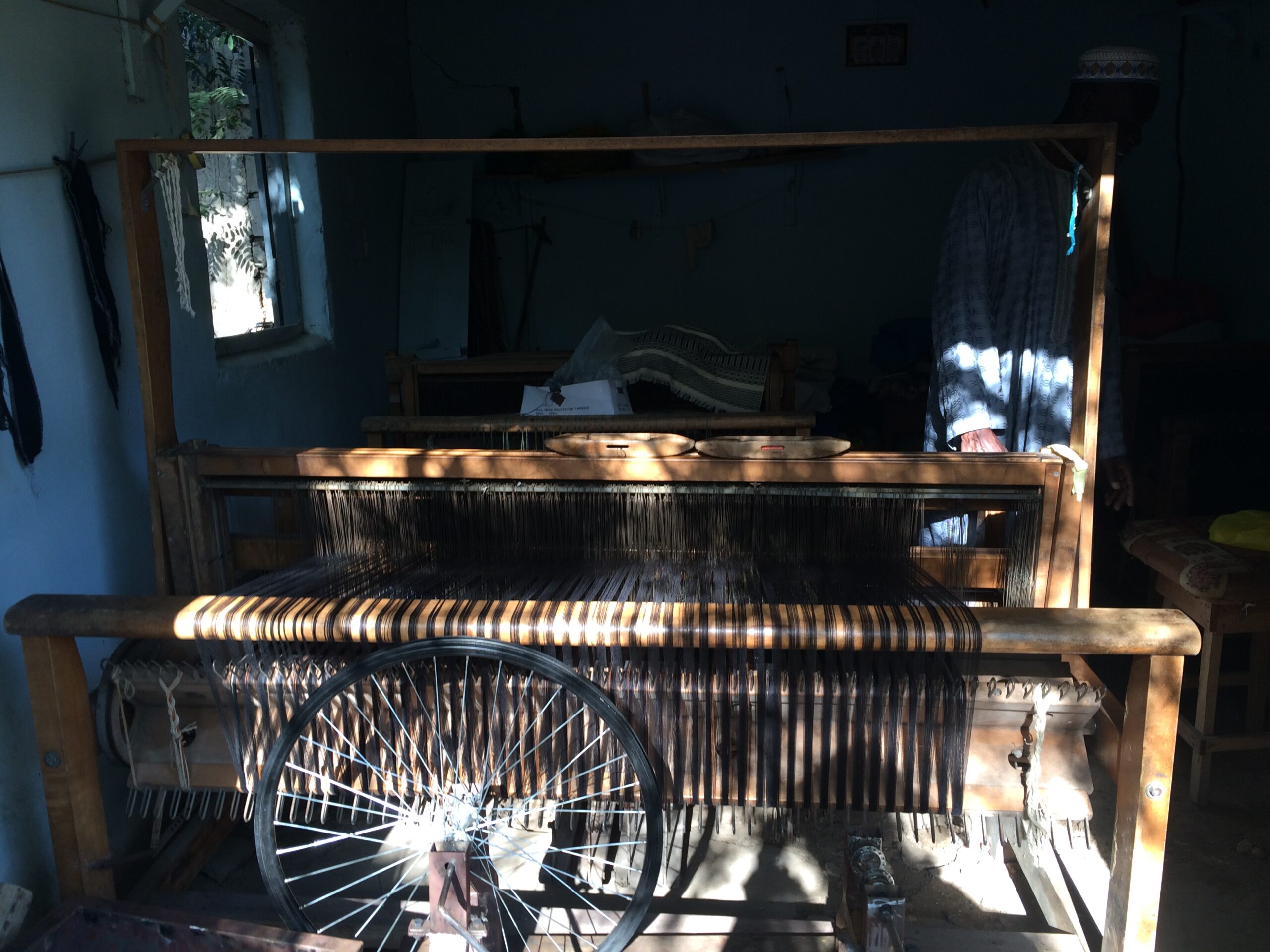
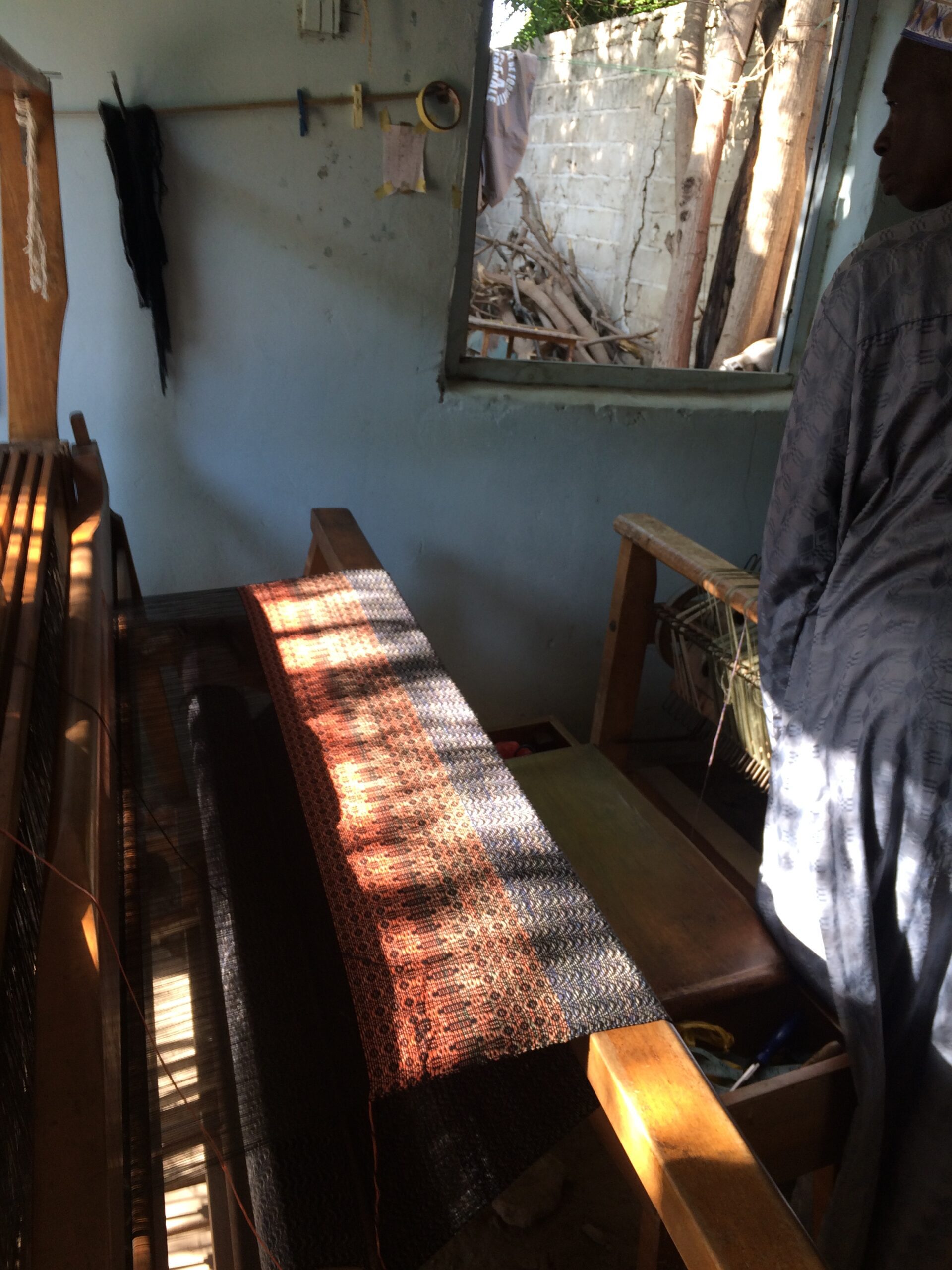


In 2014, as part of the Atelier de Textile Design à Abomey in Benin, Africa, I had the privilege of collaborating closely with traditional weavers in the region. Our goal was to explore their profound textile knowledge—particularly the ancestral know-how passed down through generations of artisans. For the weavers, the workshop became a space to critically reflect on their creative agency and reimagine their role within the evolving landscape of textile production.
The outcomes of these collaborative experiments were showcased at the 11th Dakar Biennale (Dak’Art 2014) in Senegal.
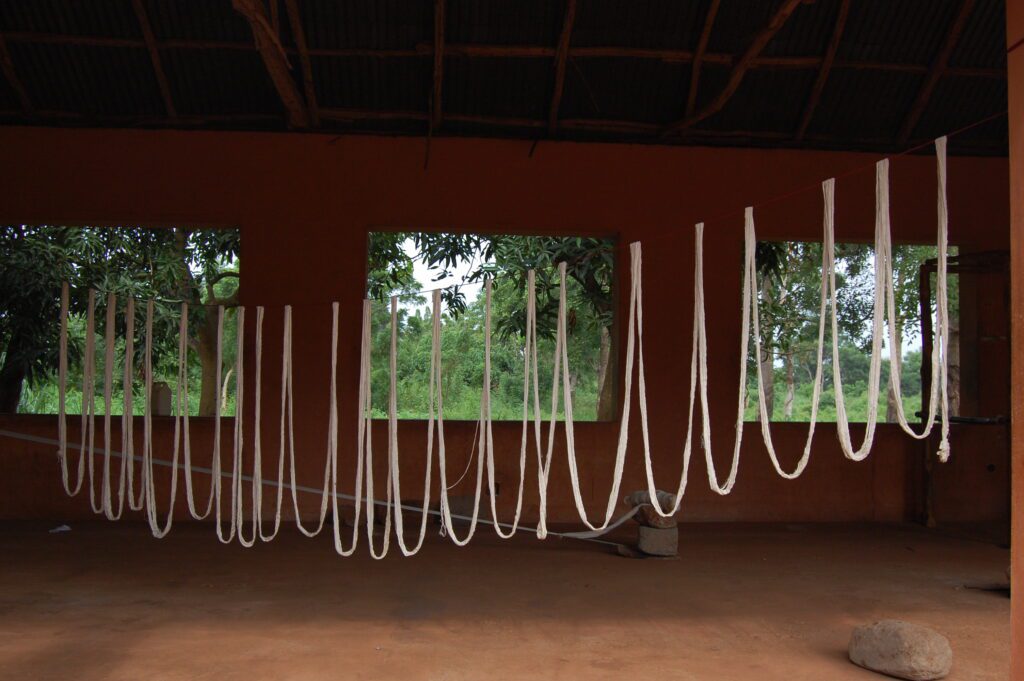
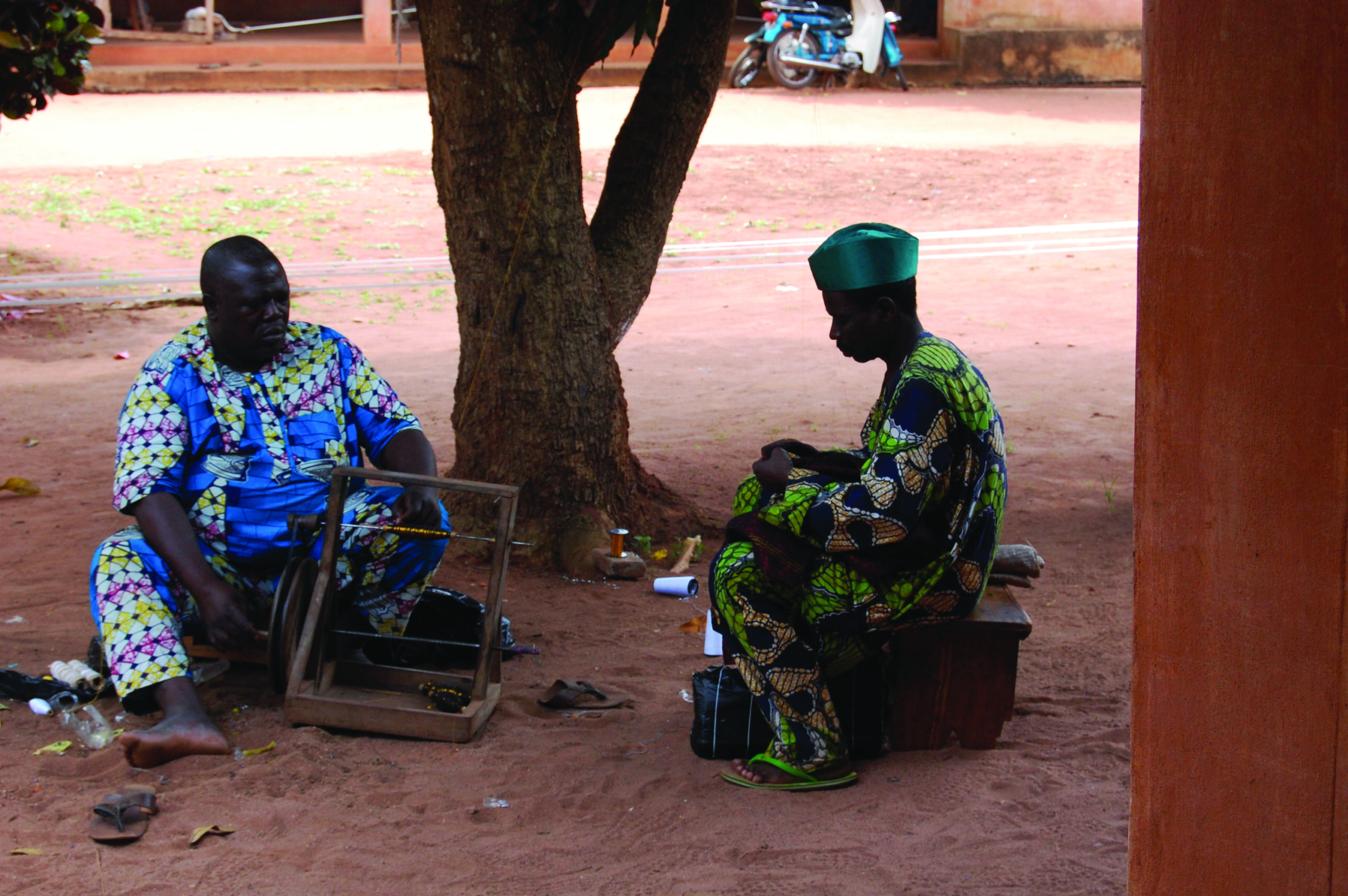
Explore my Benin journey through these works-in-progress and experiences. Each piece offers a unique glimpse into my creative process, collectively building toward the final result.
